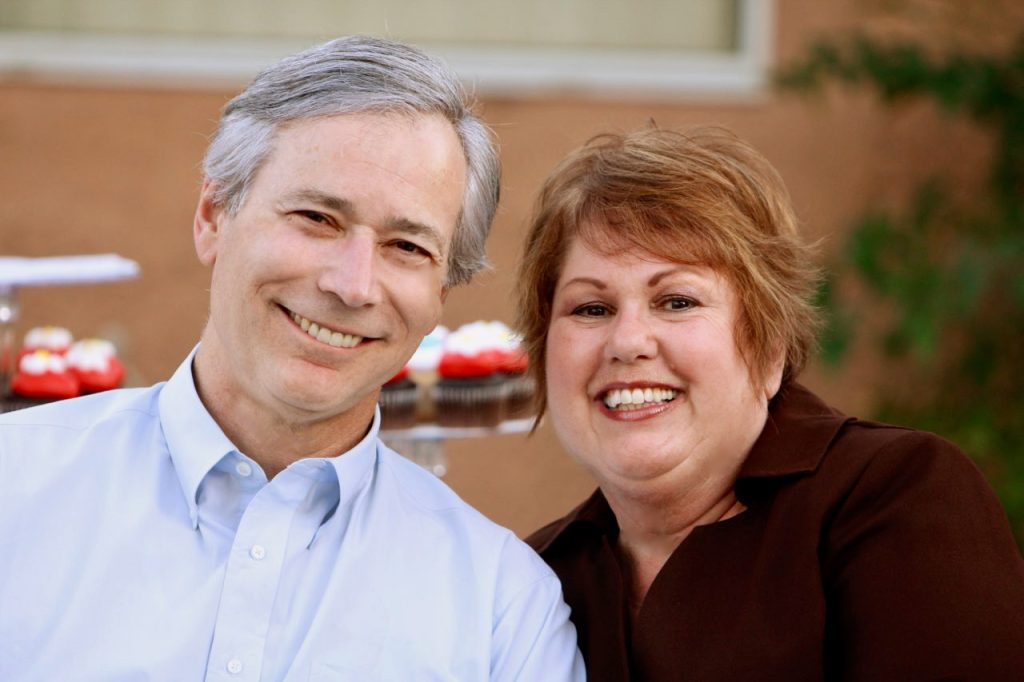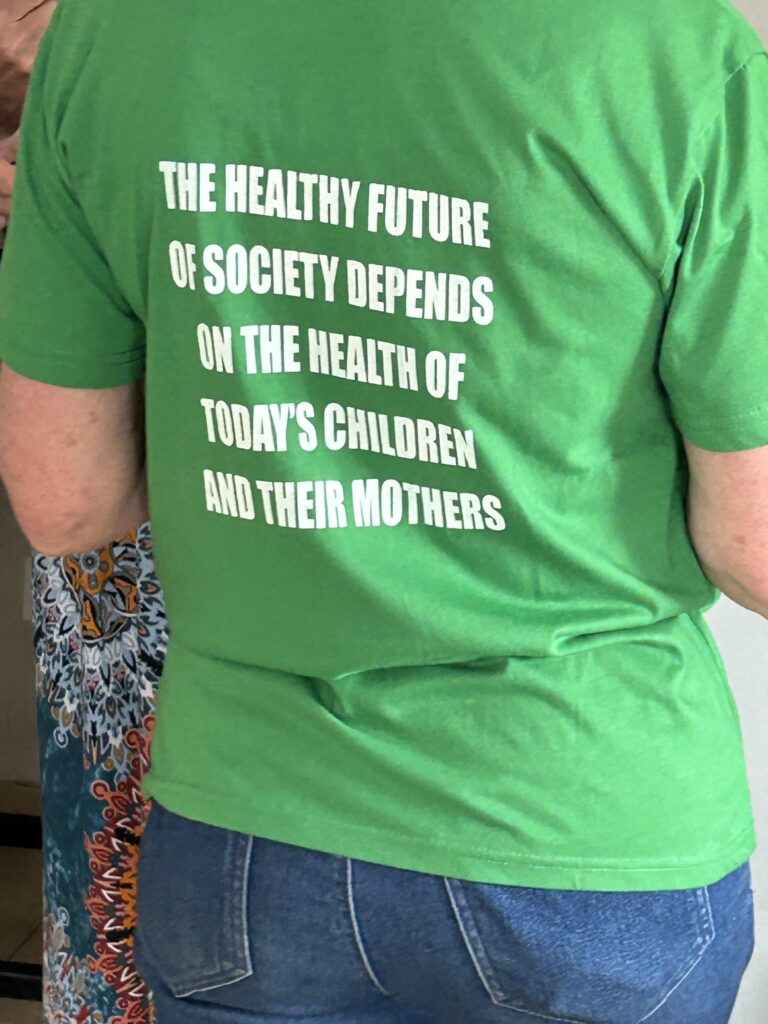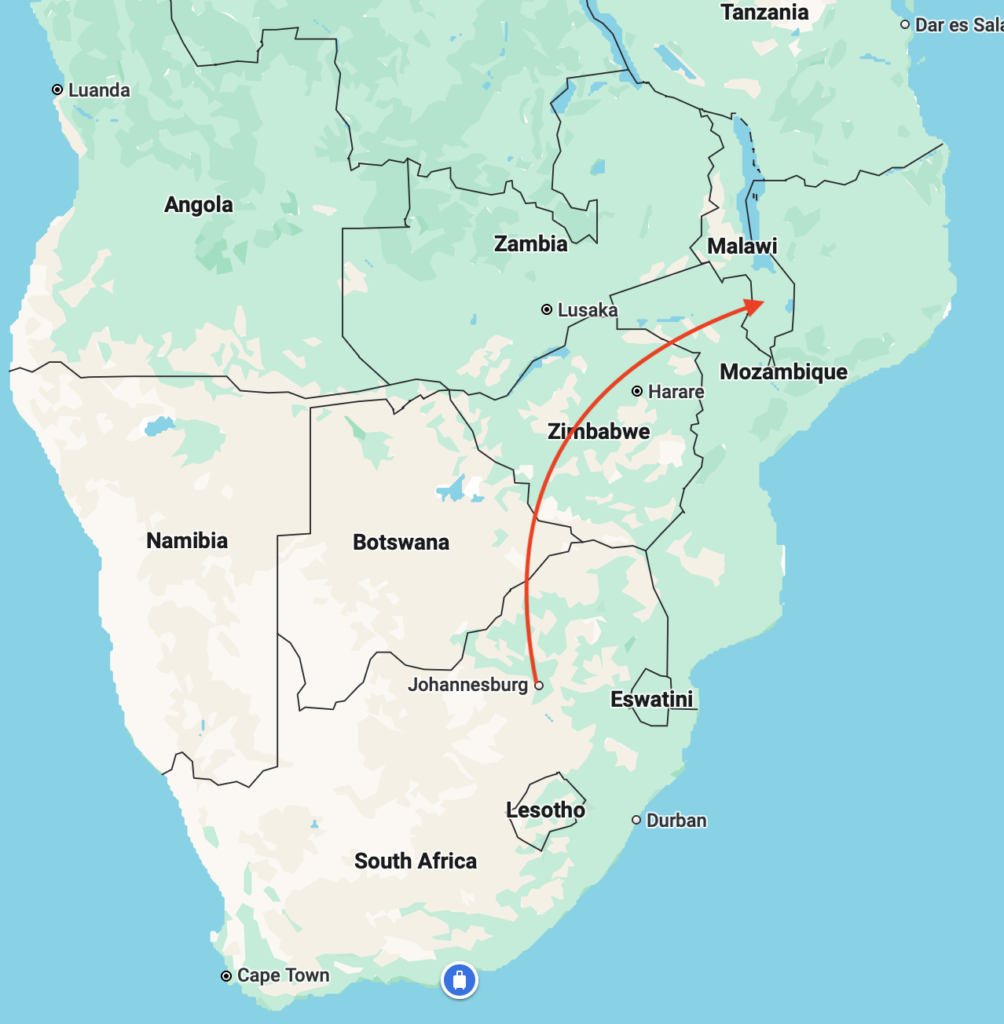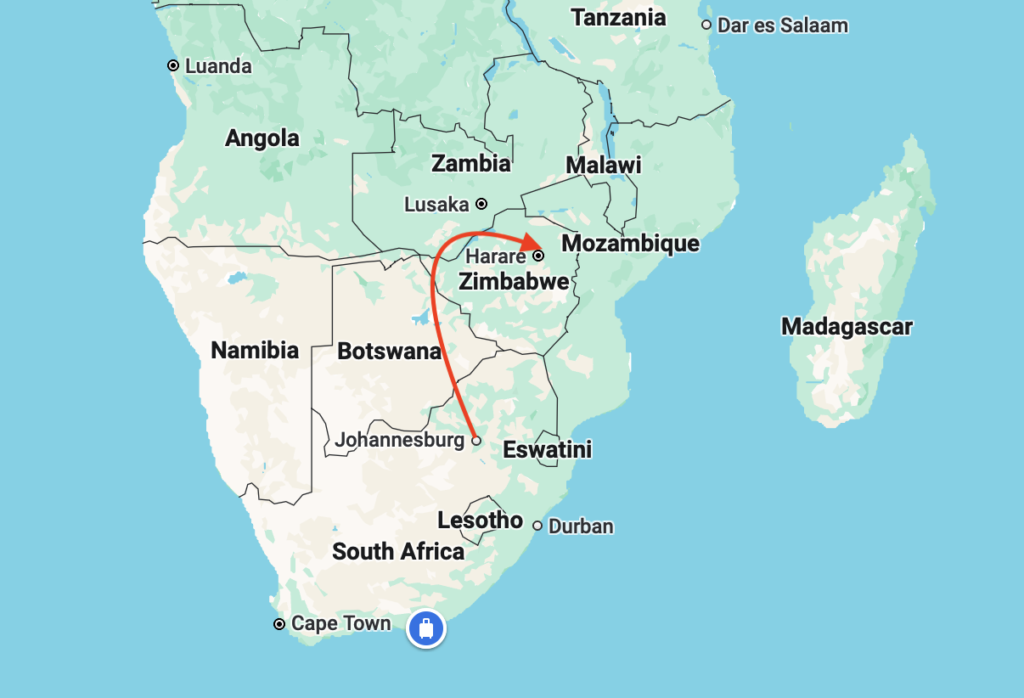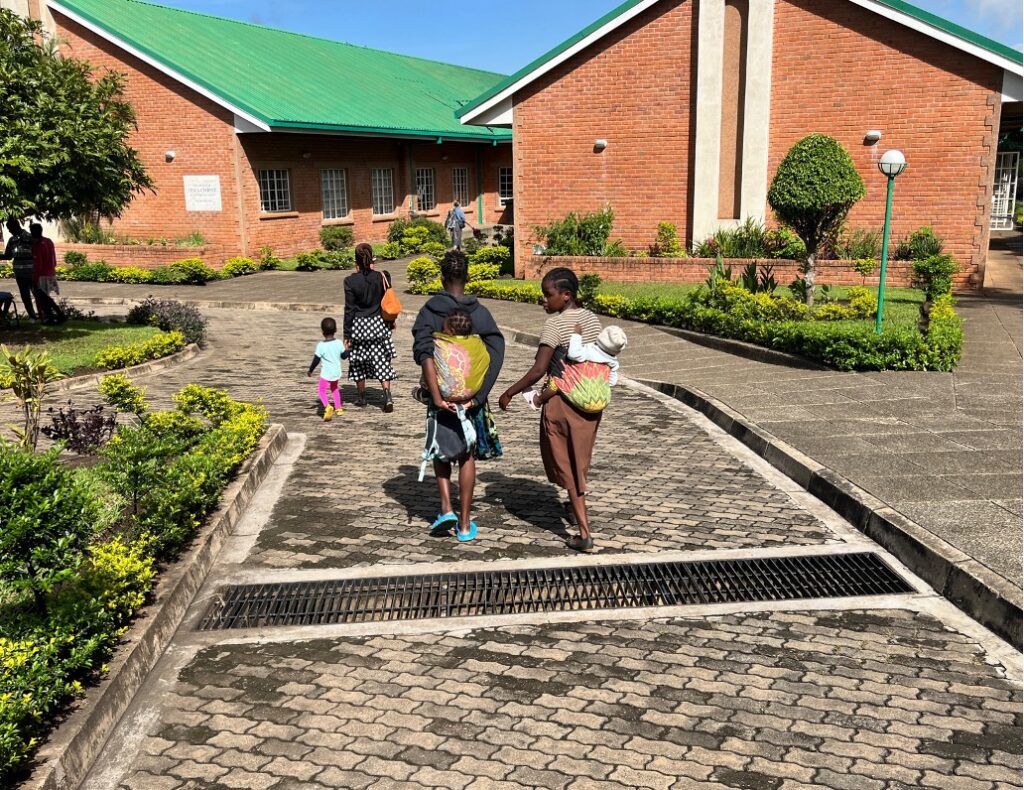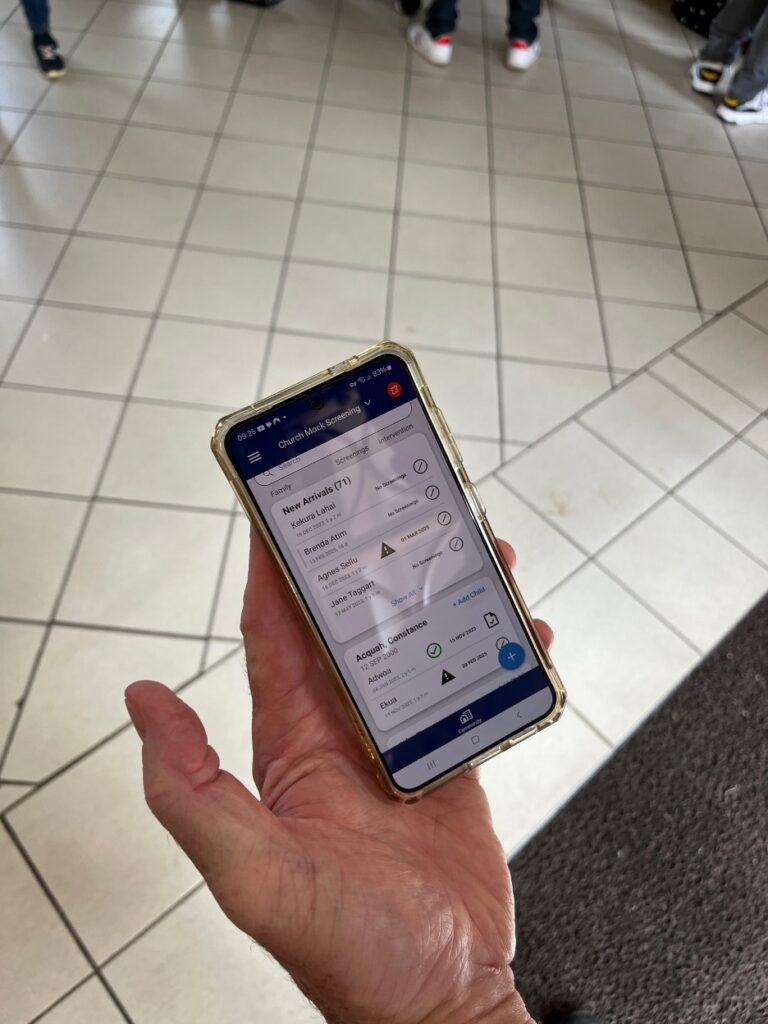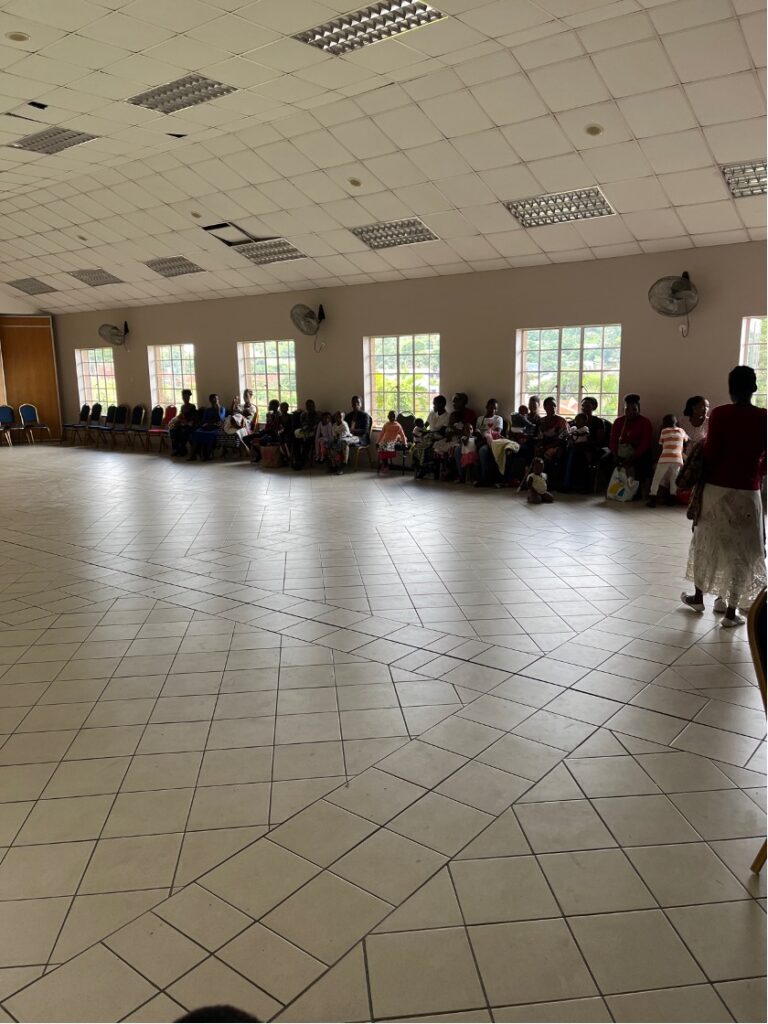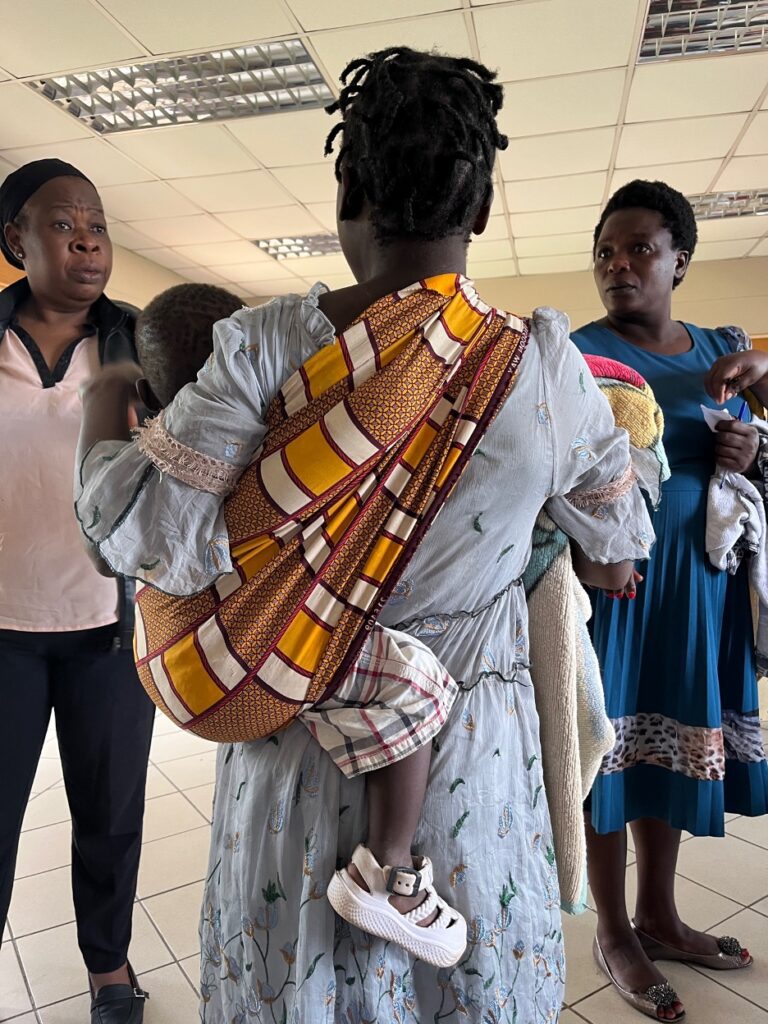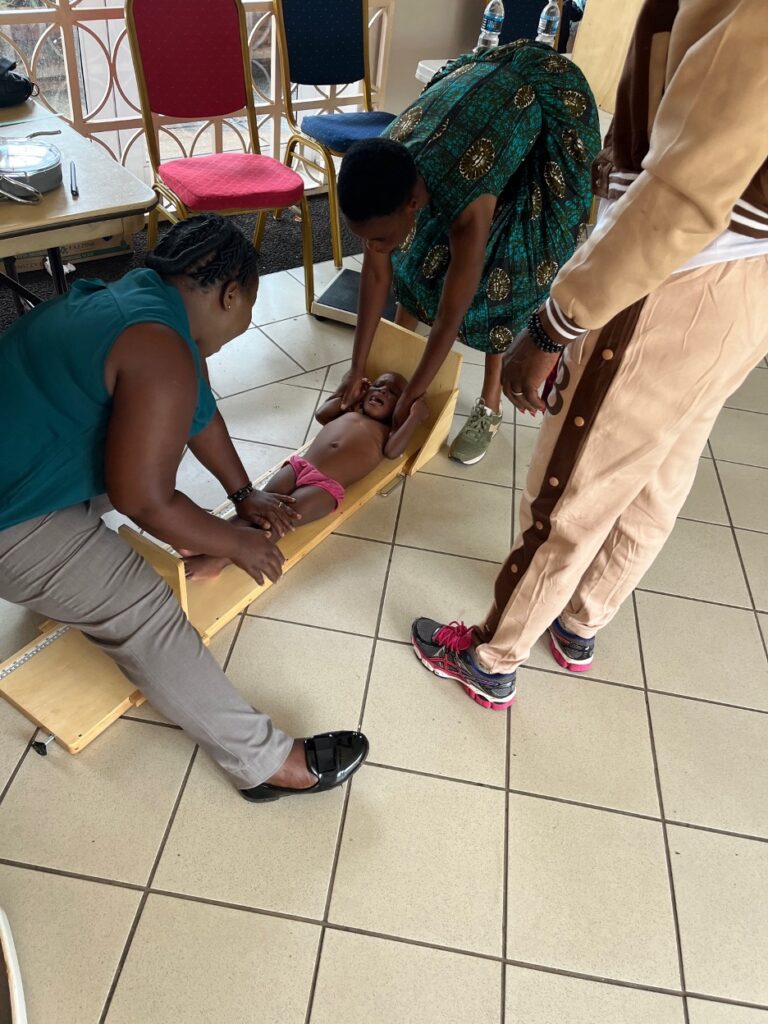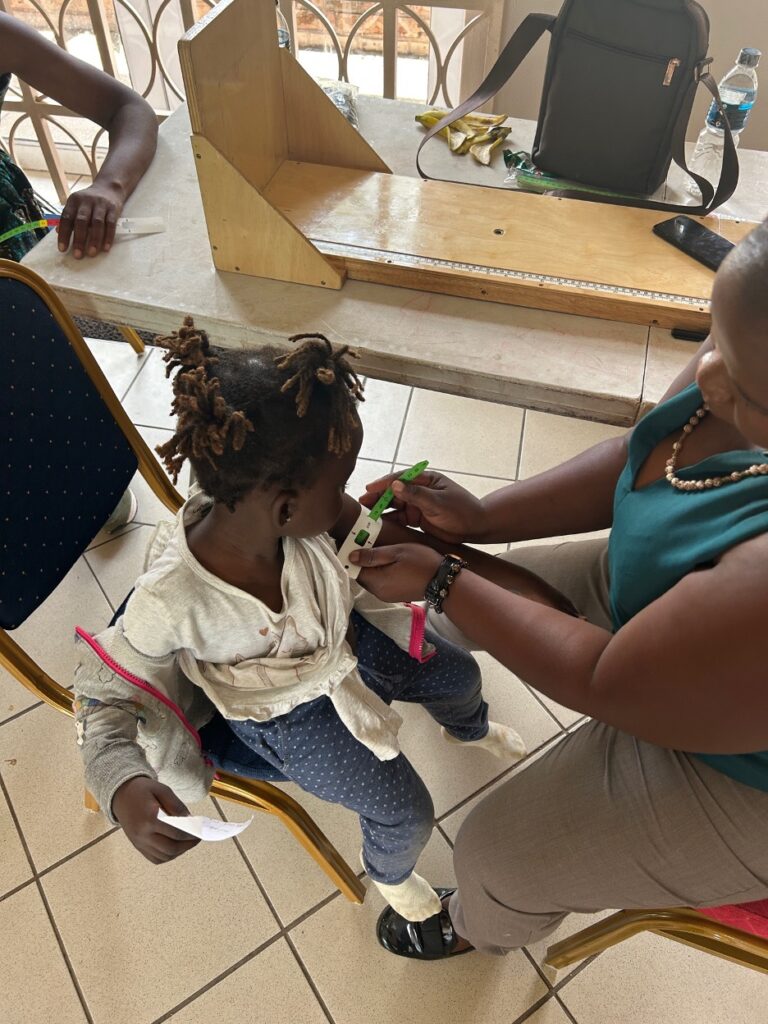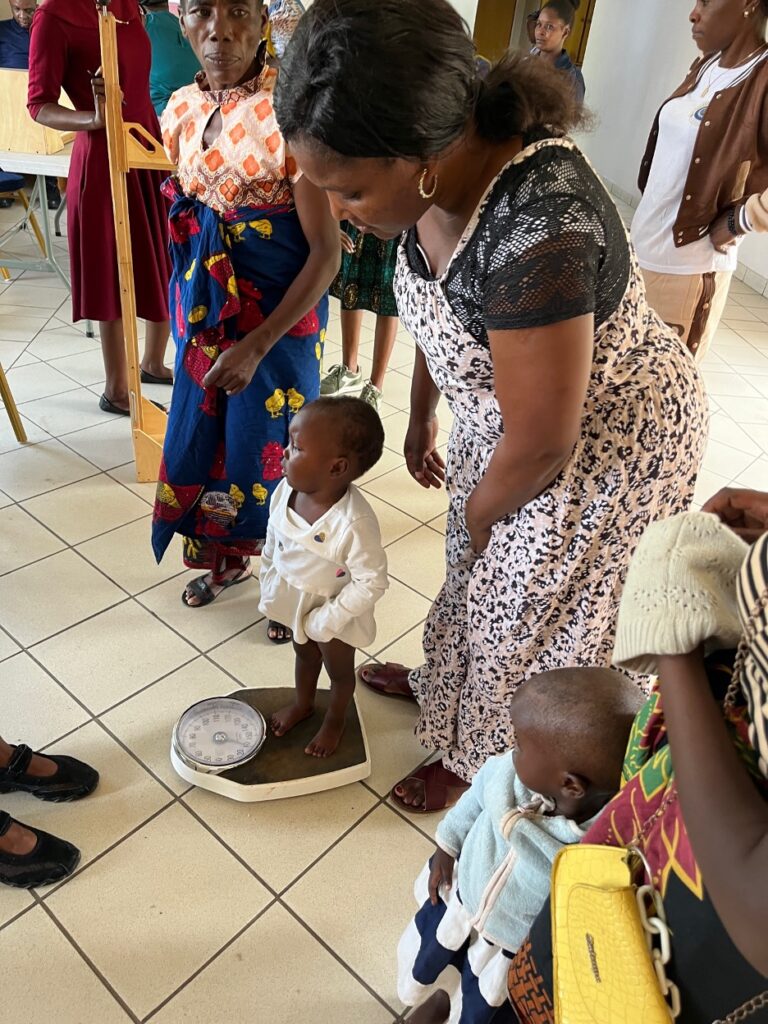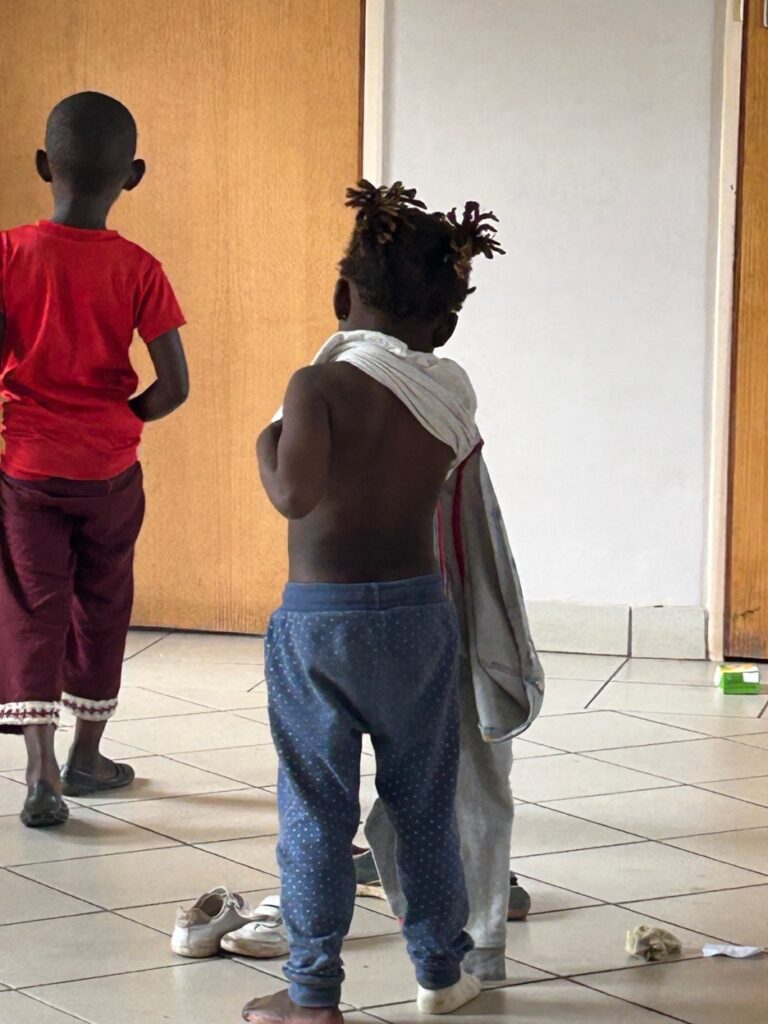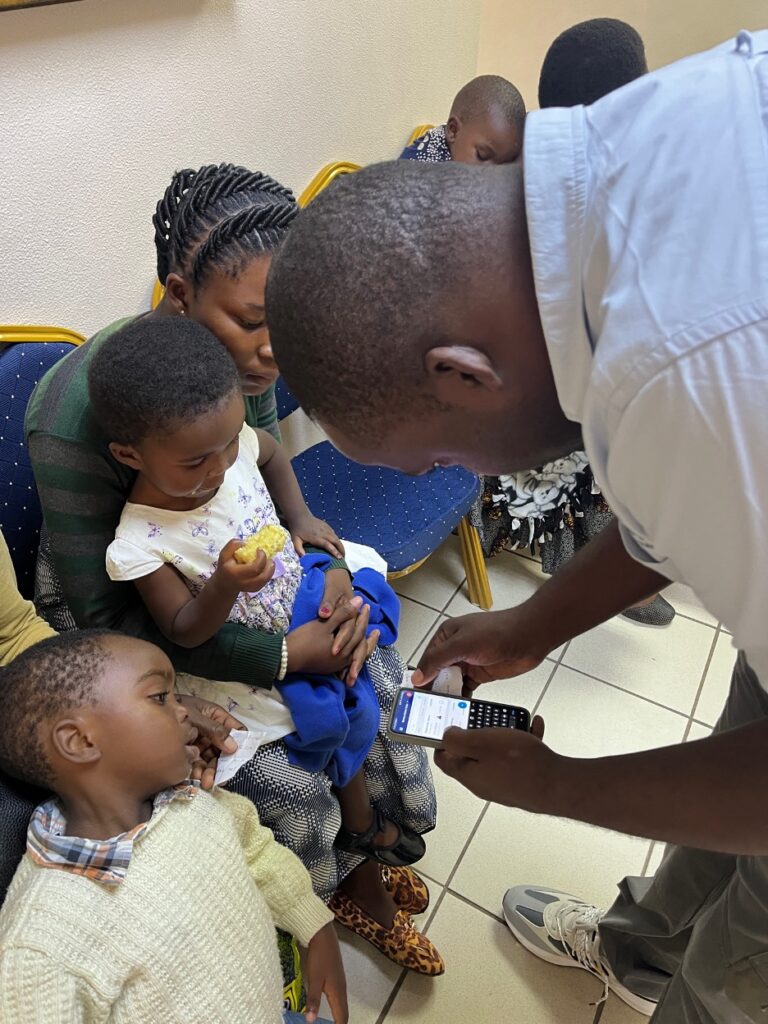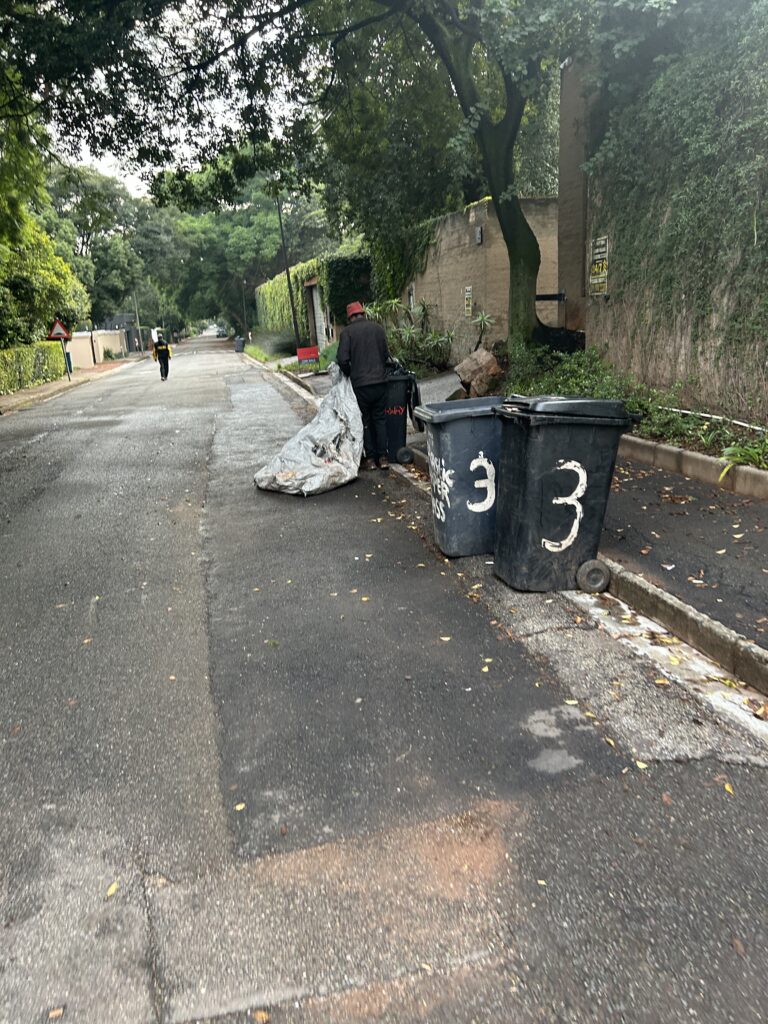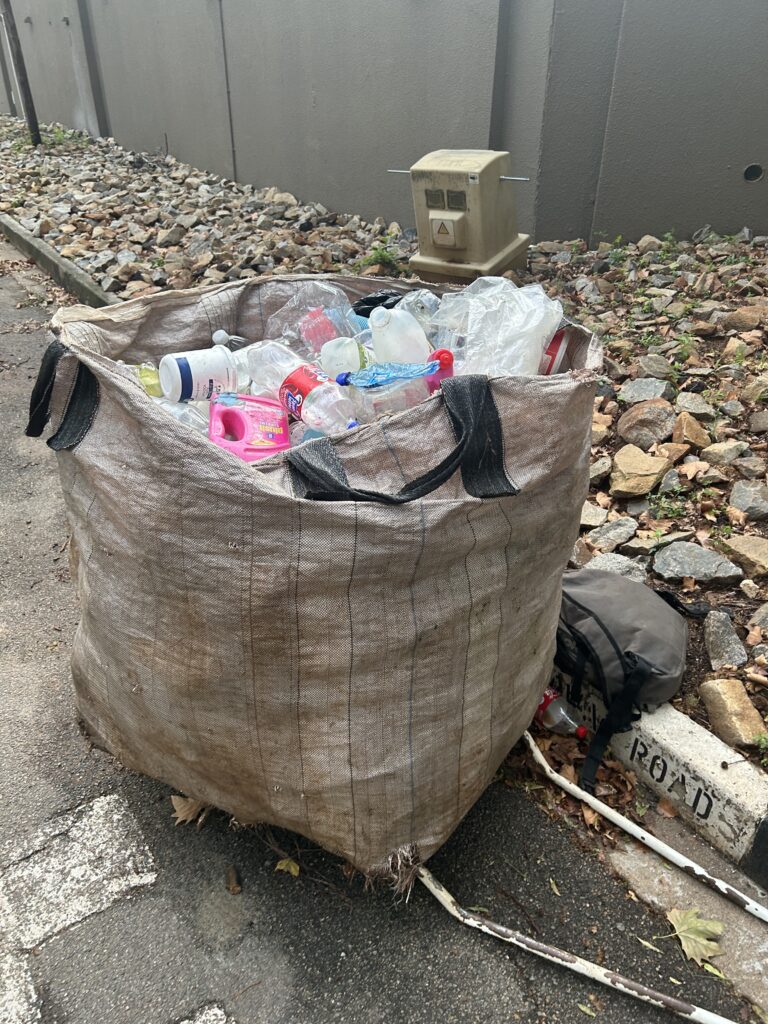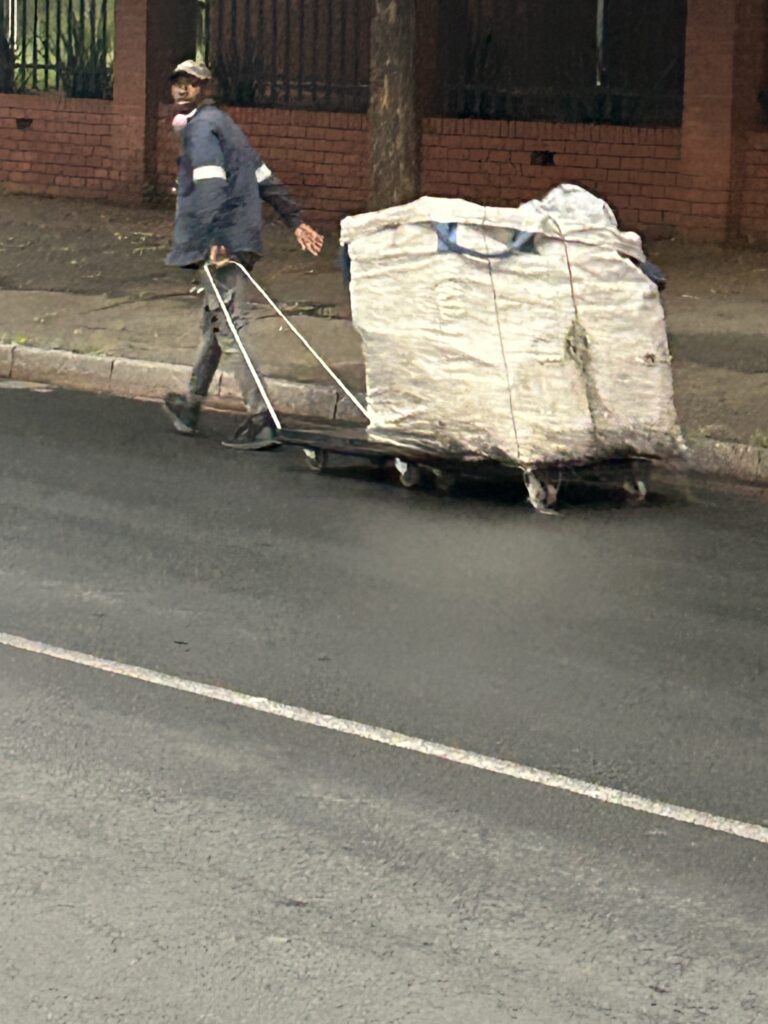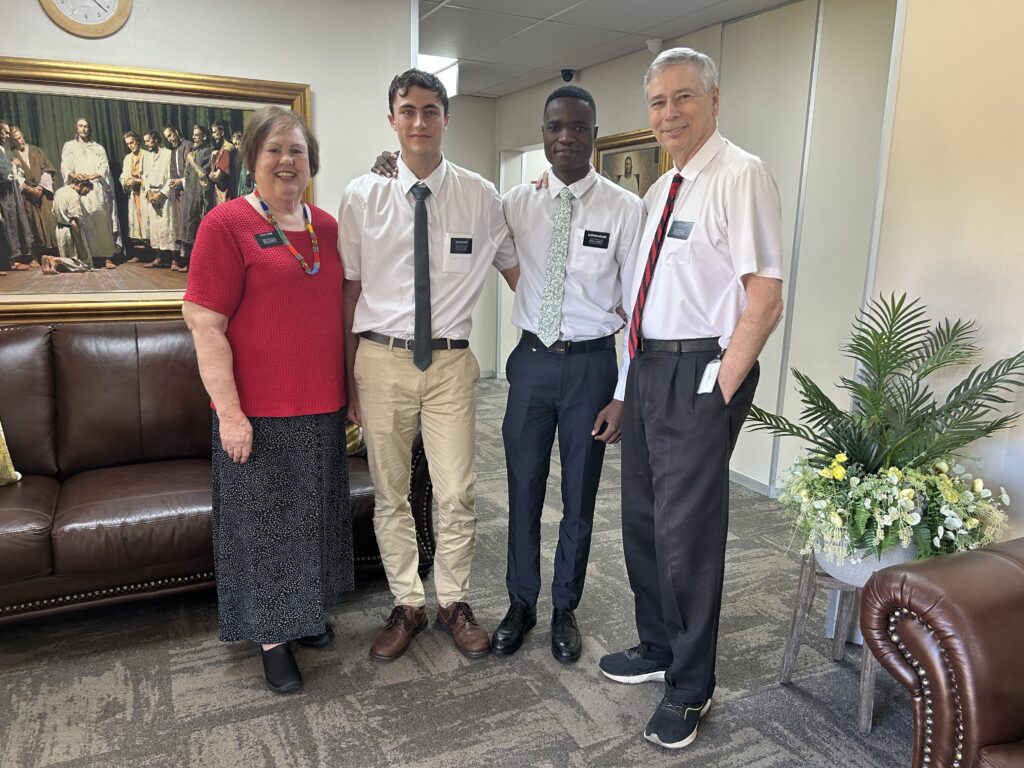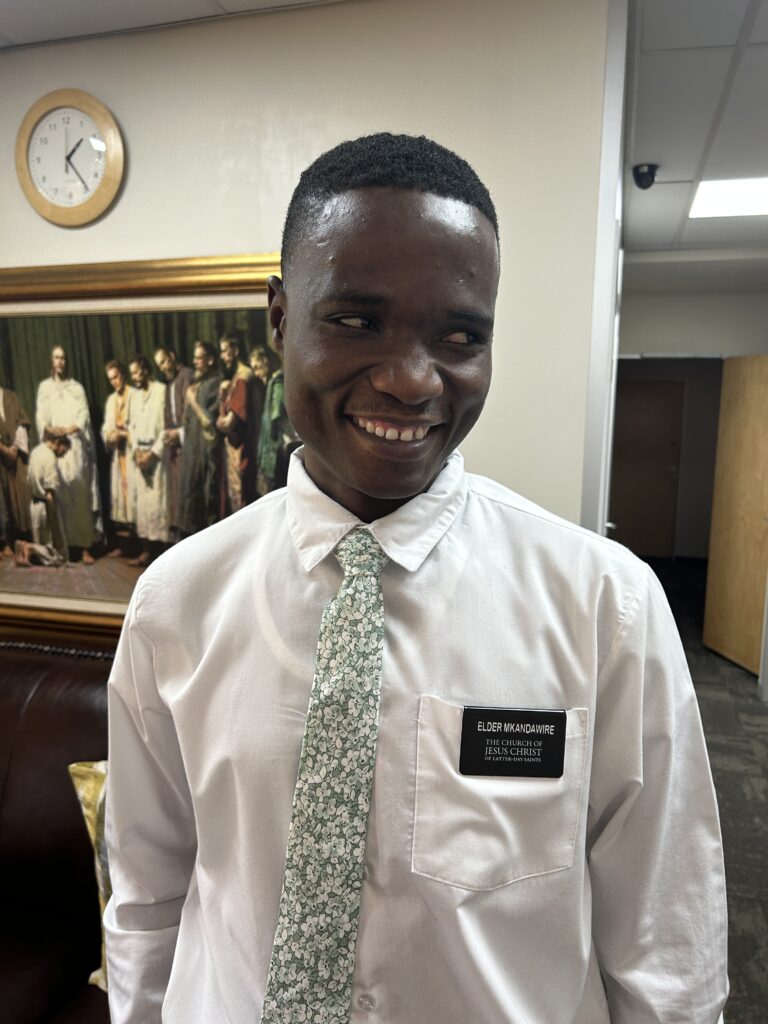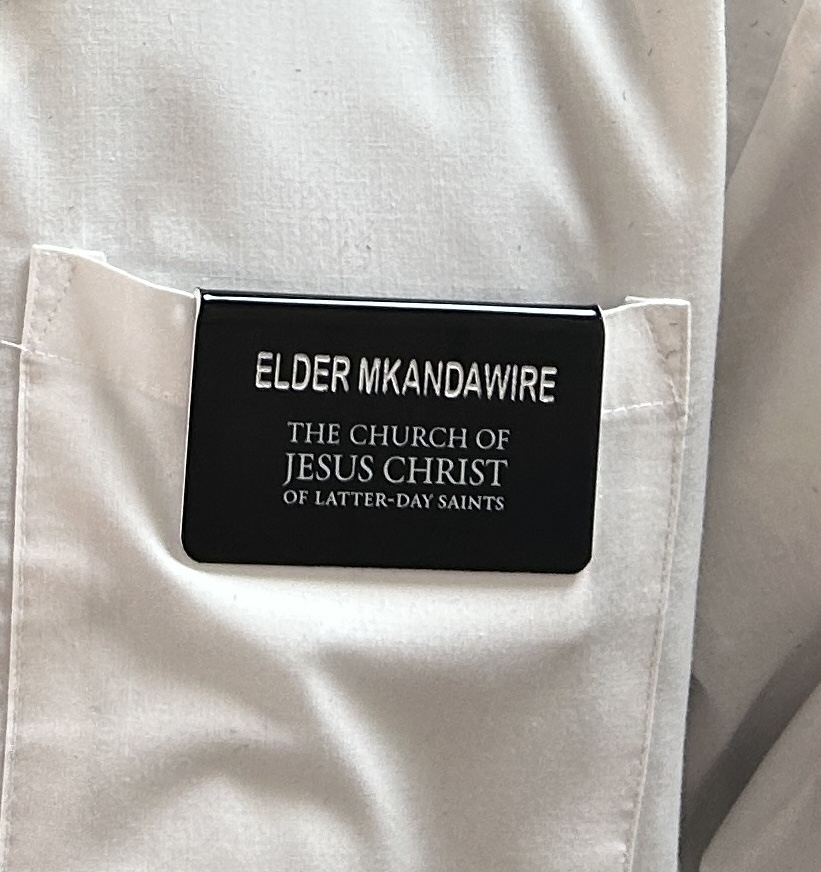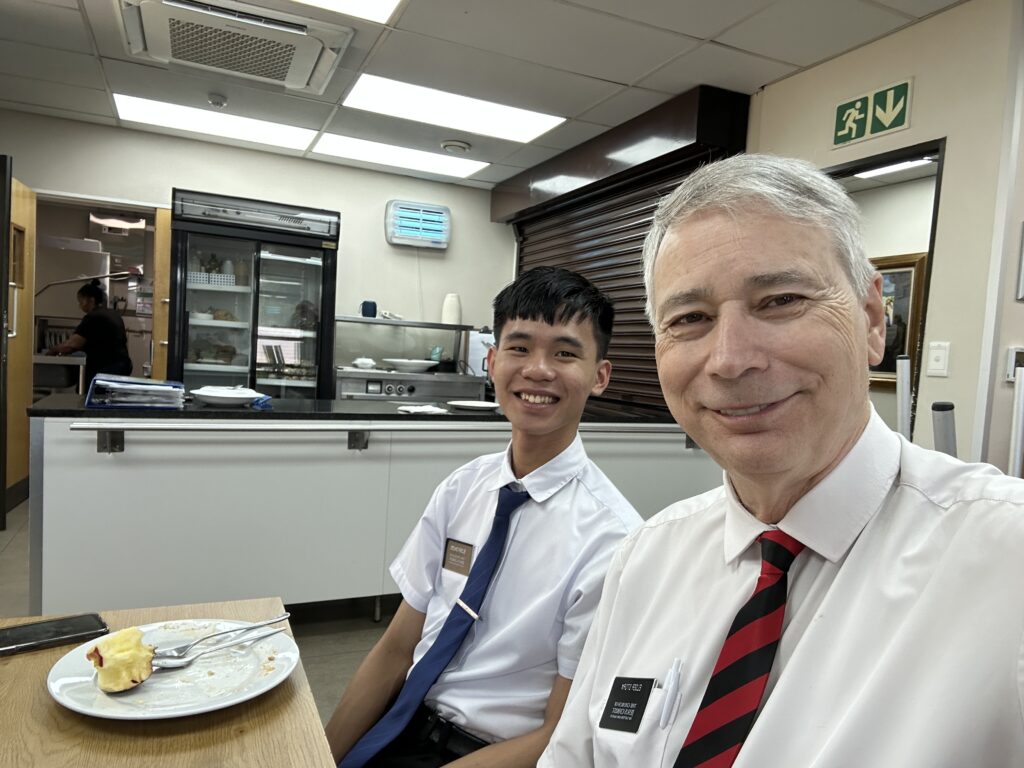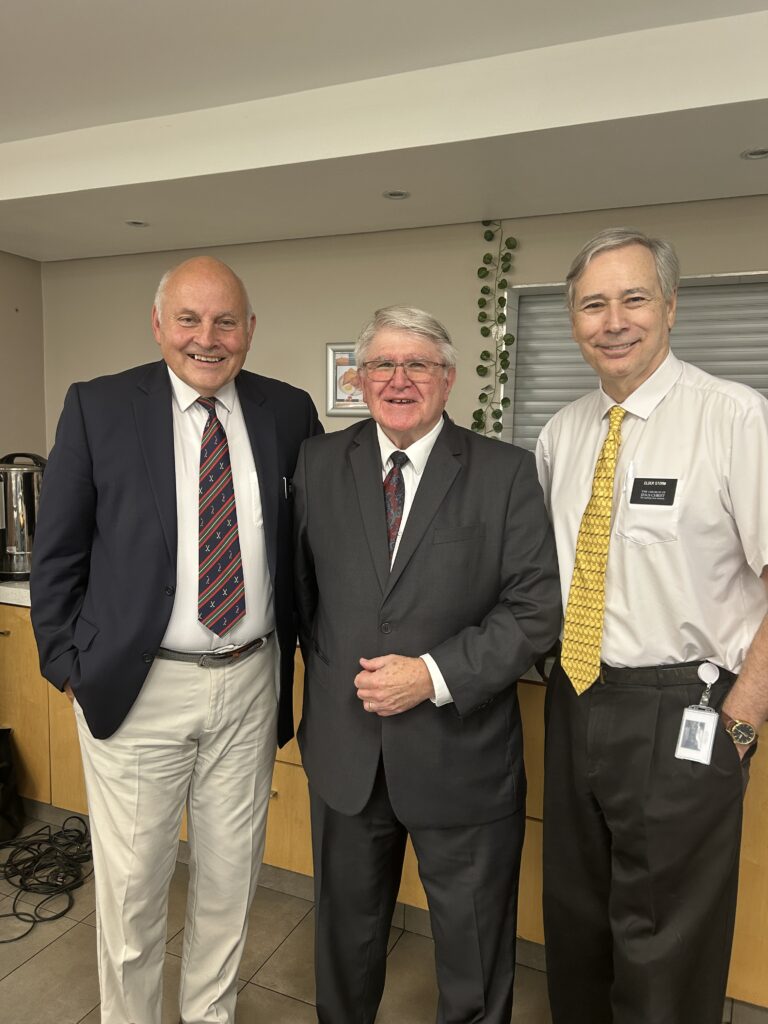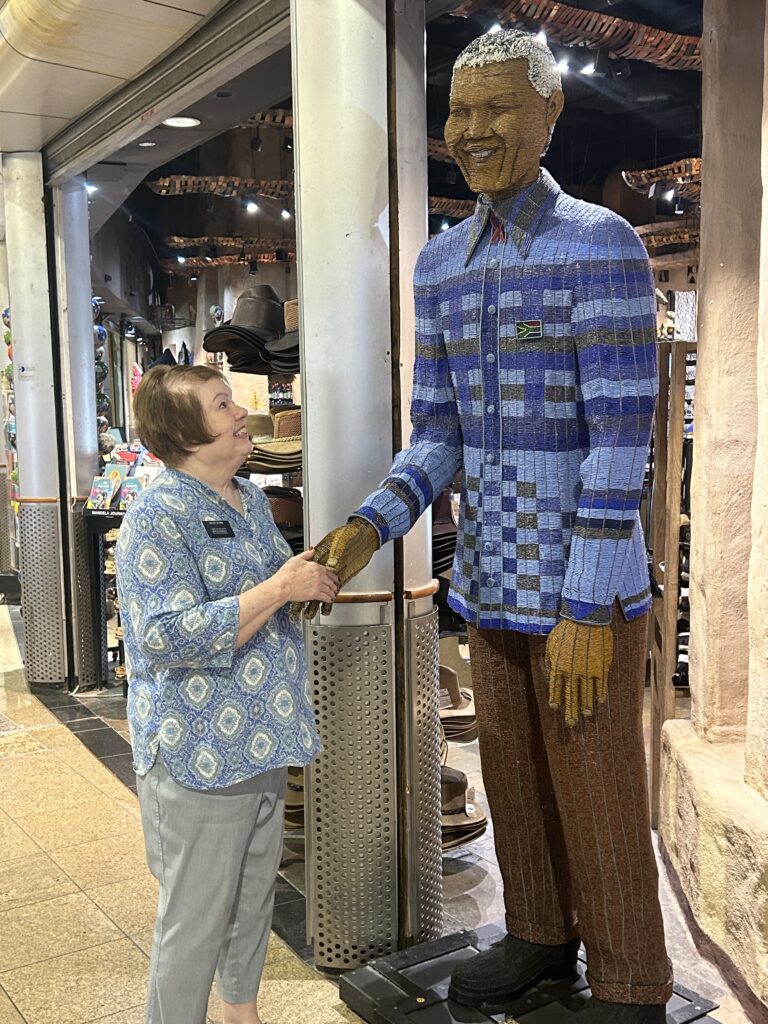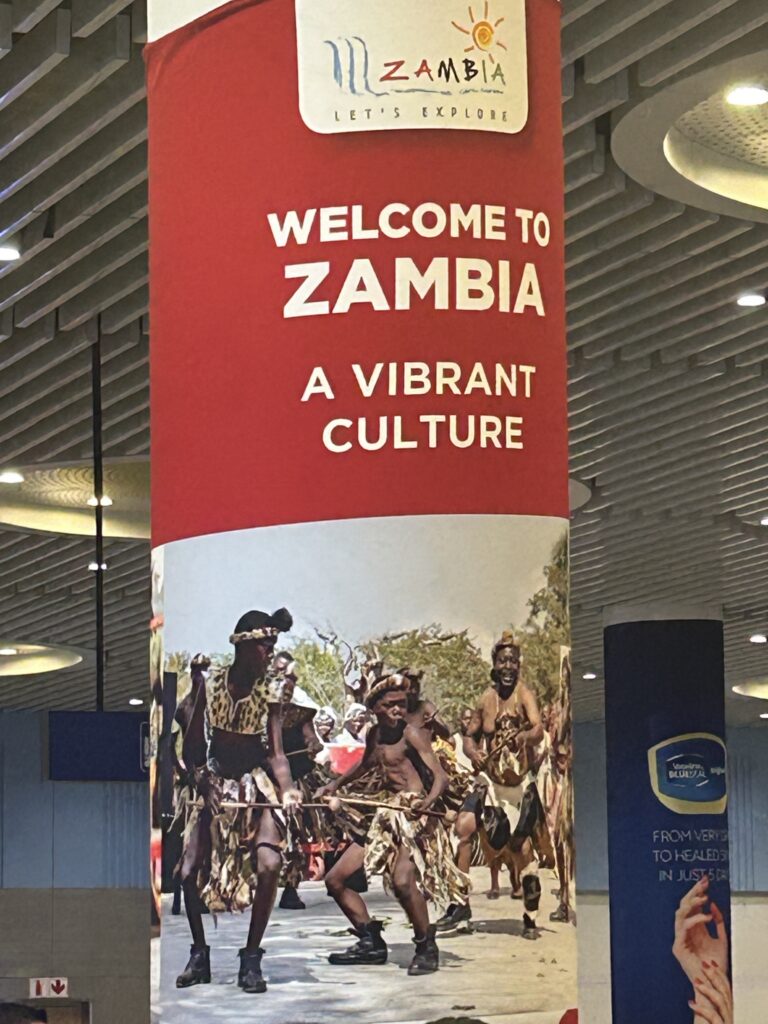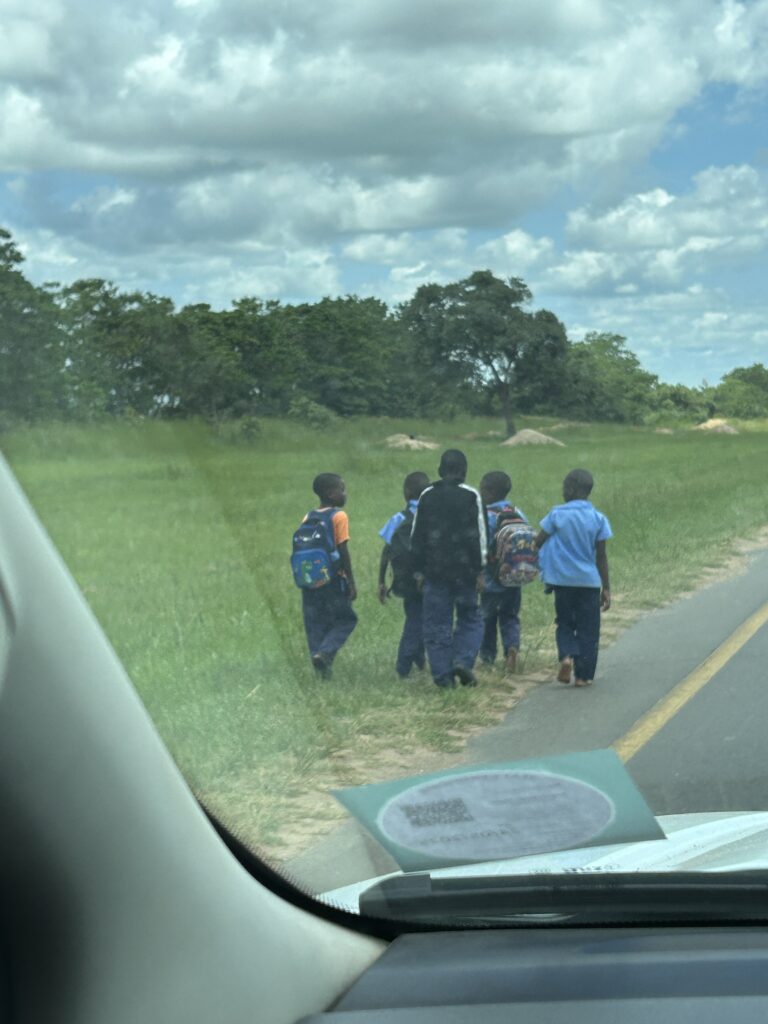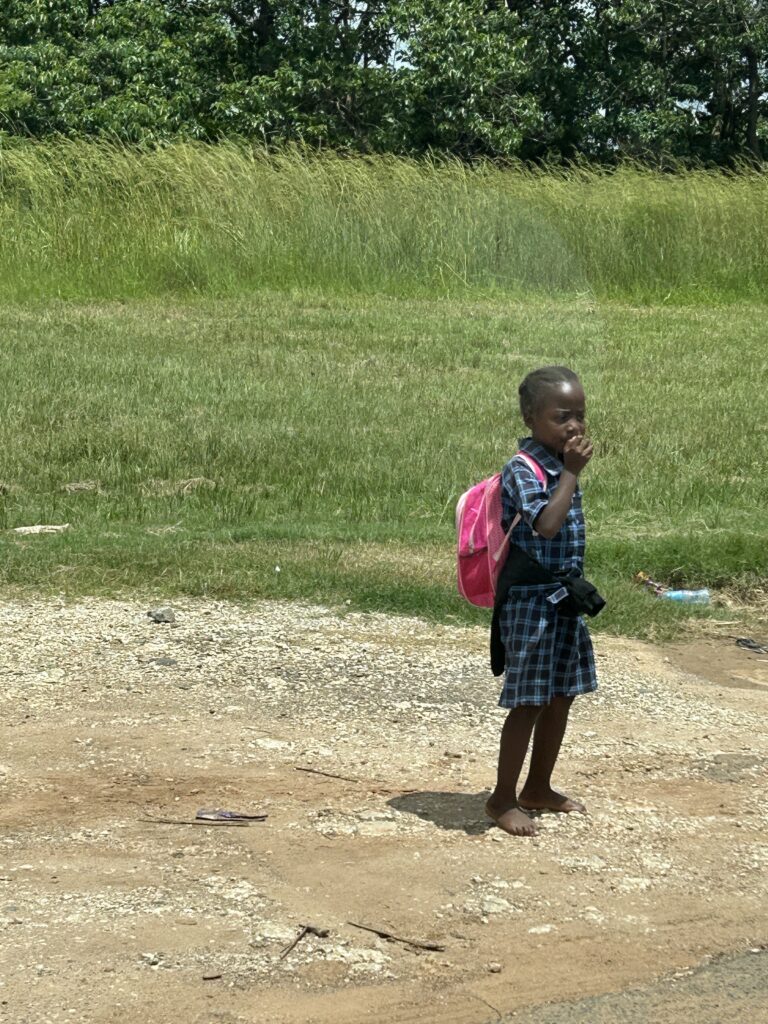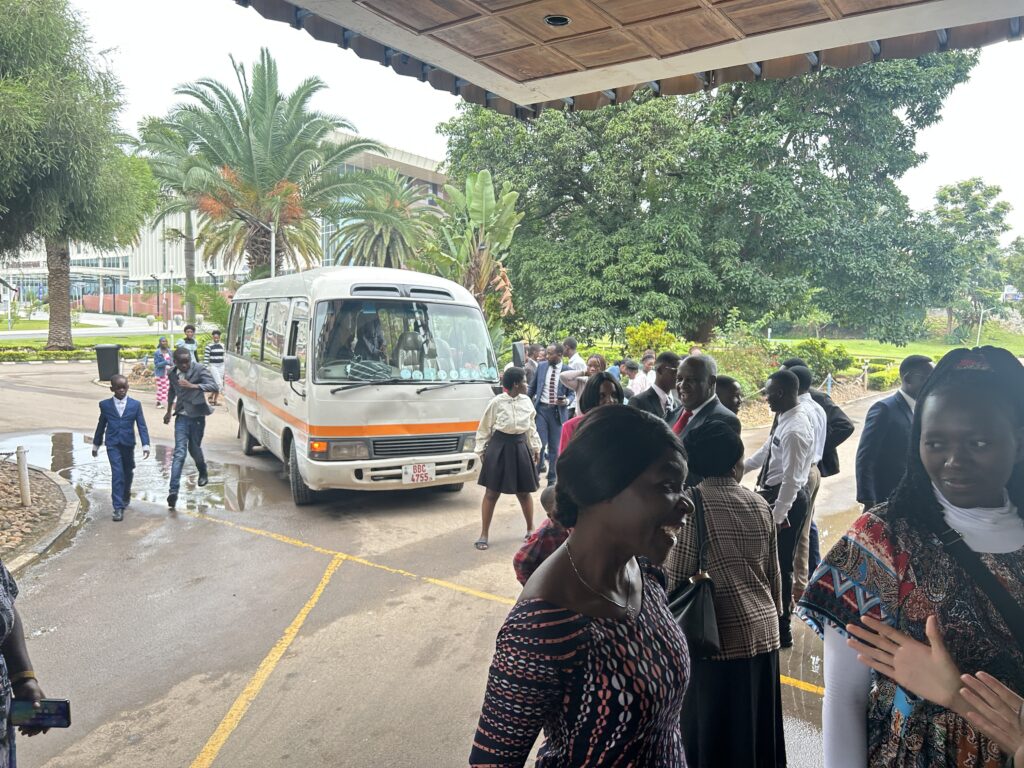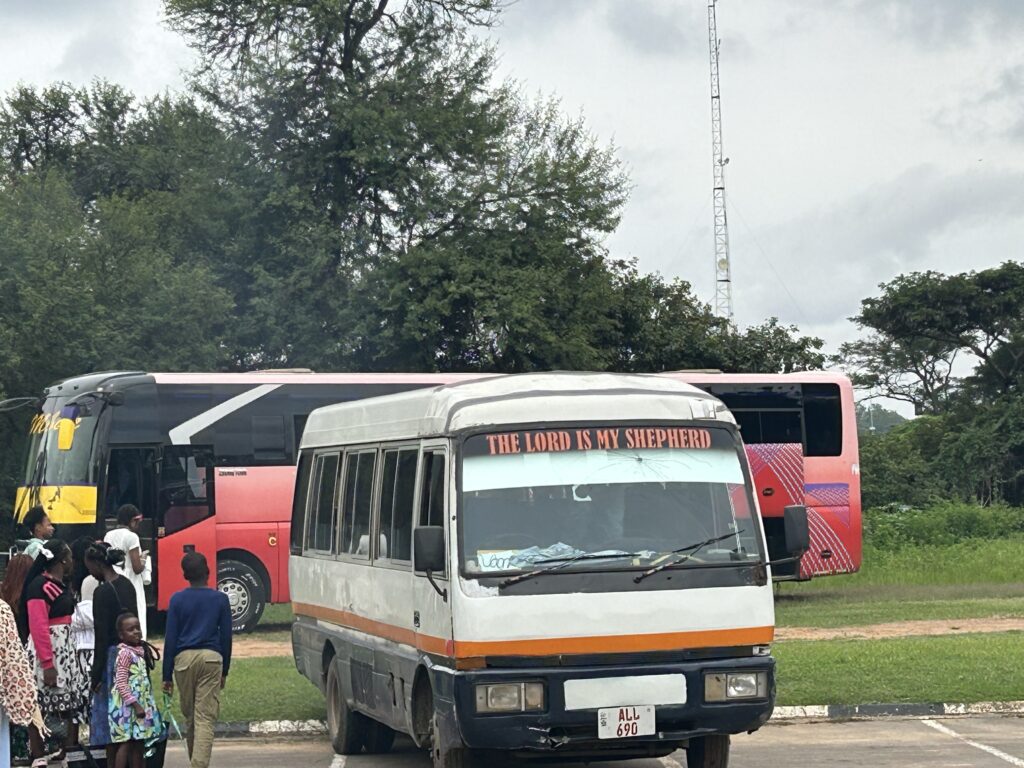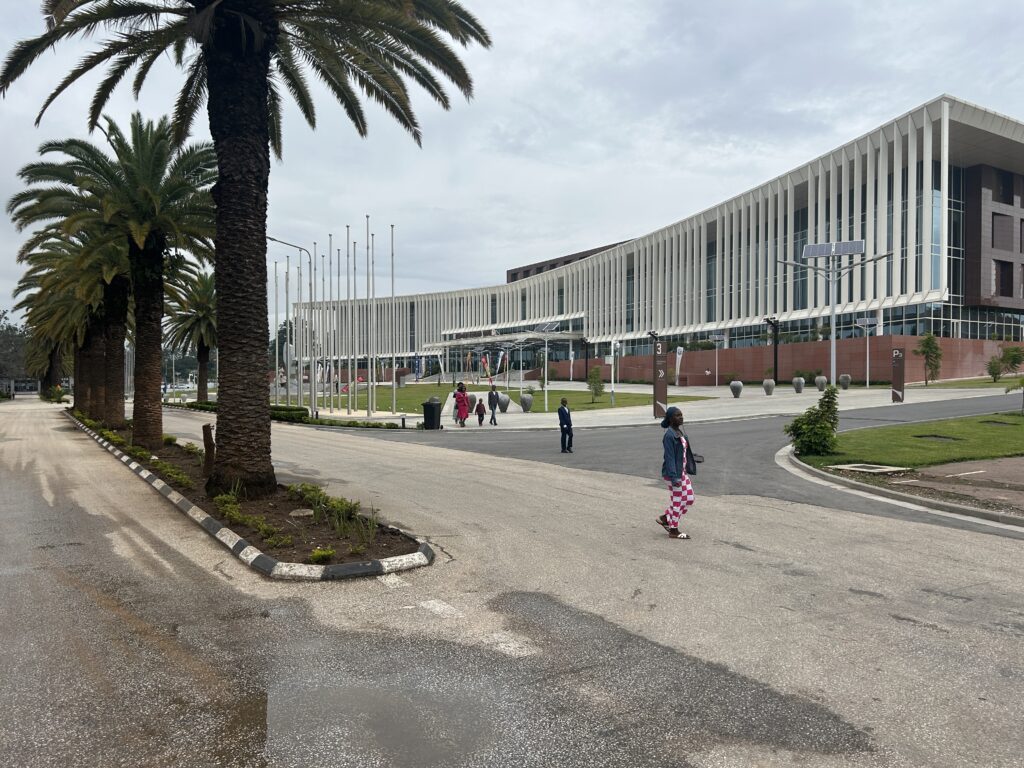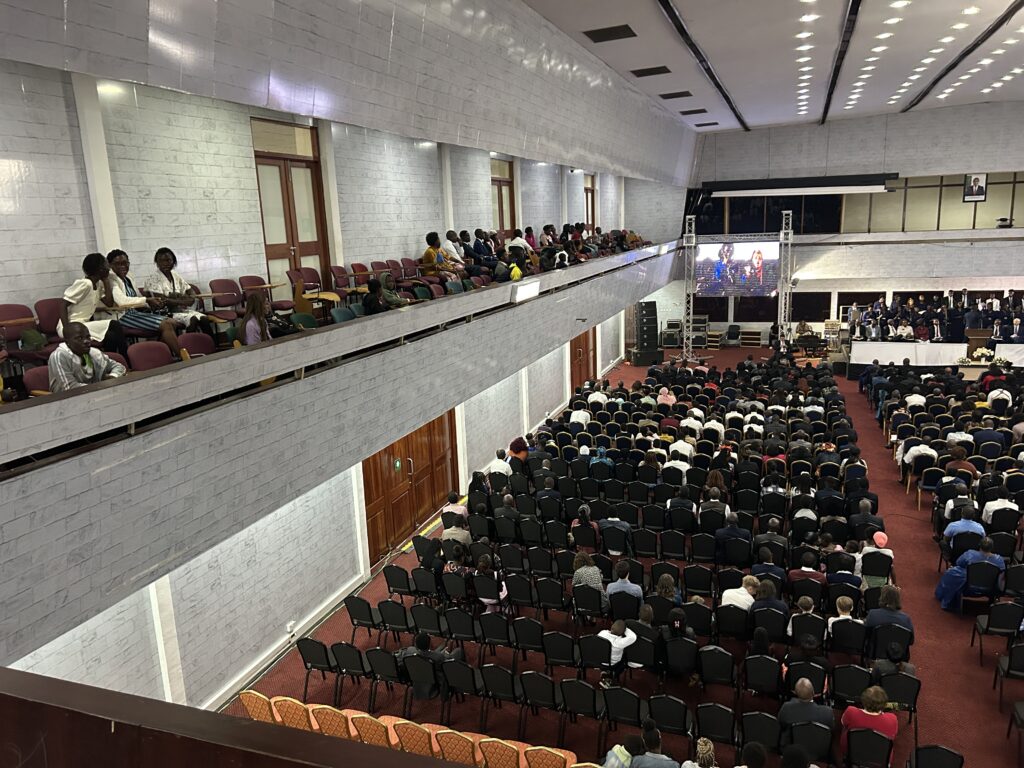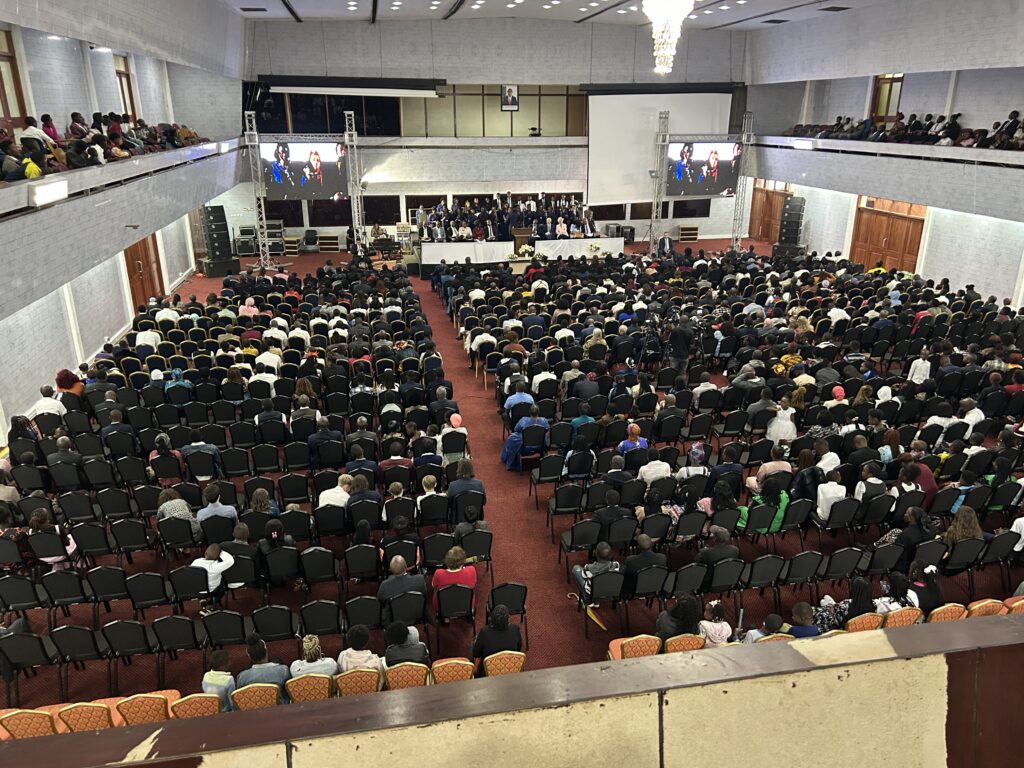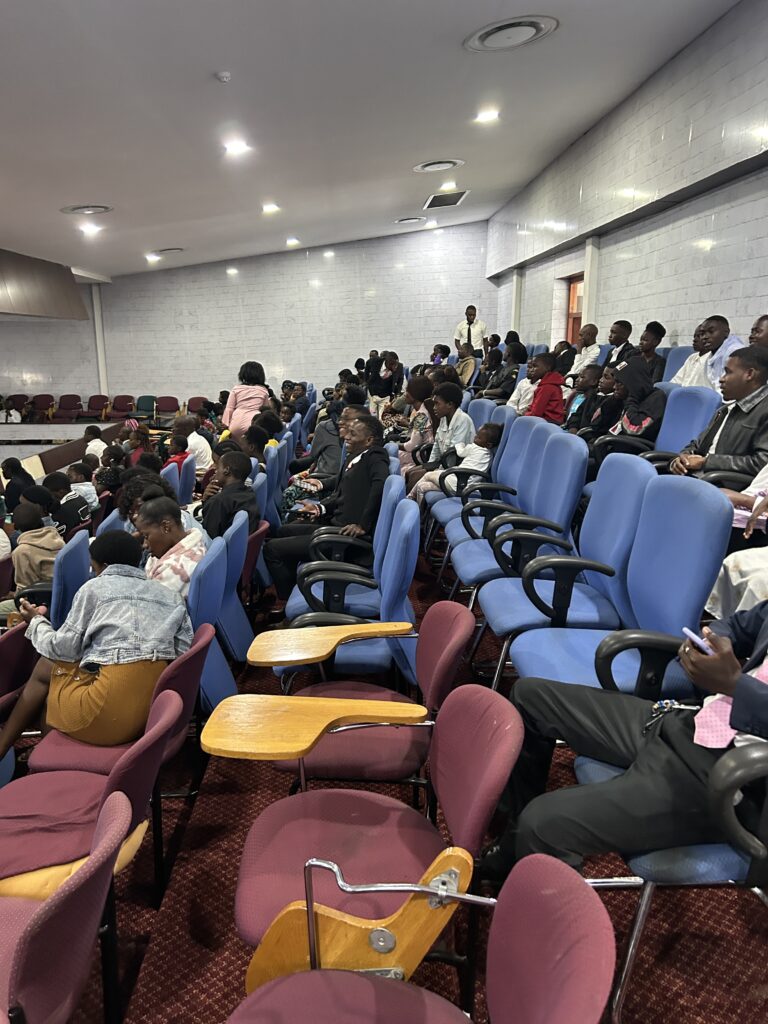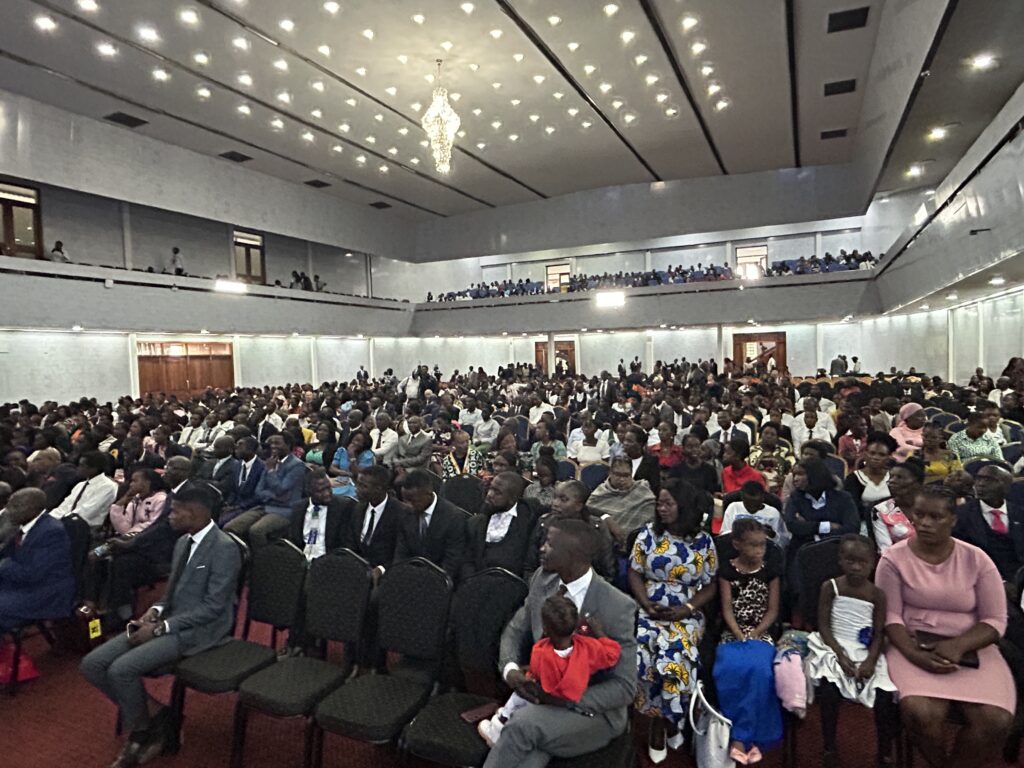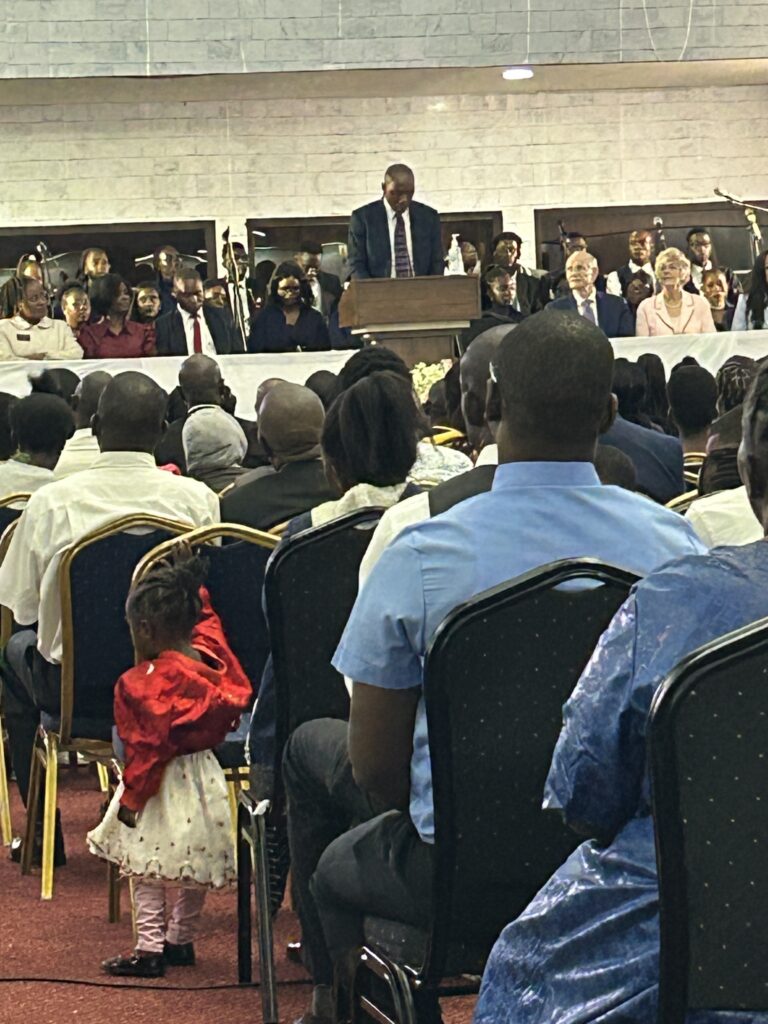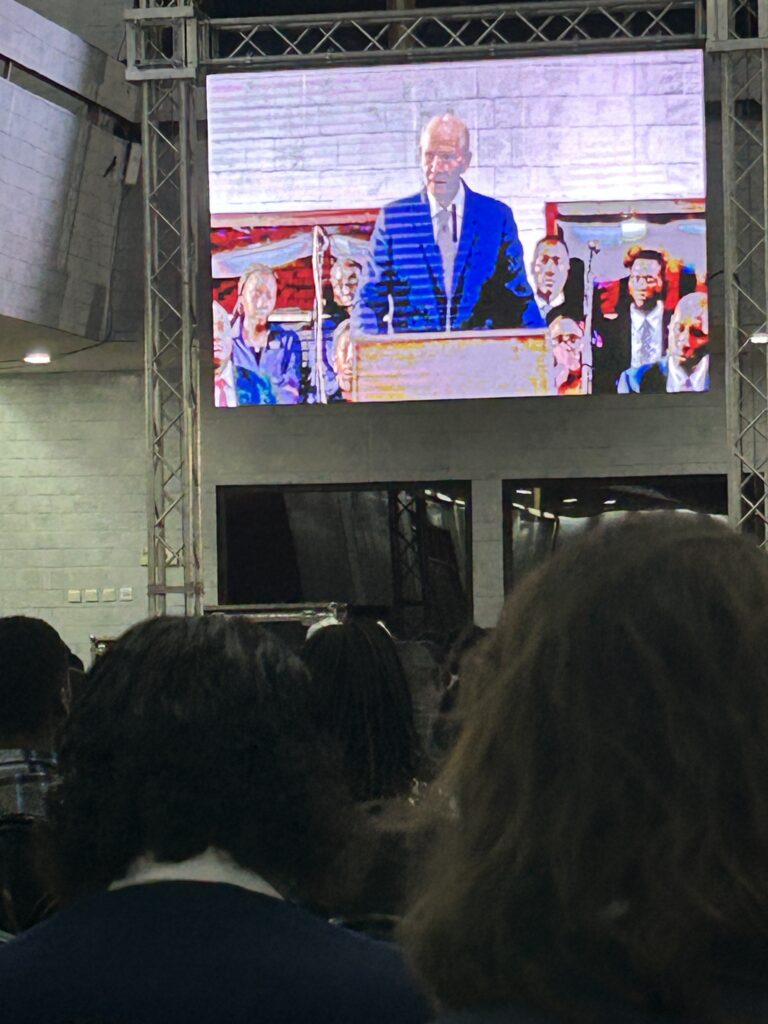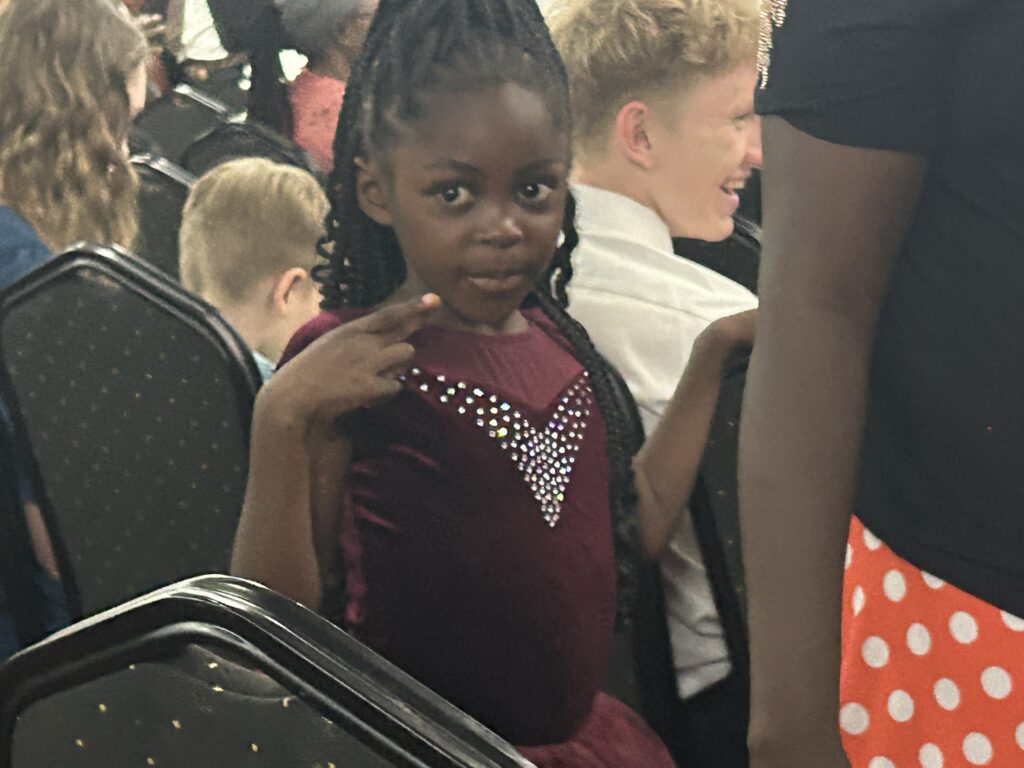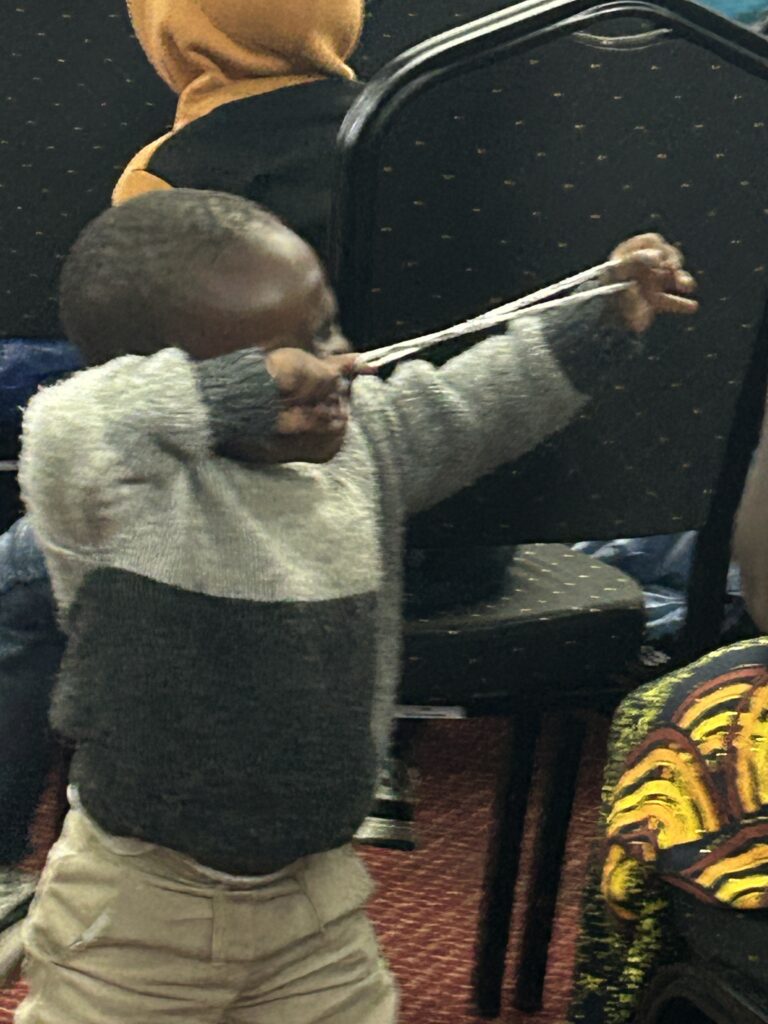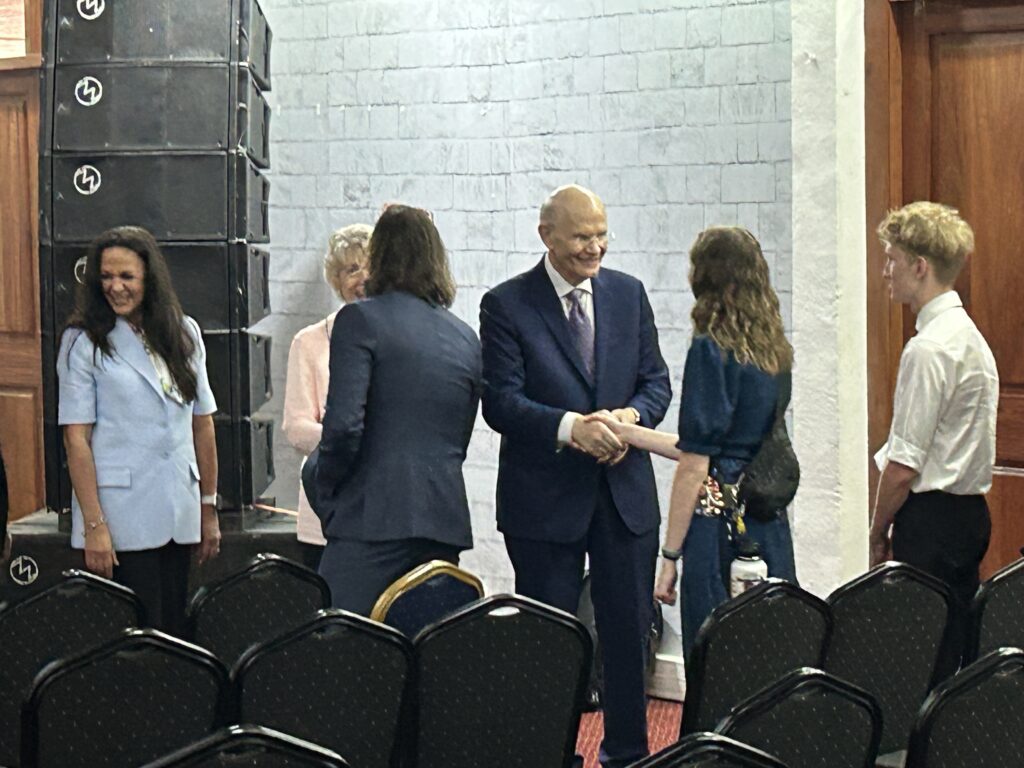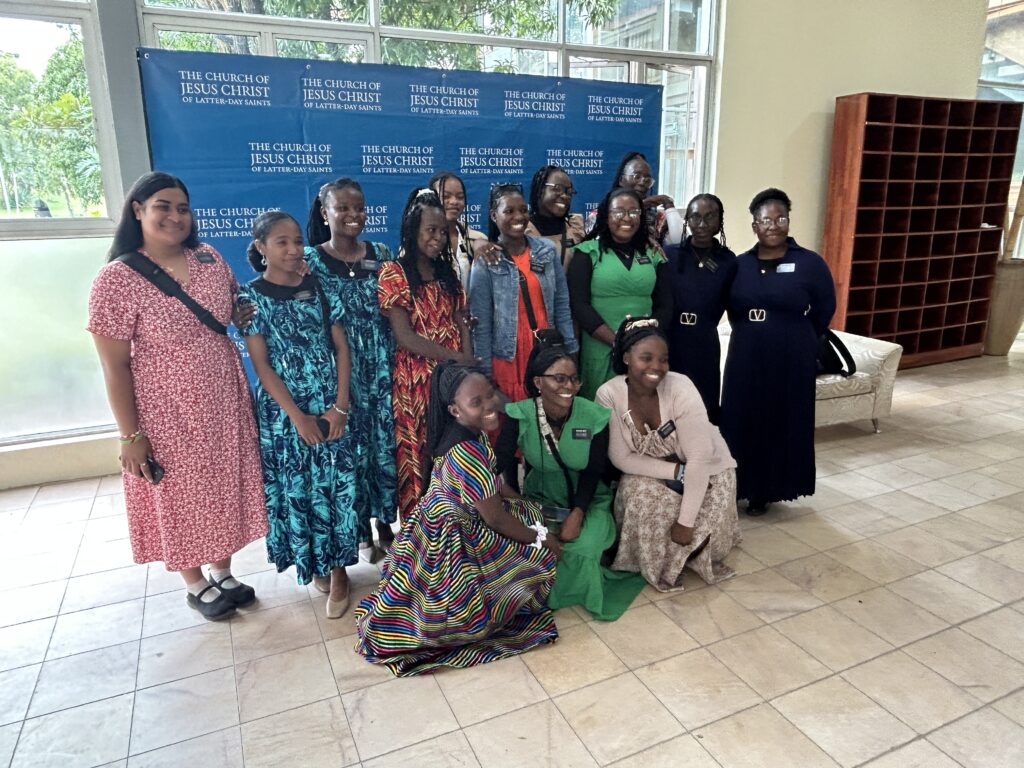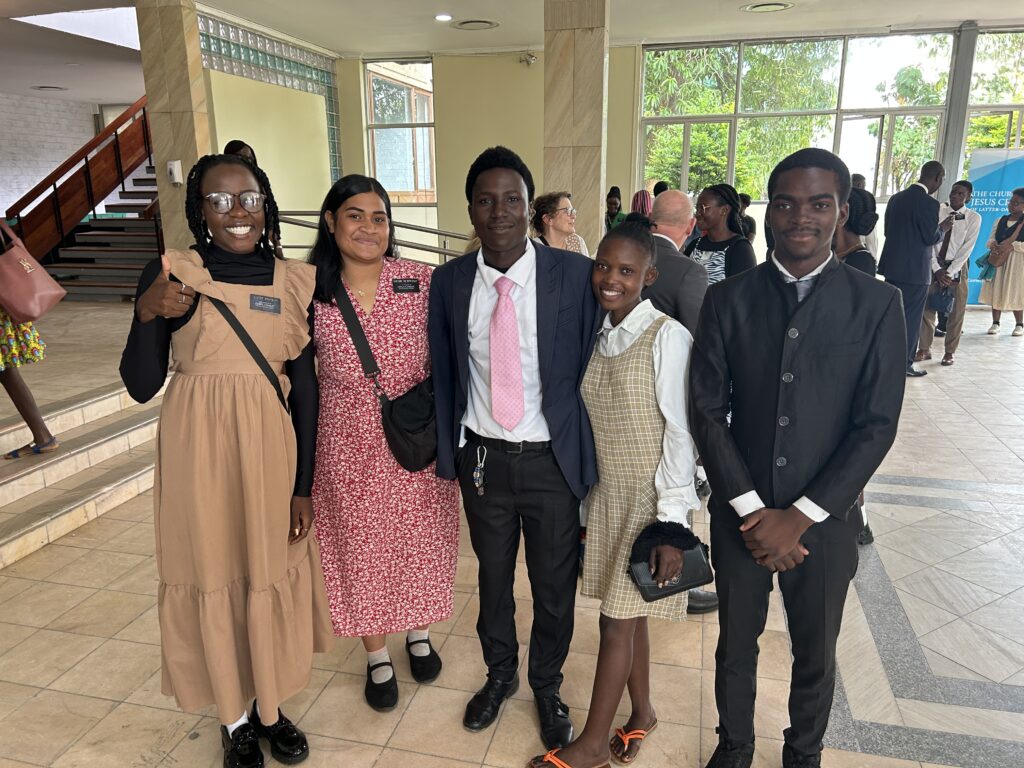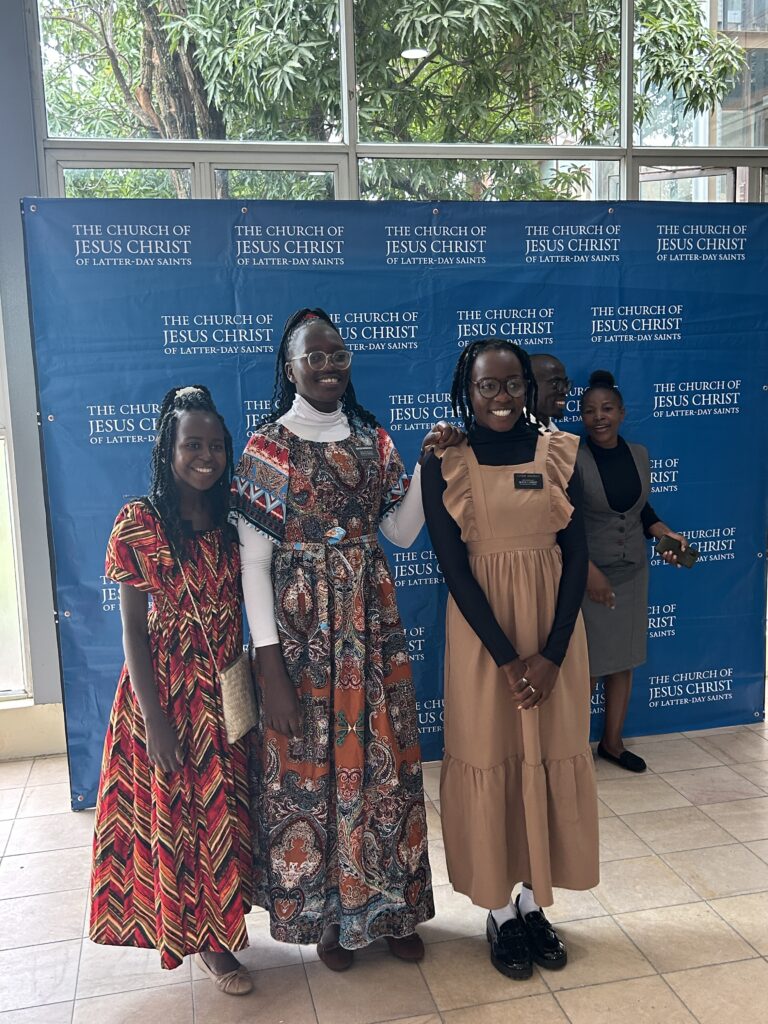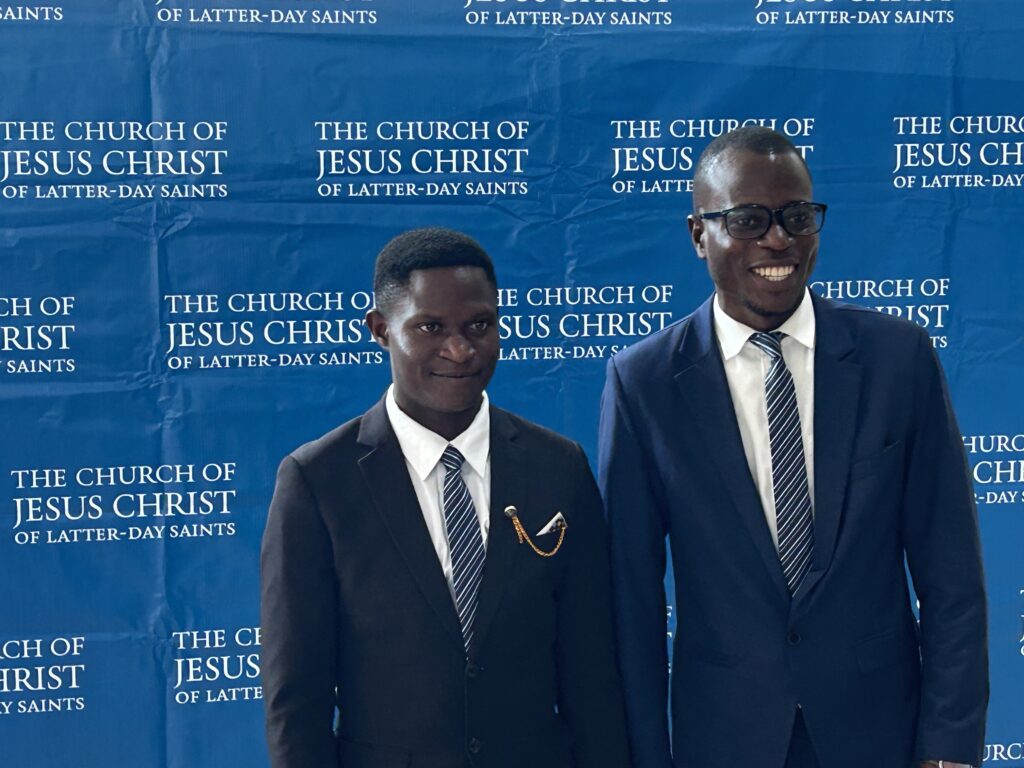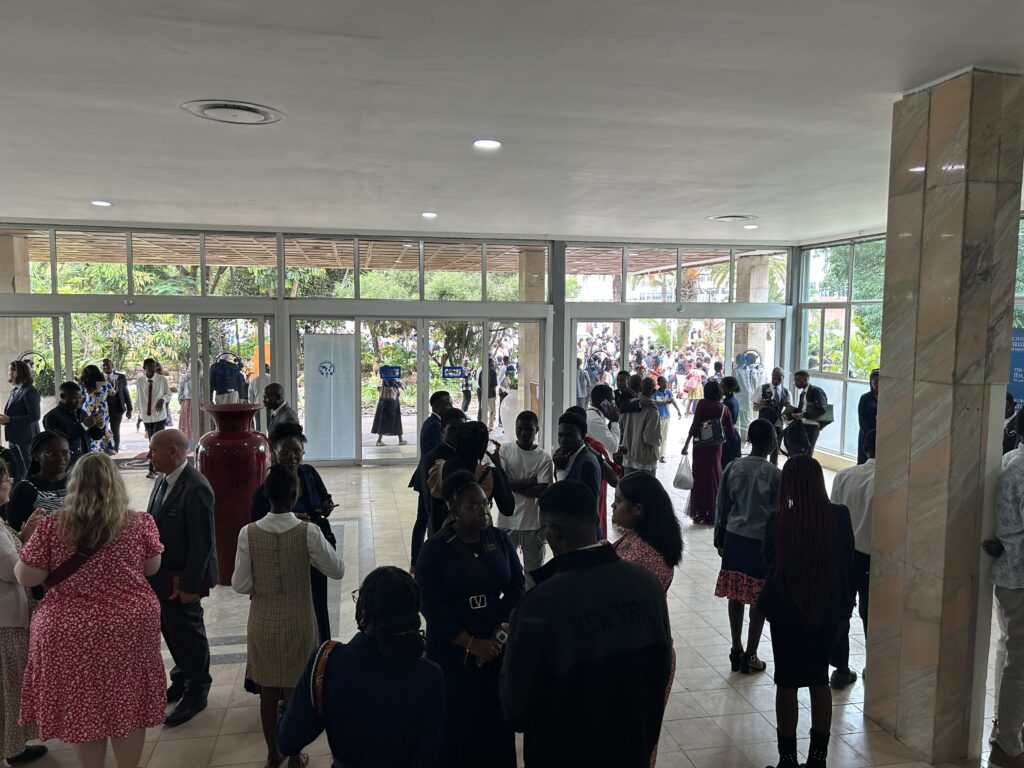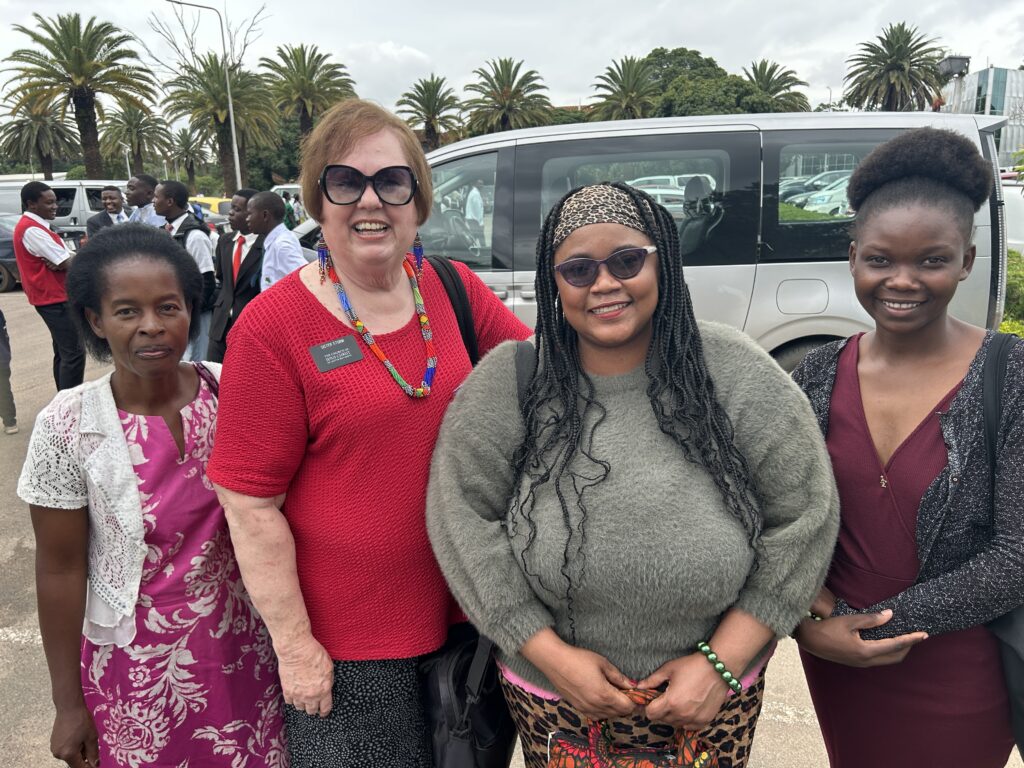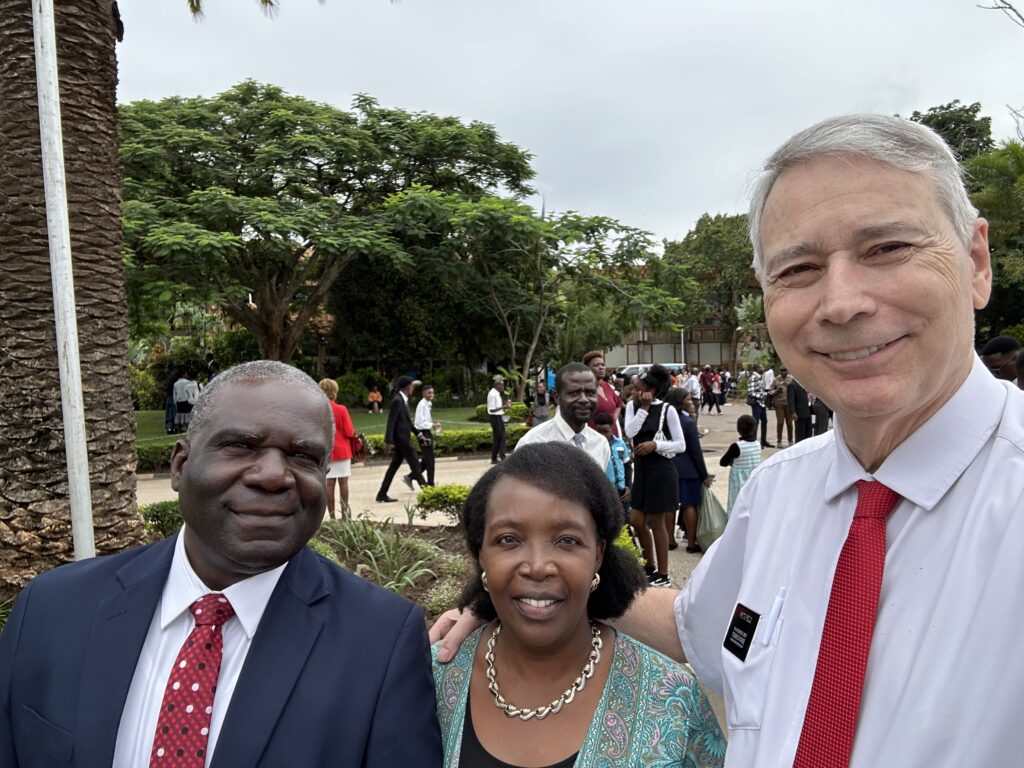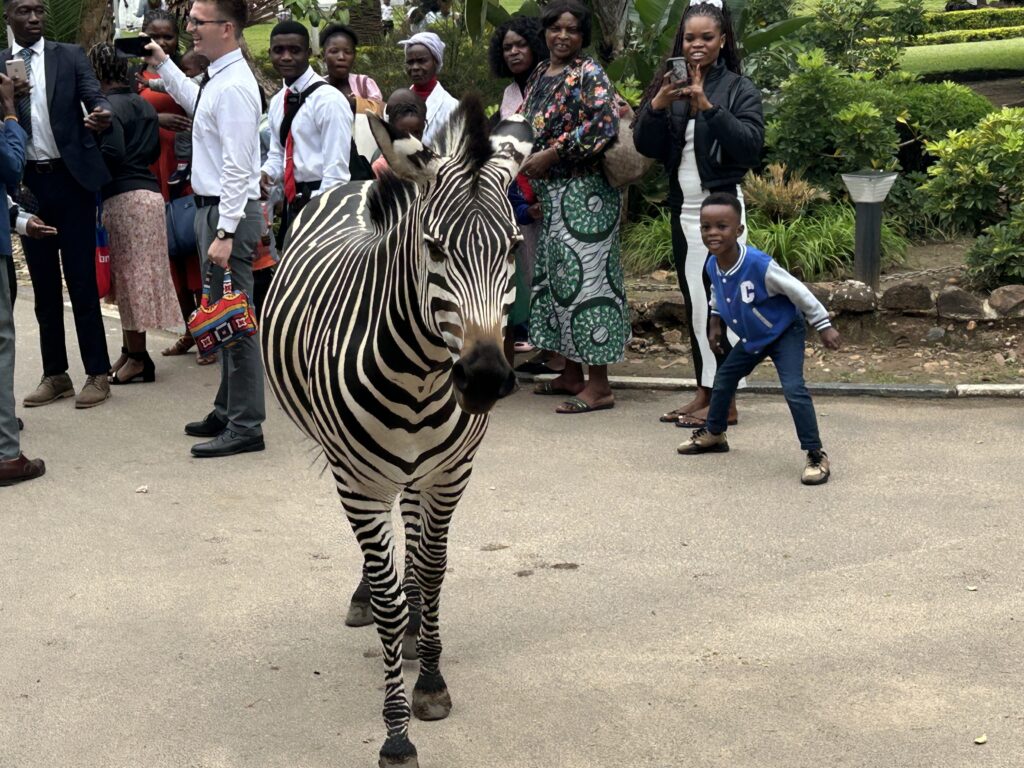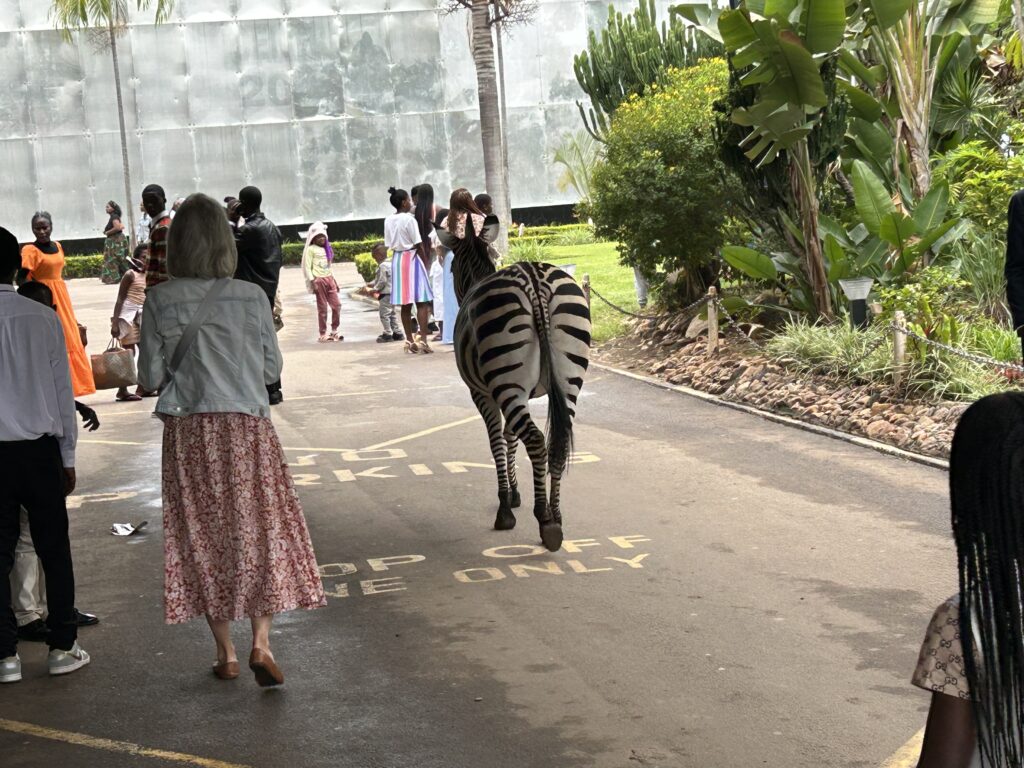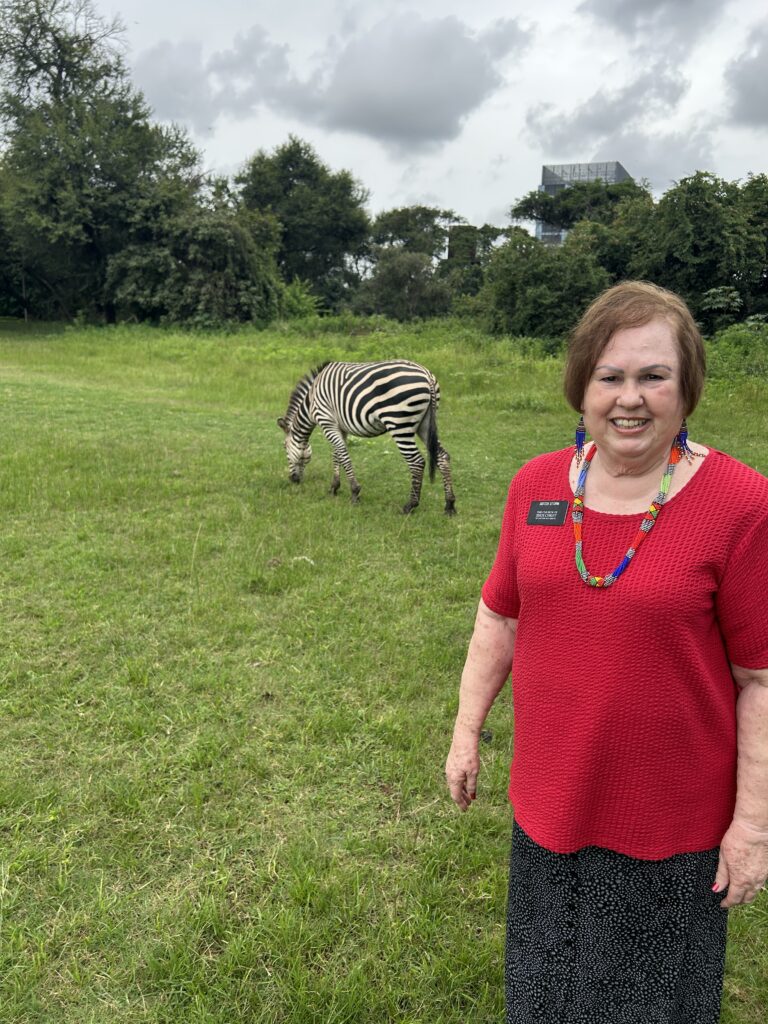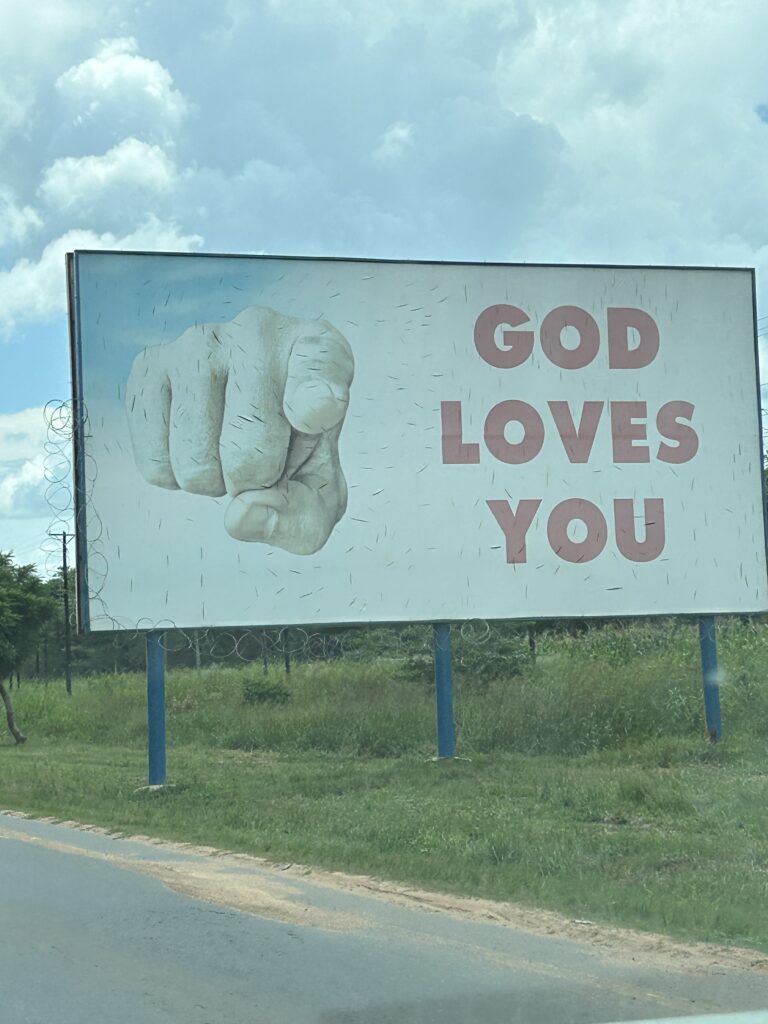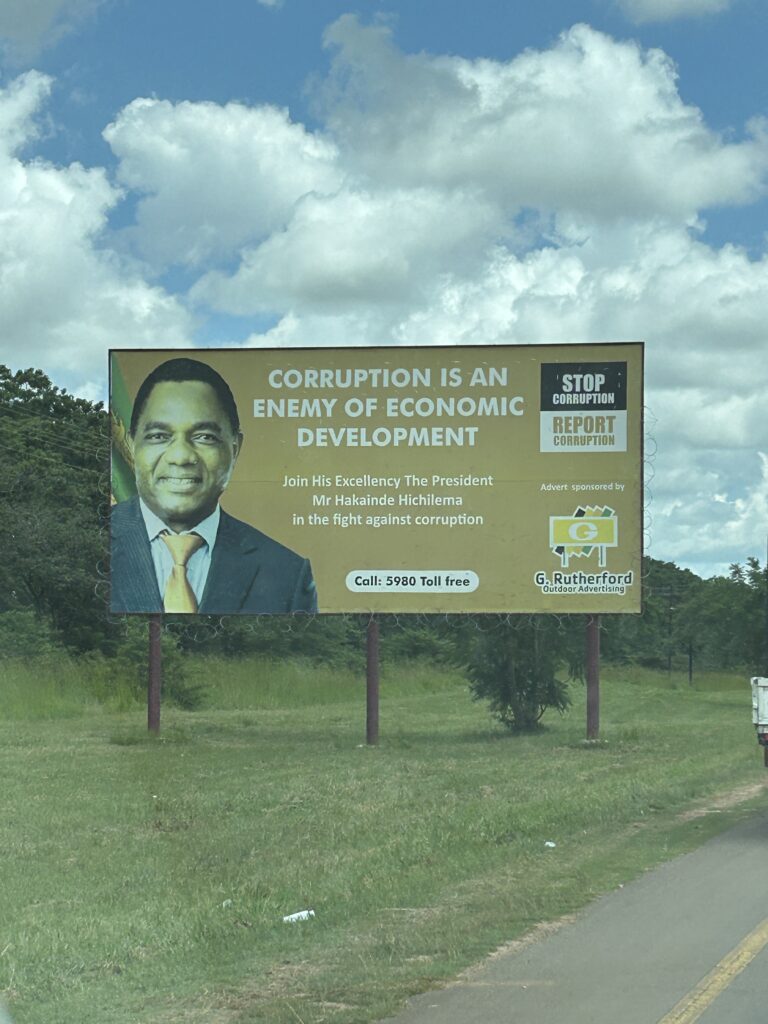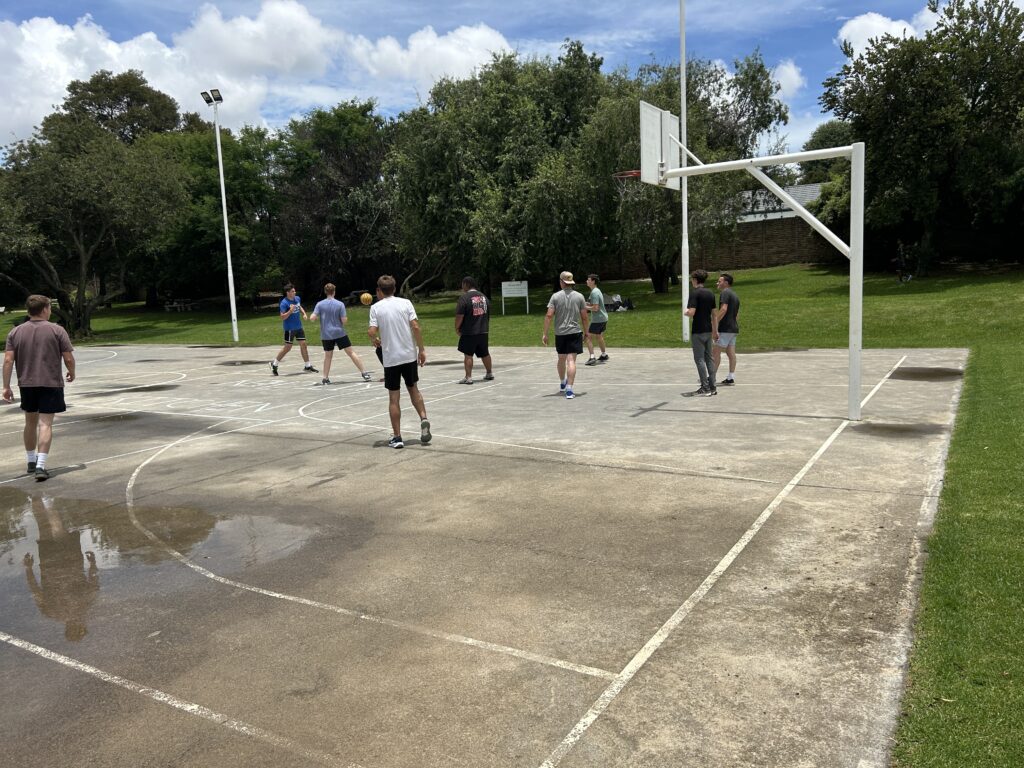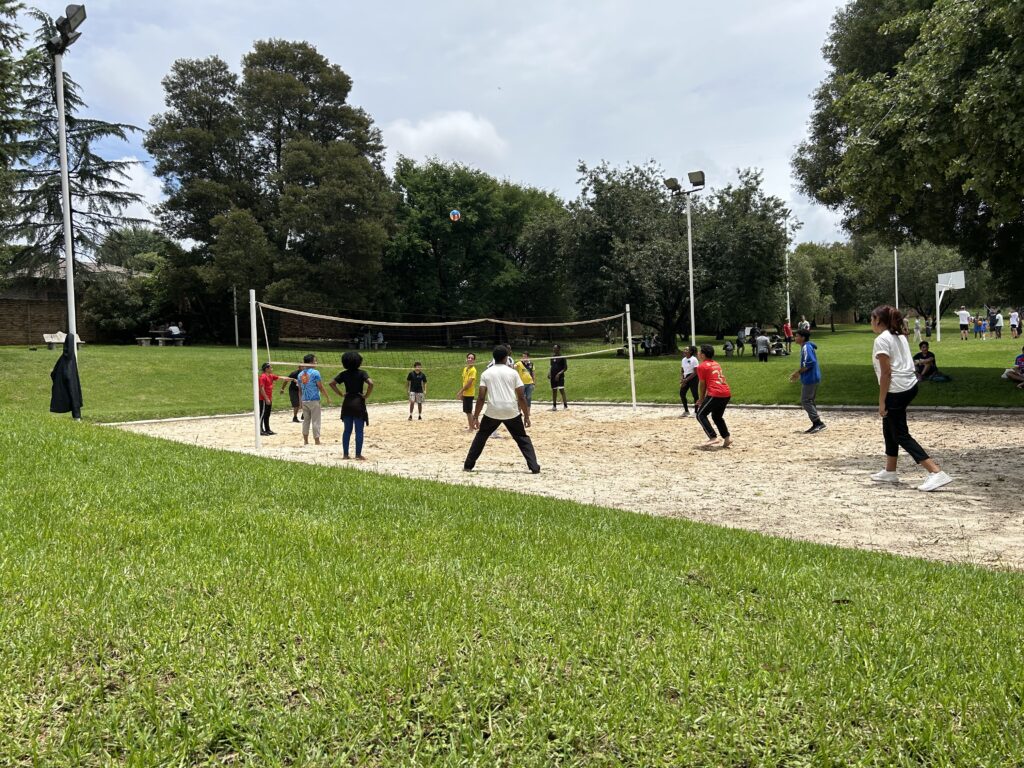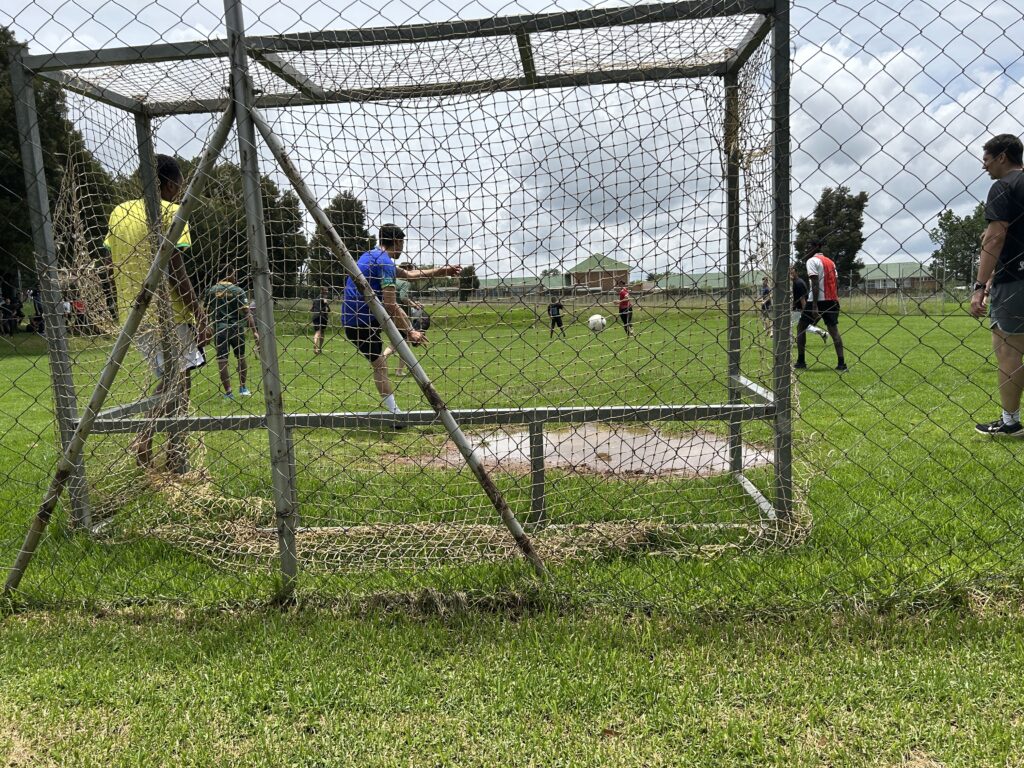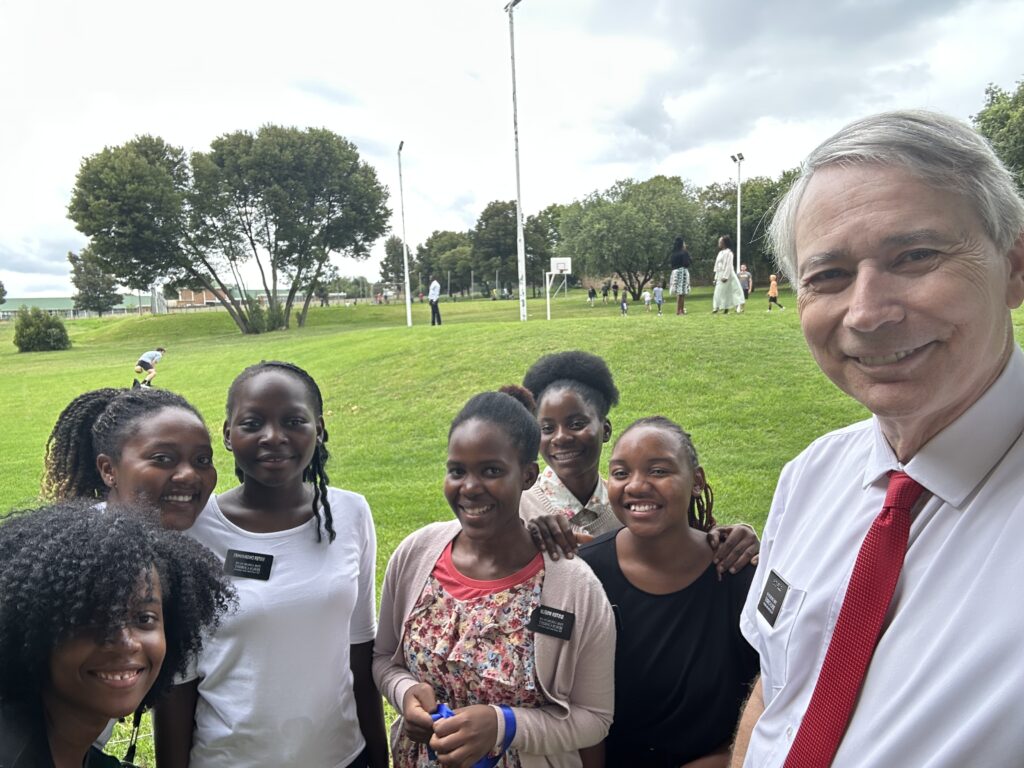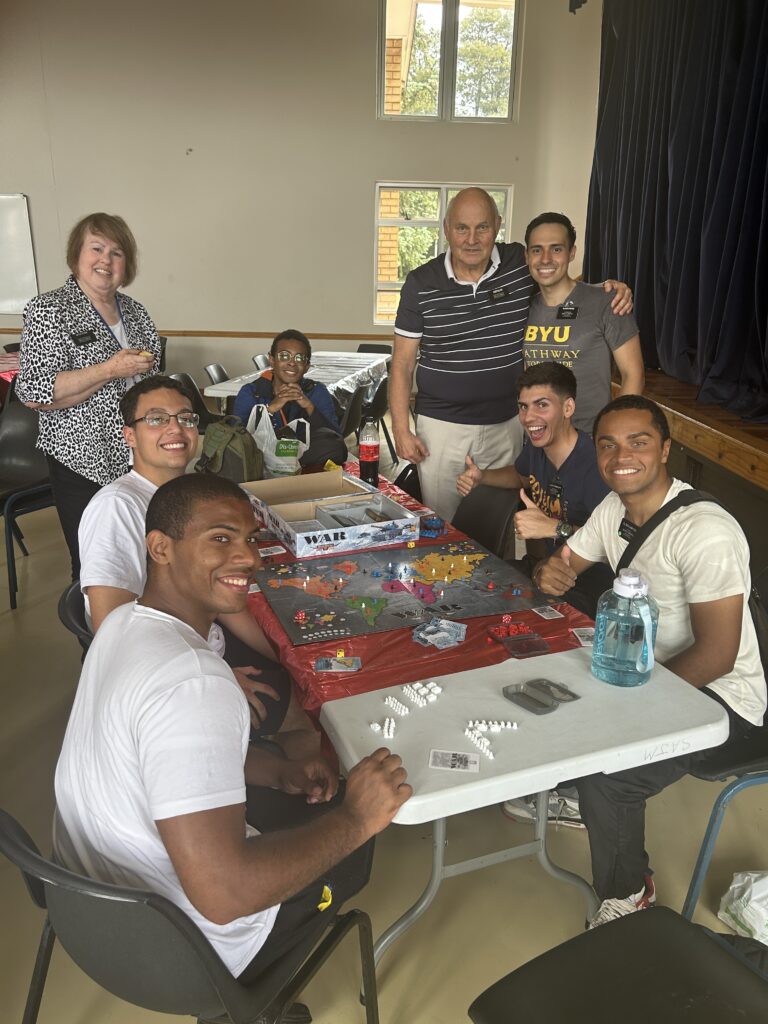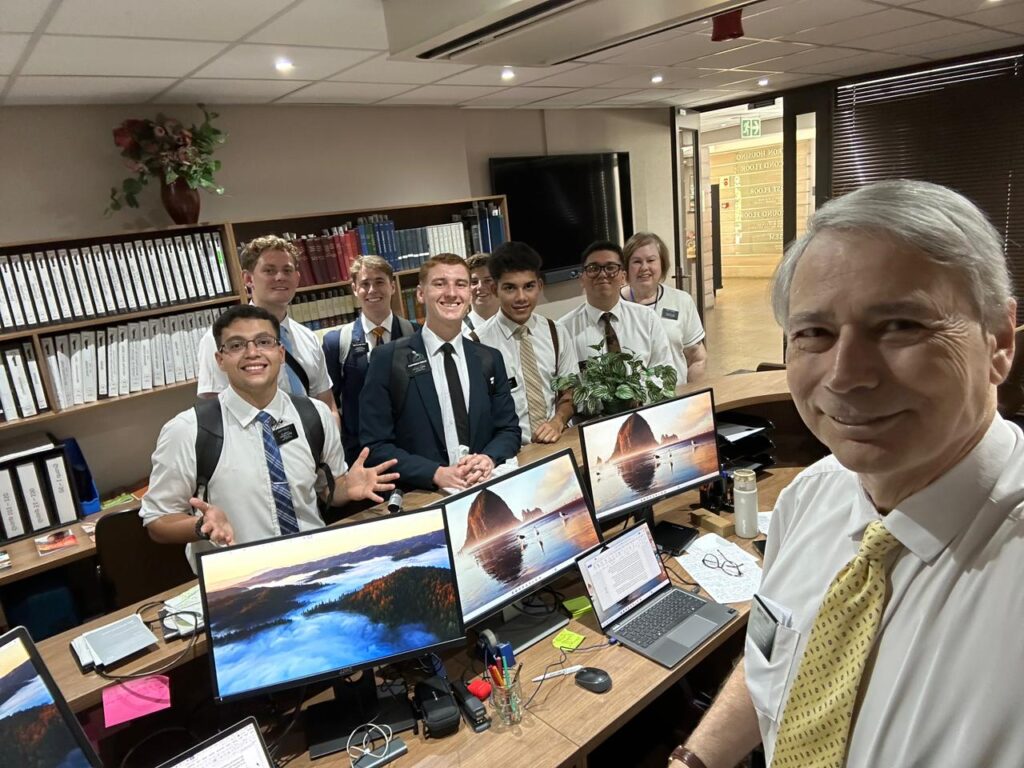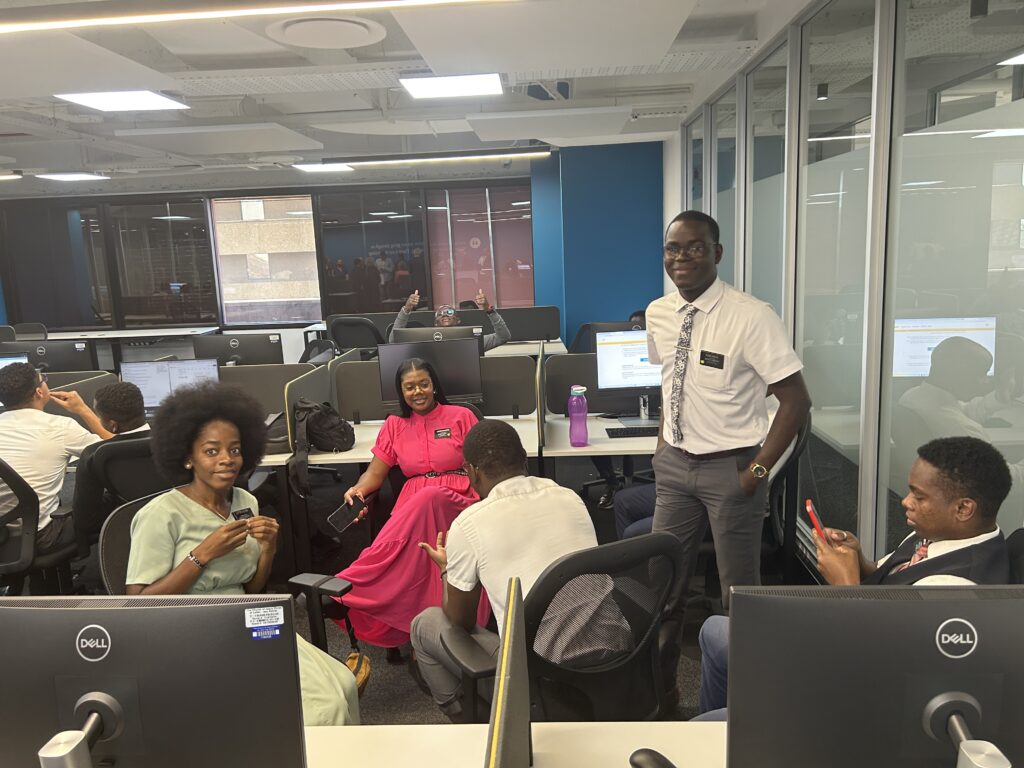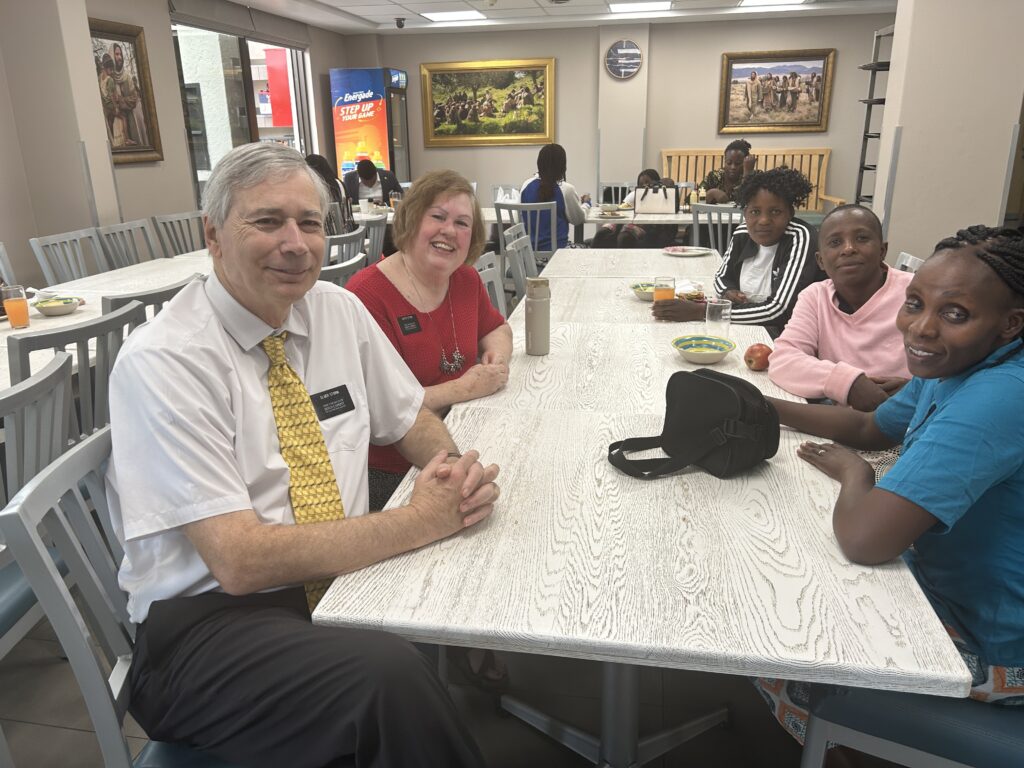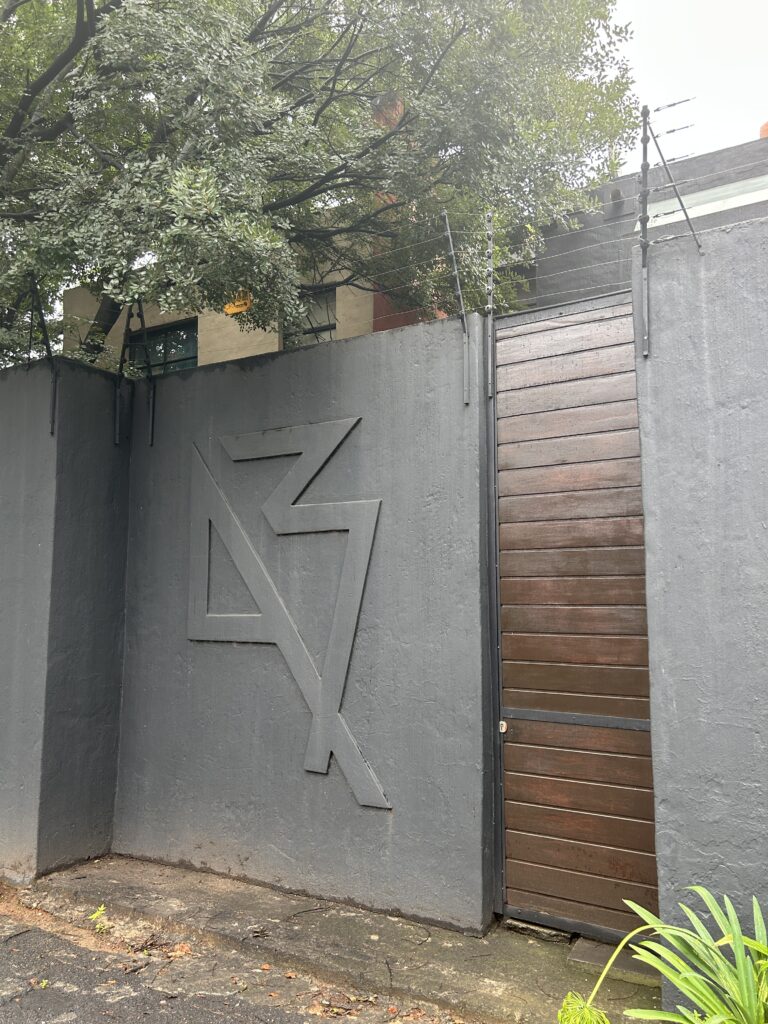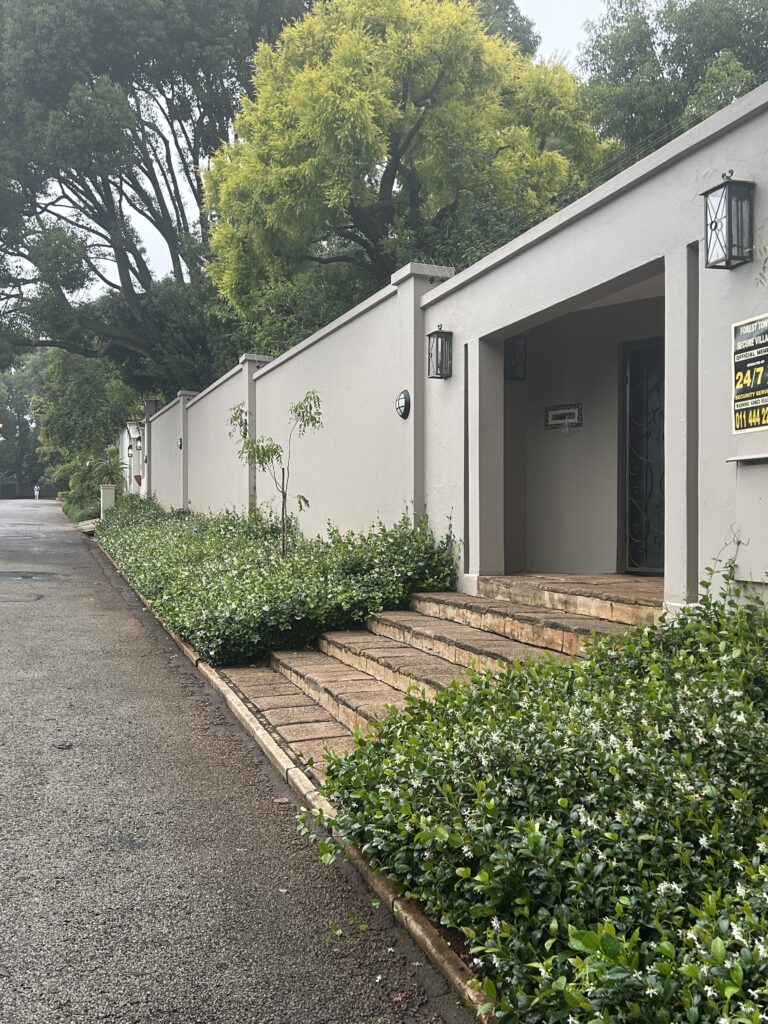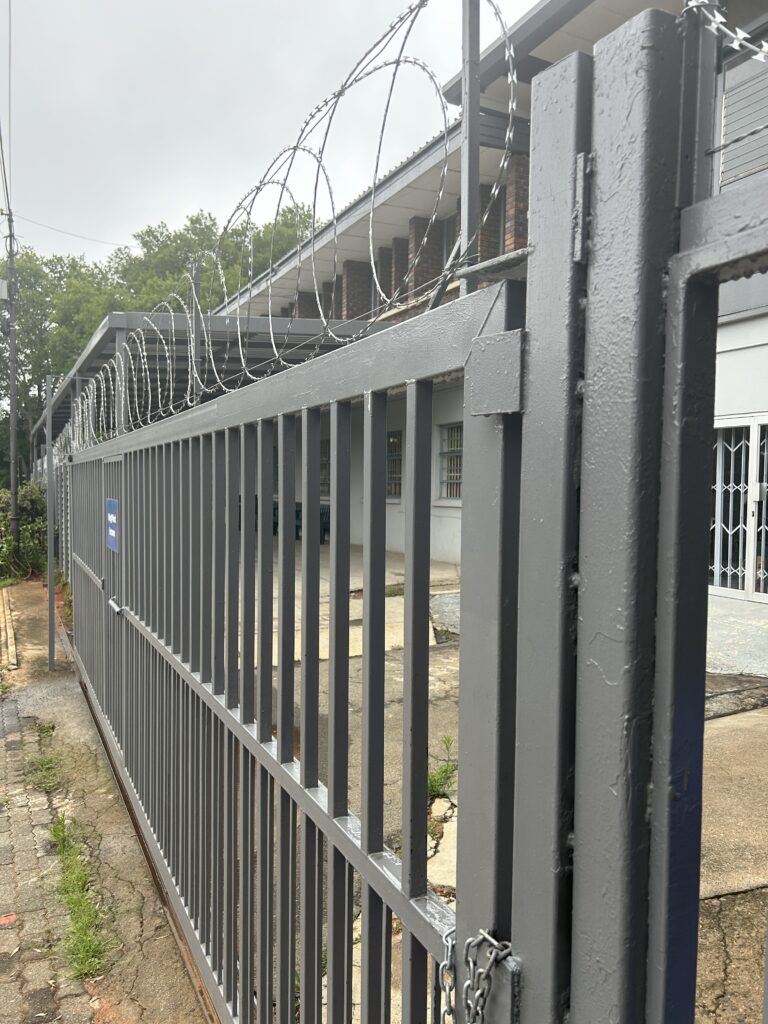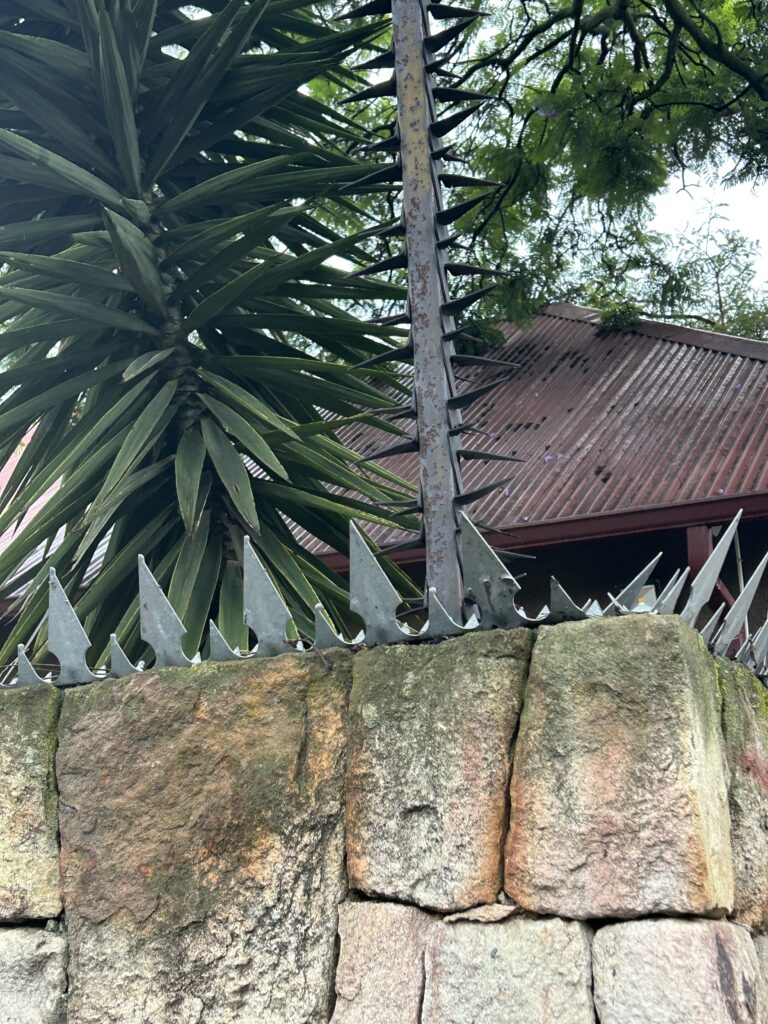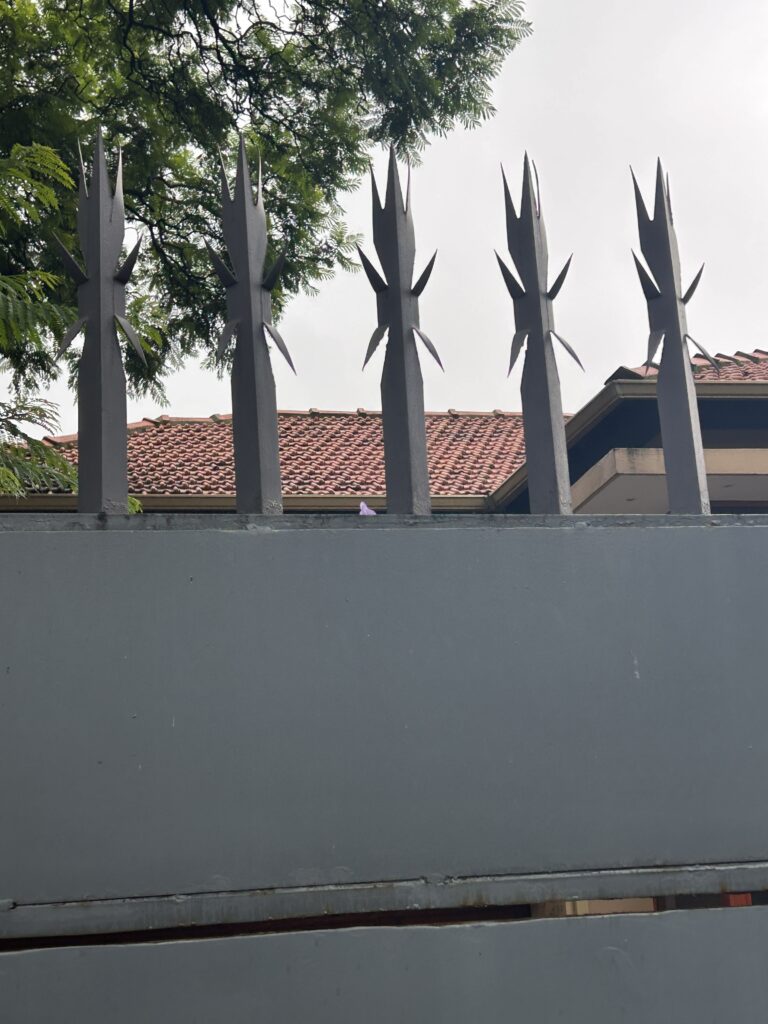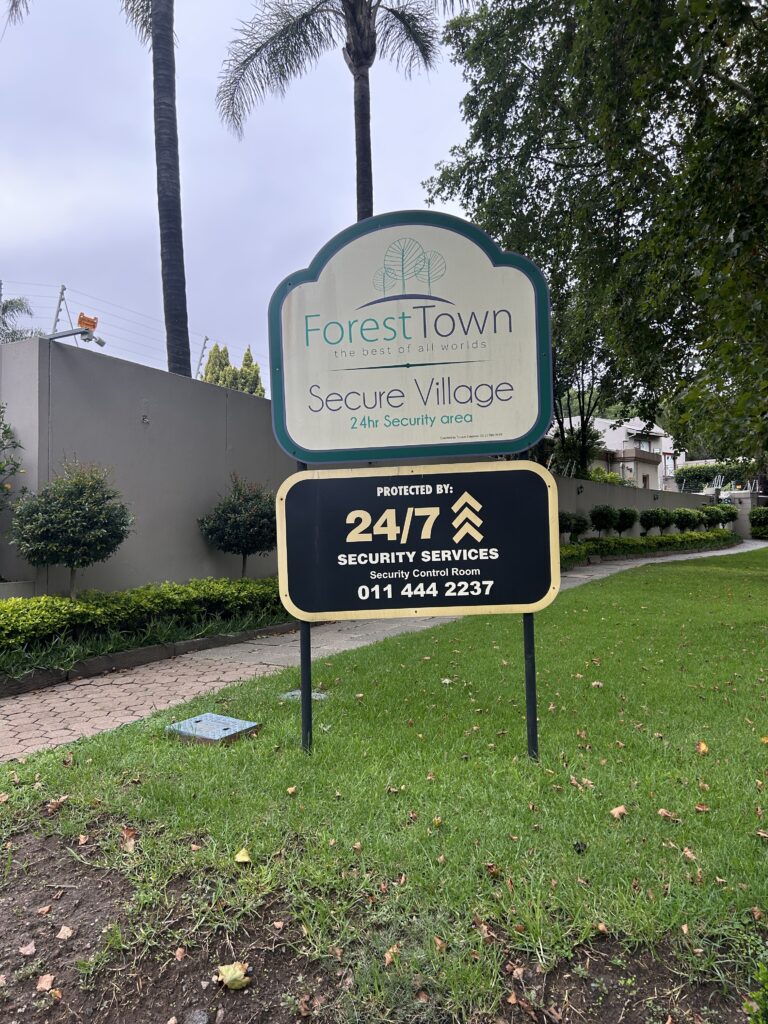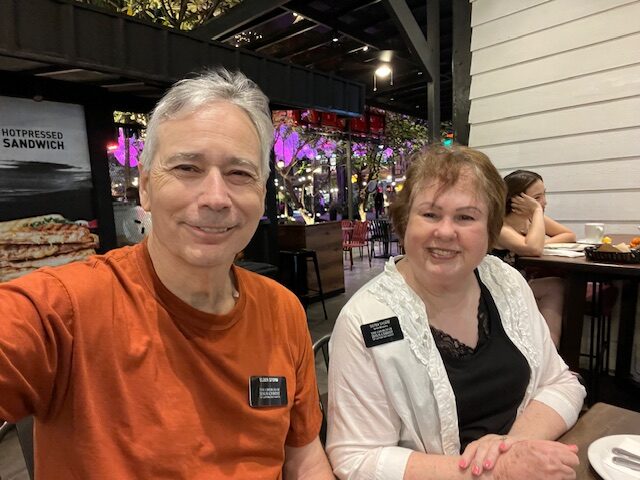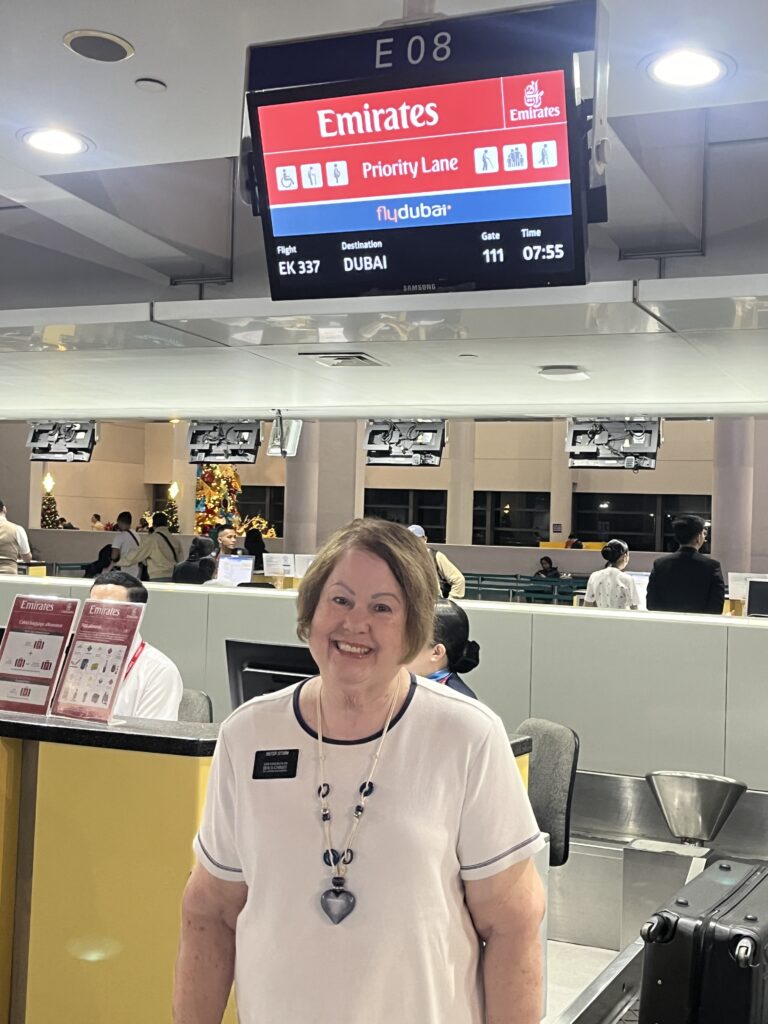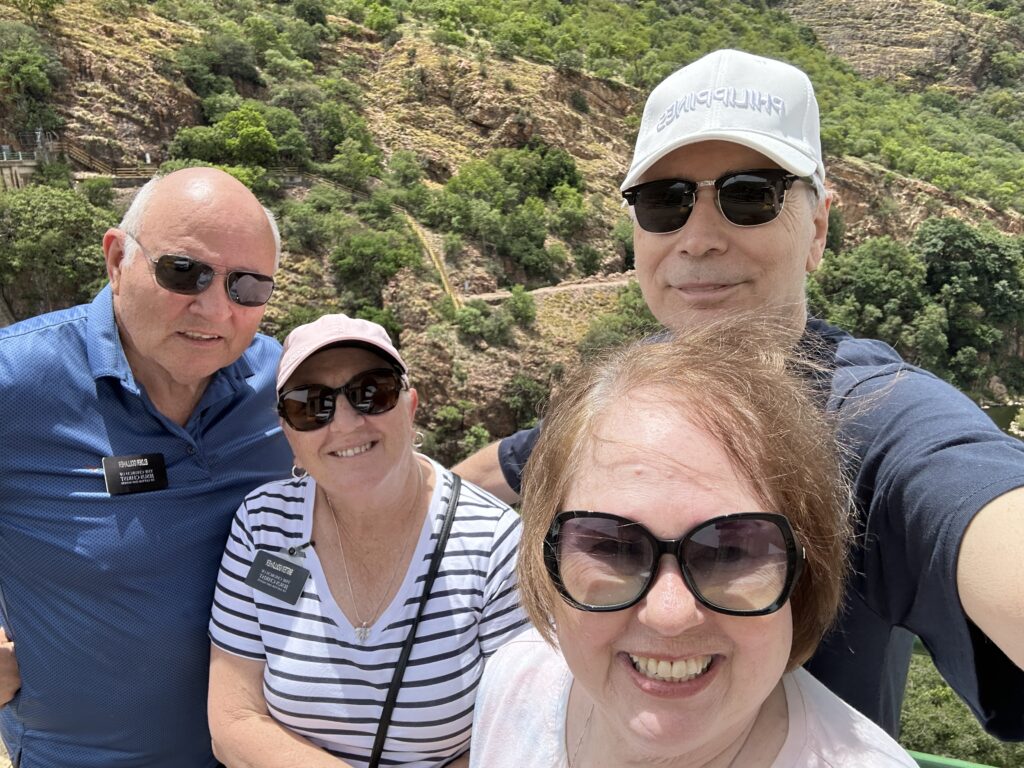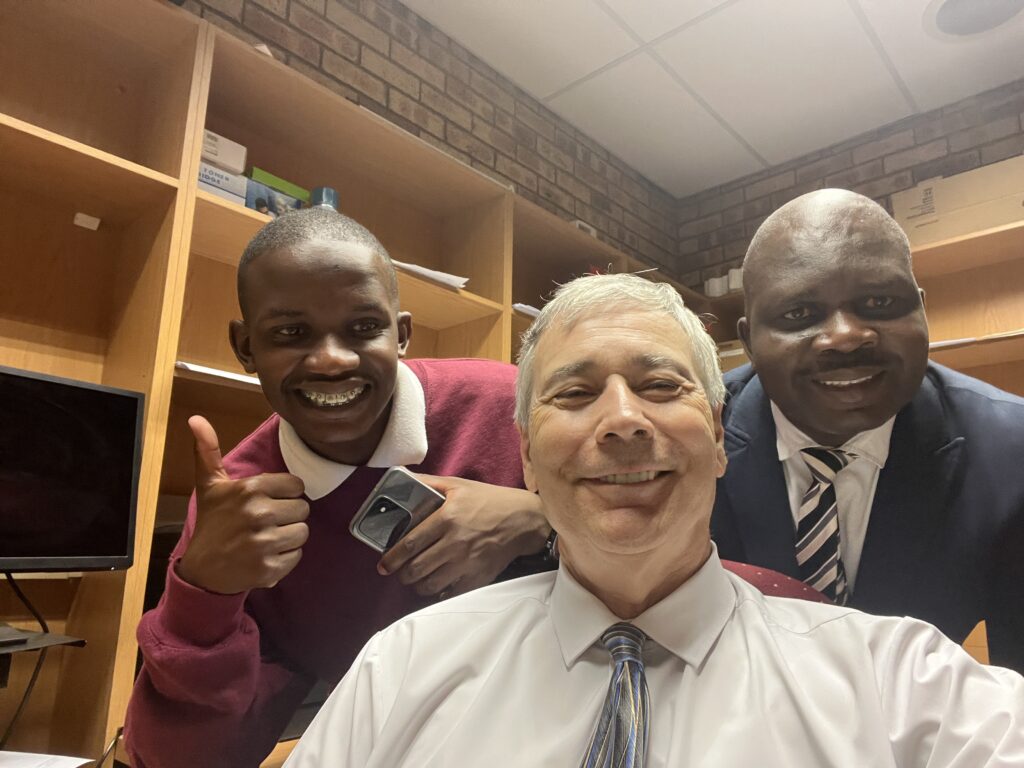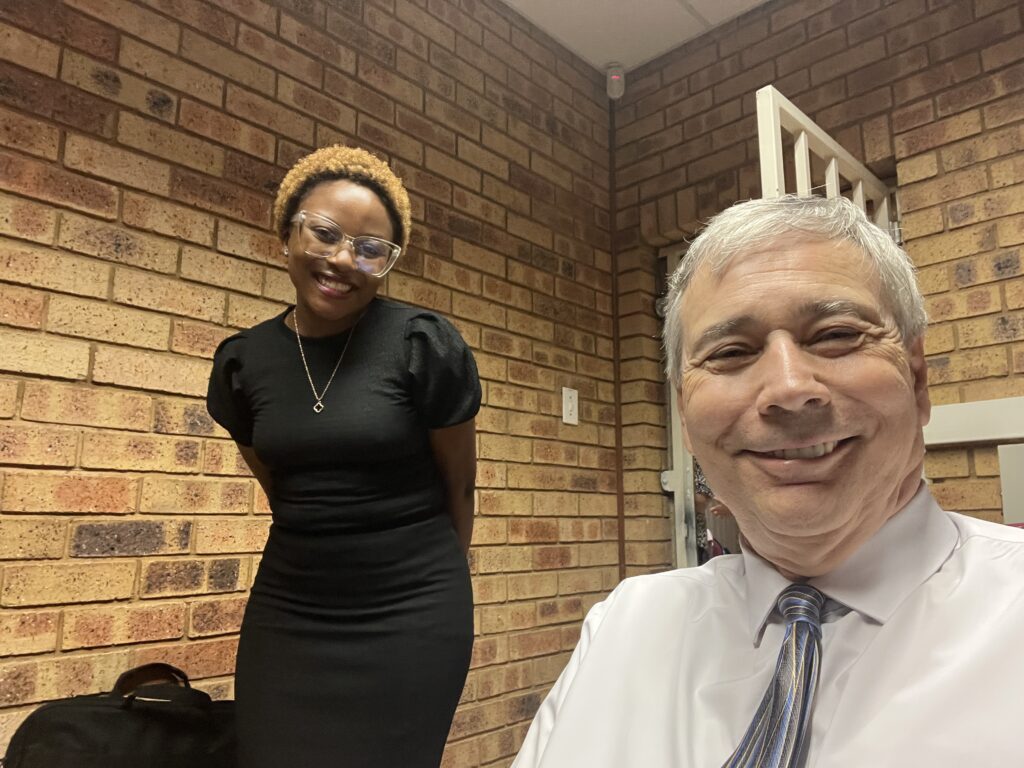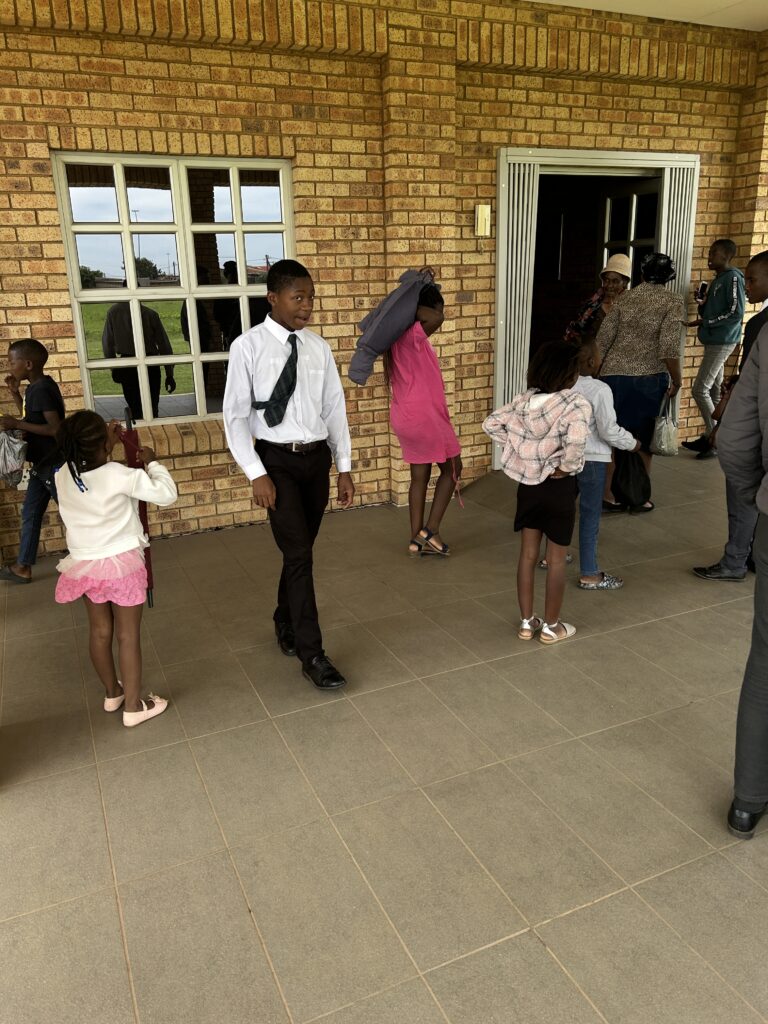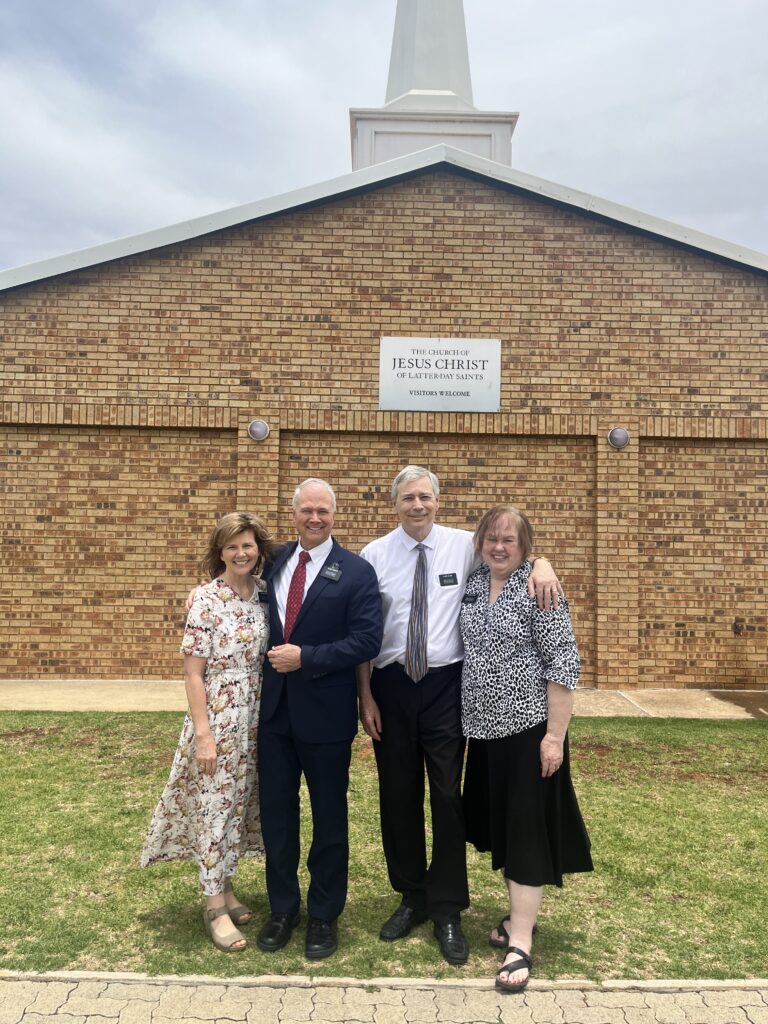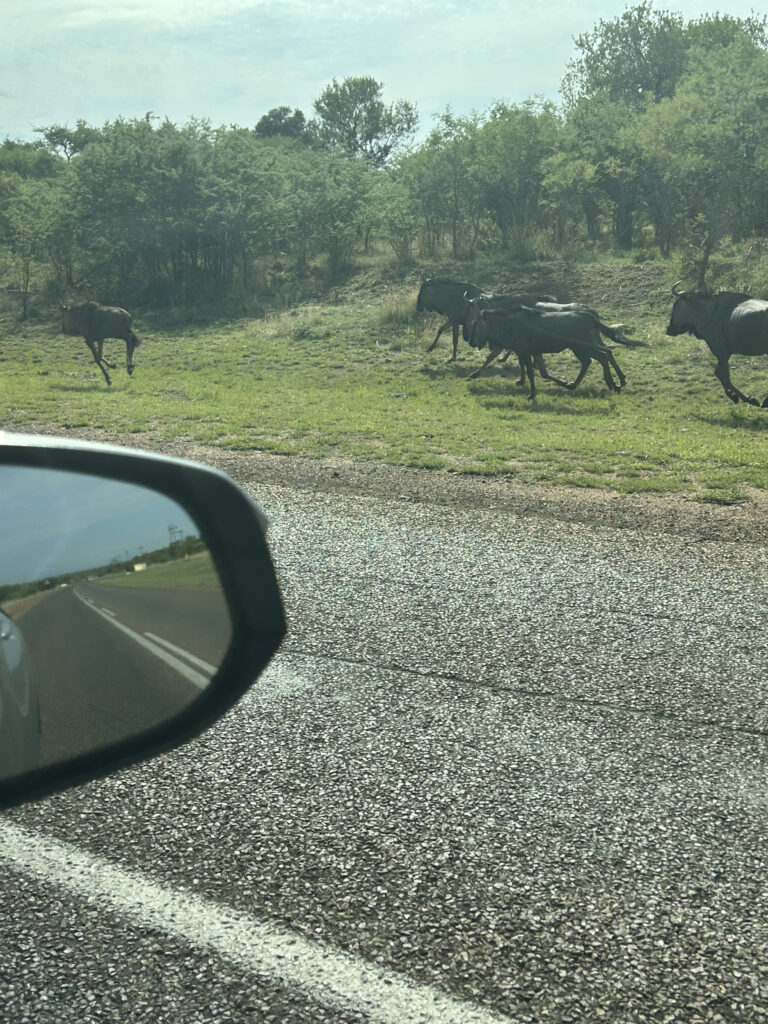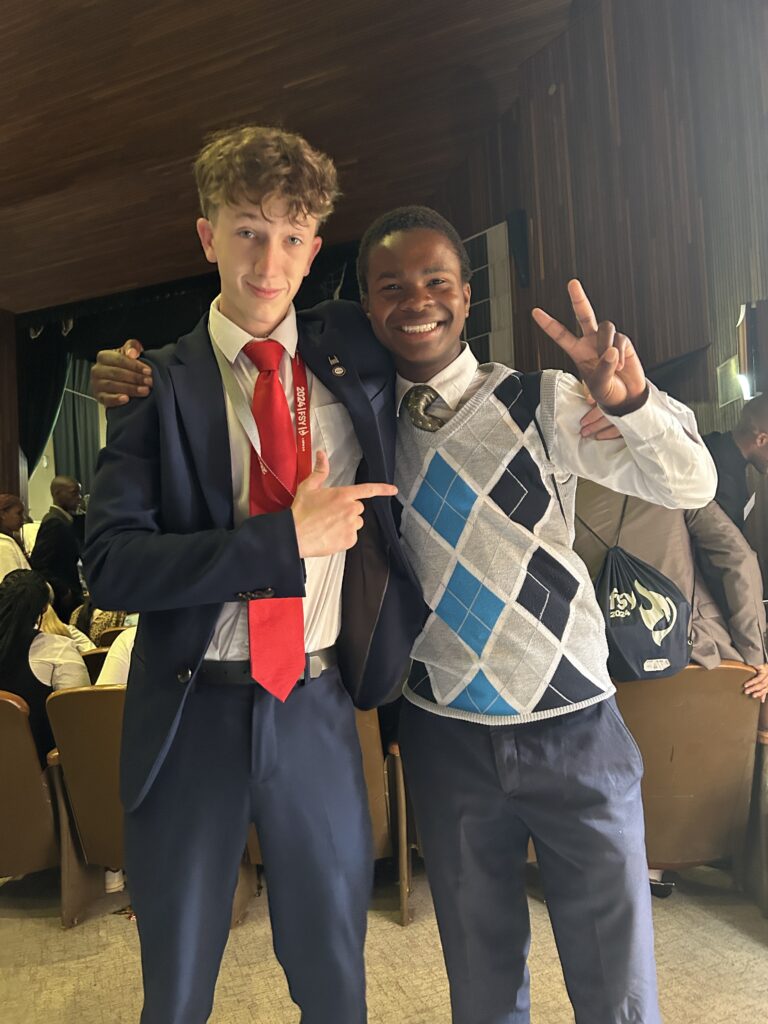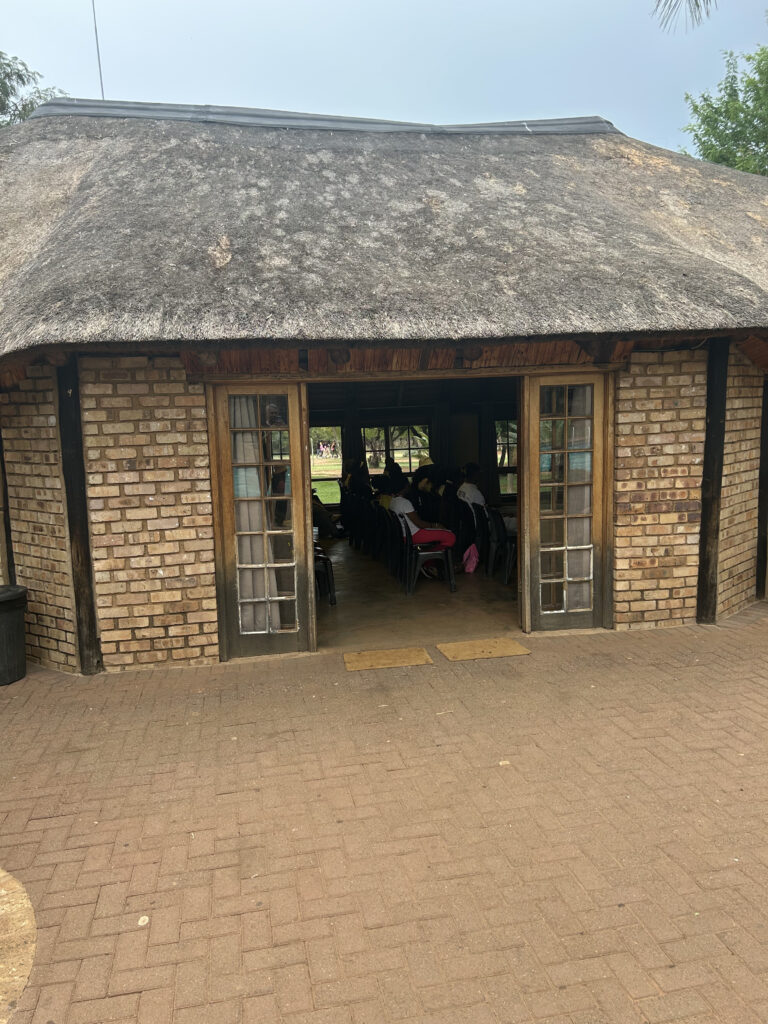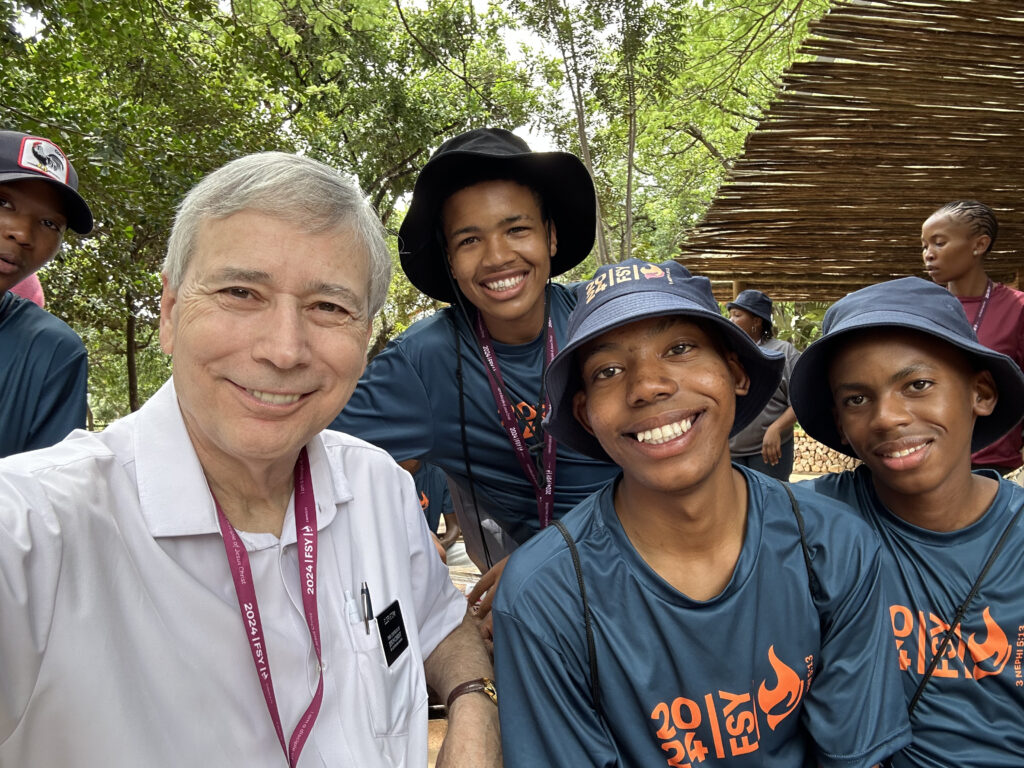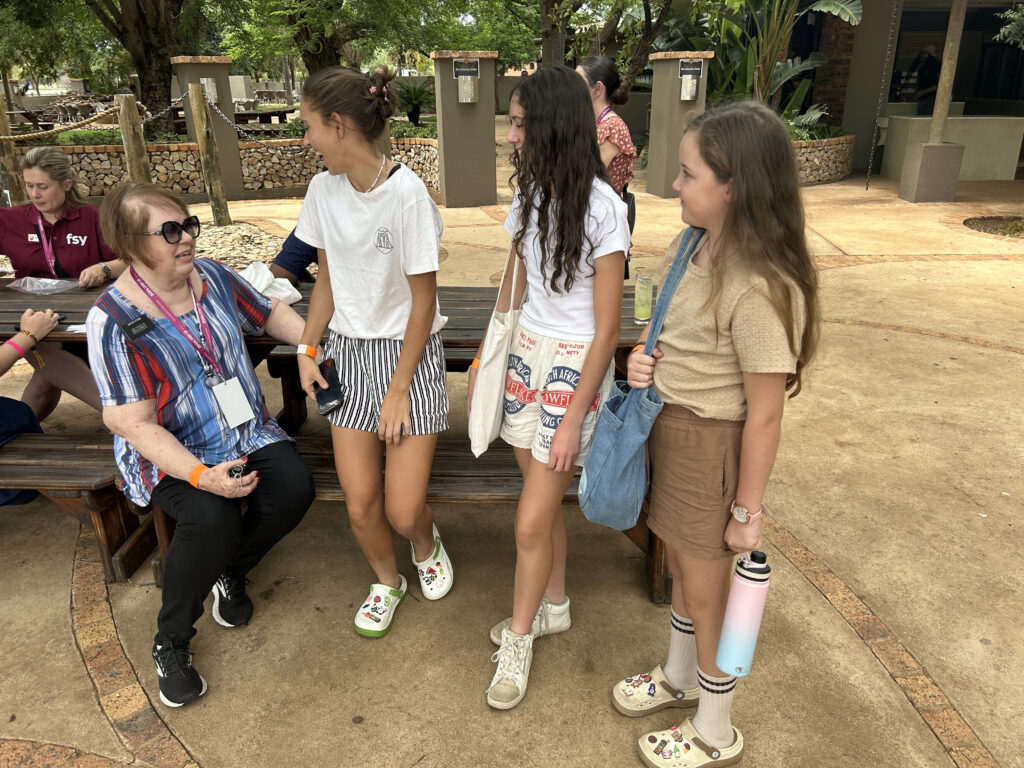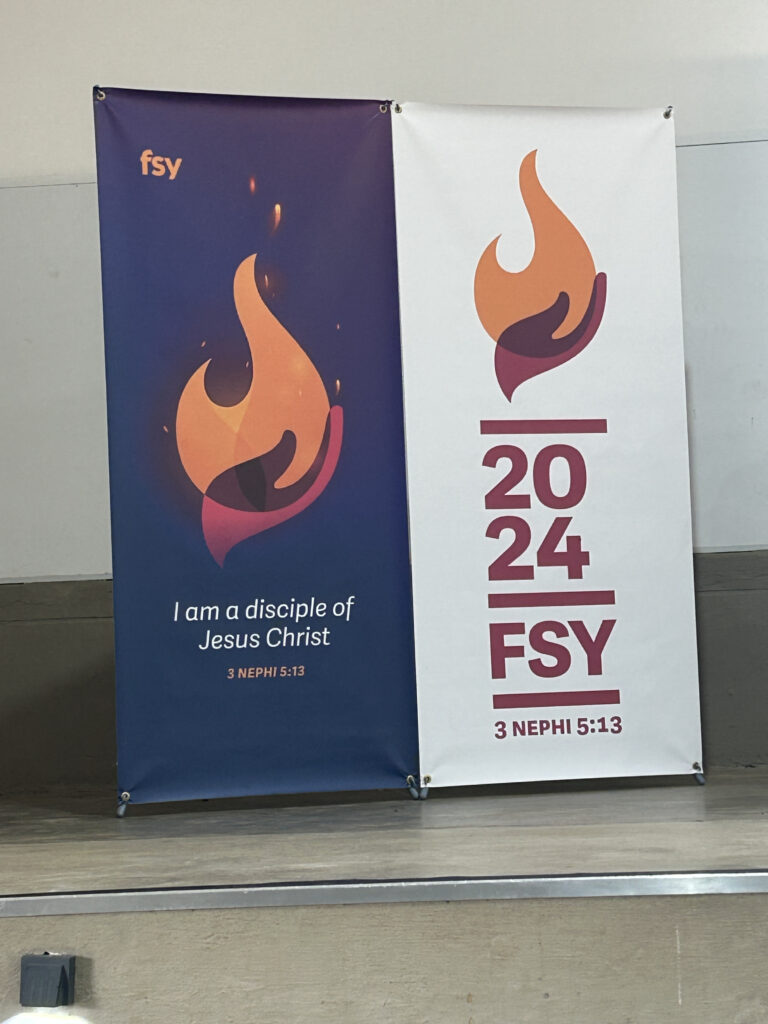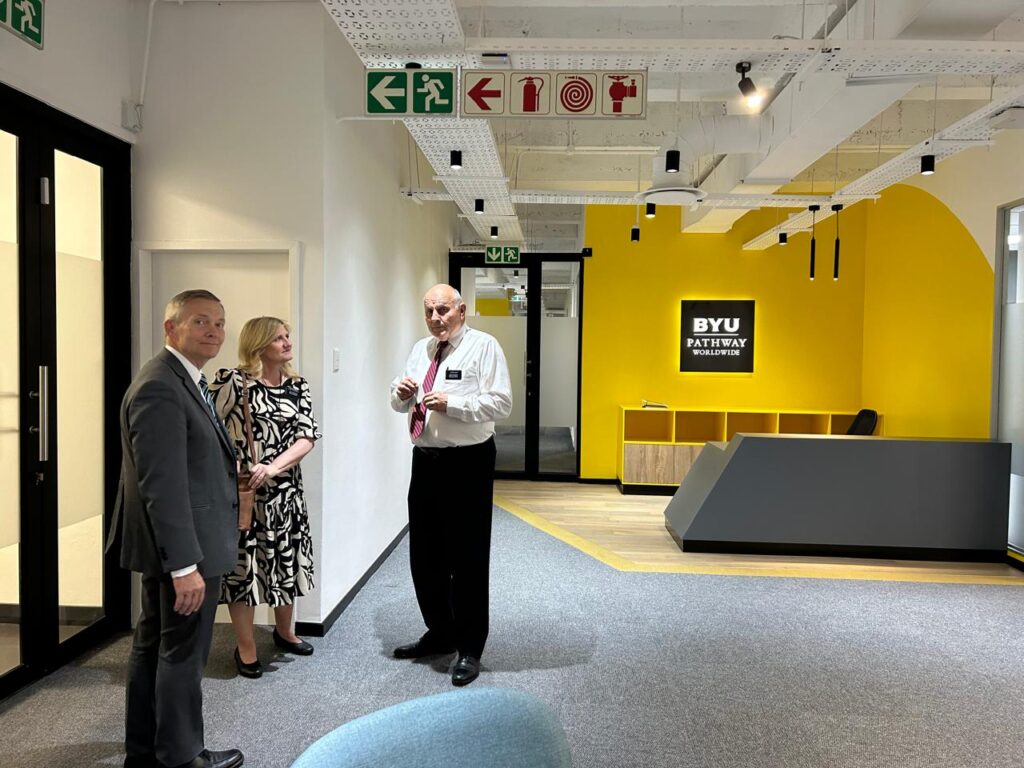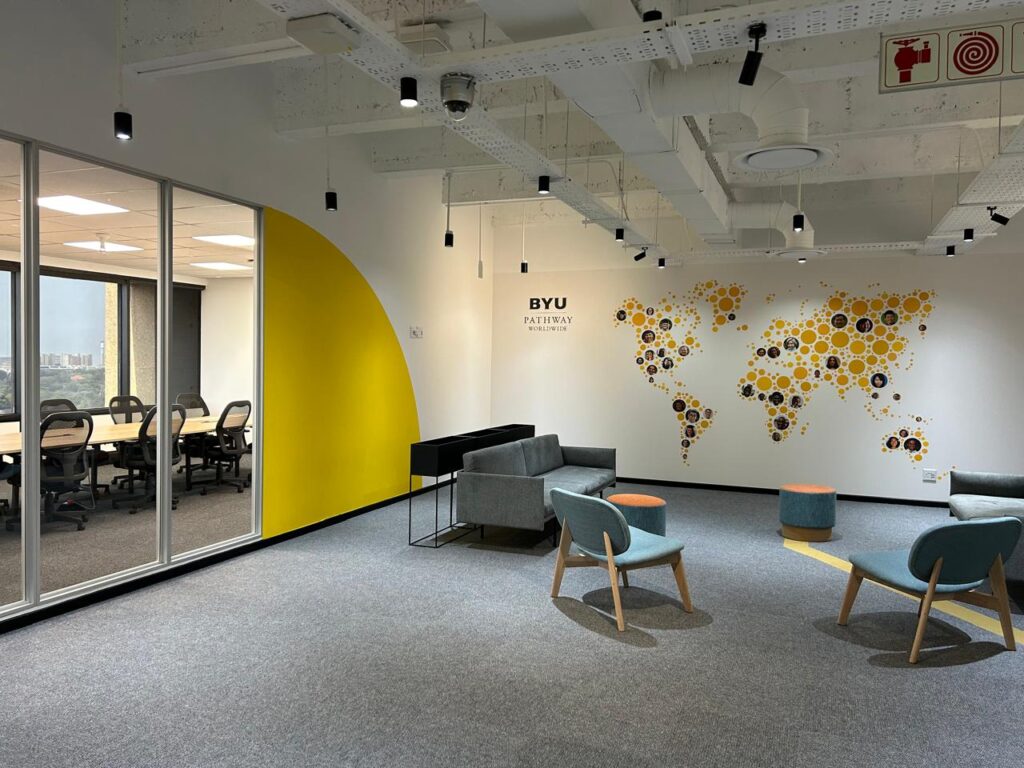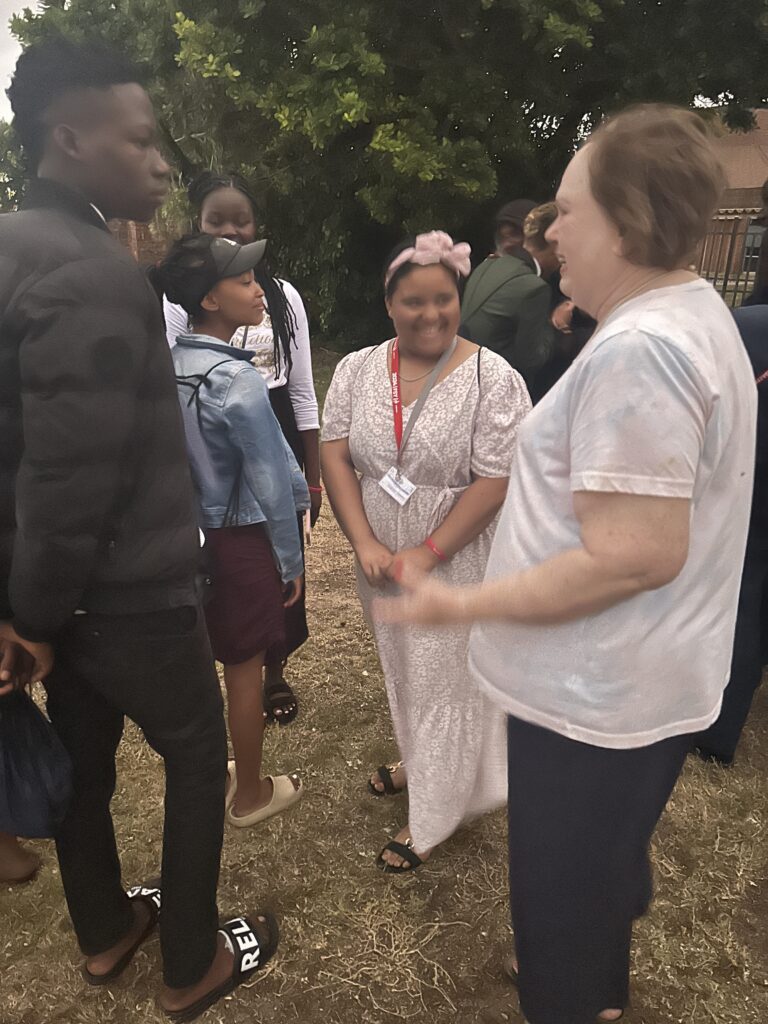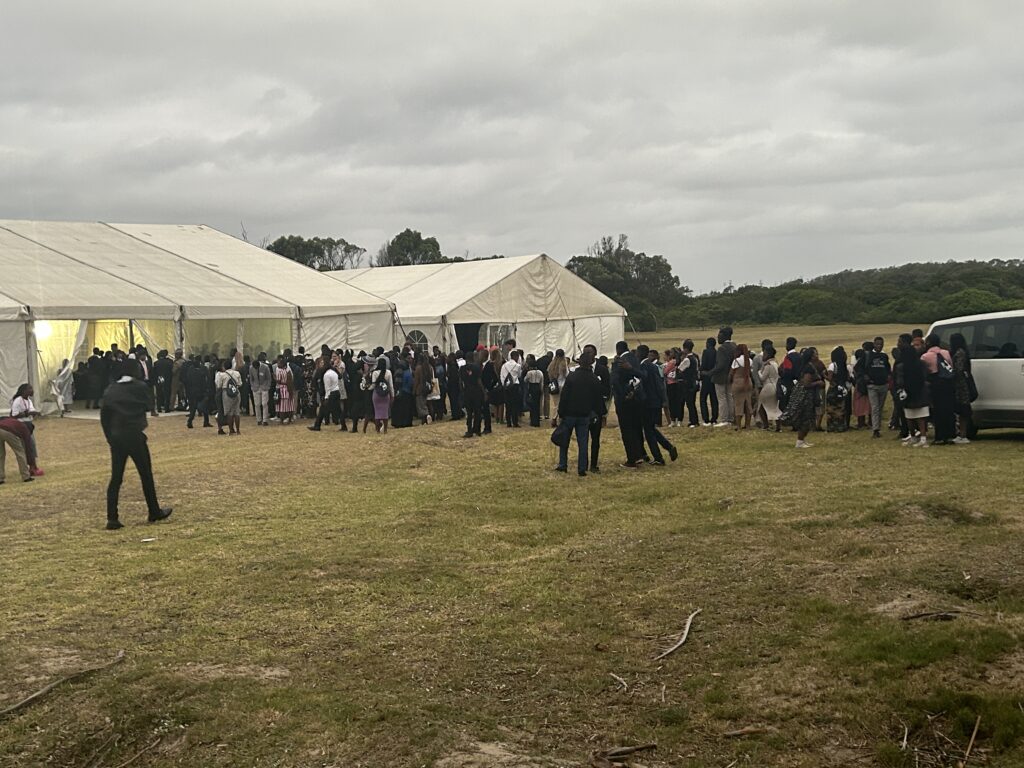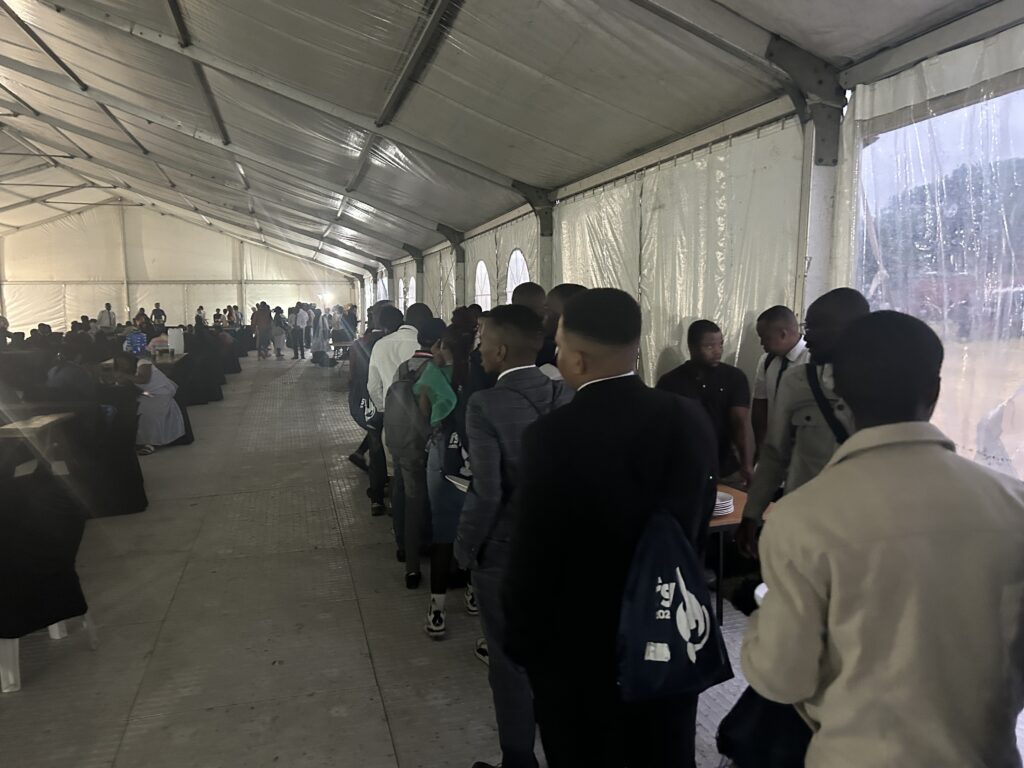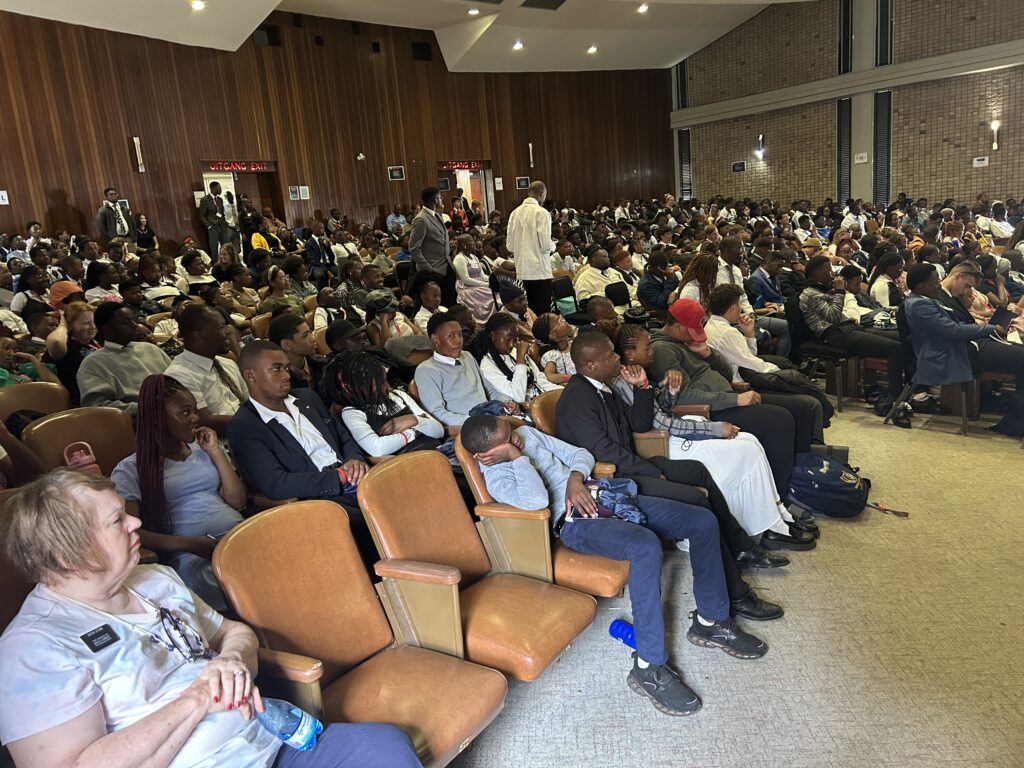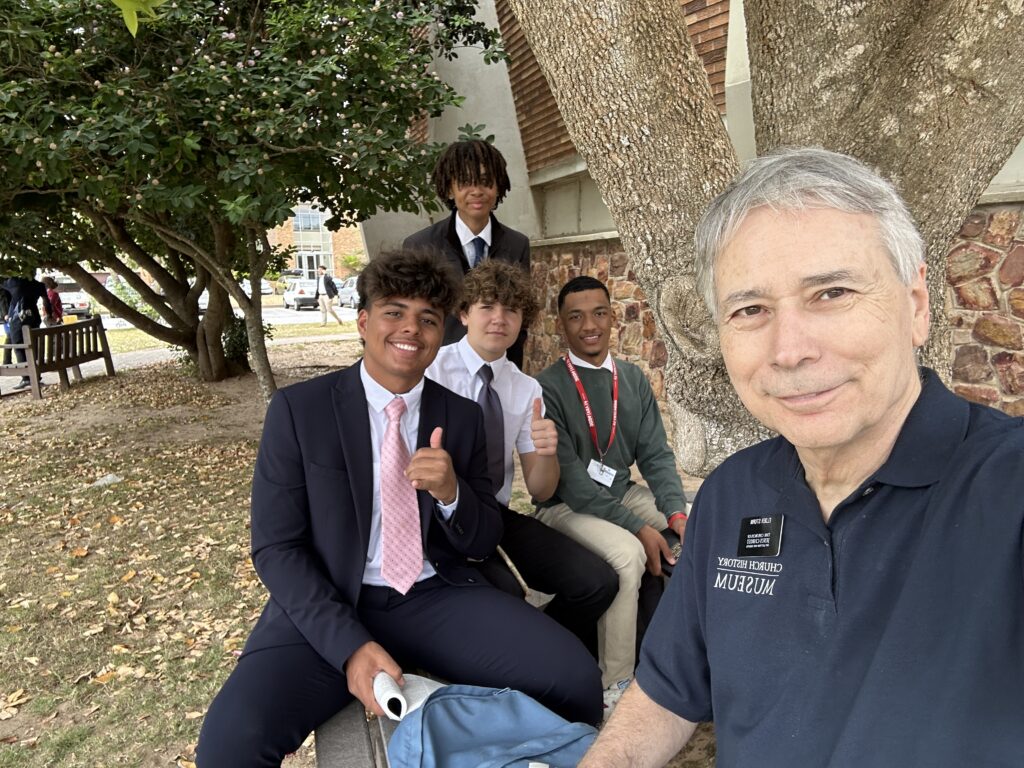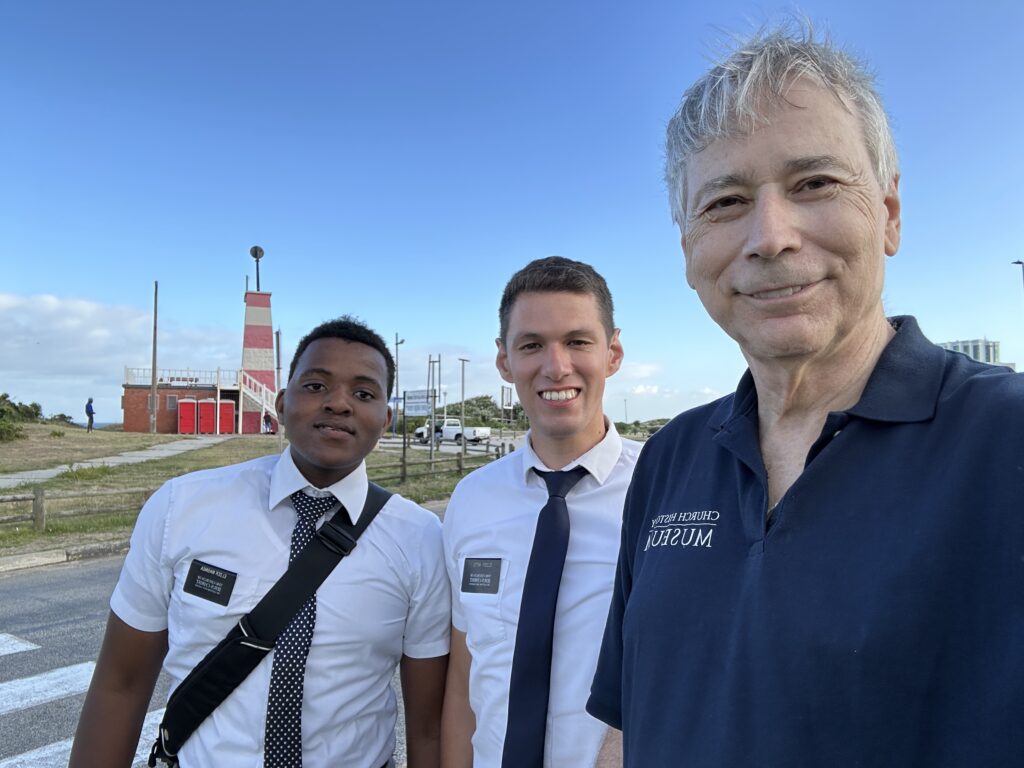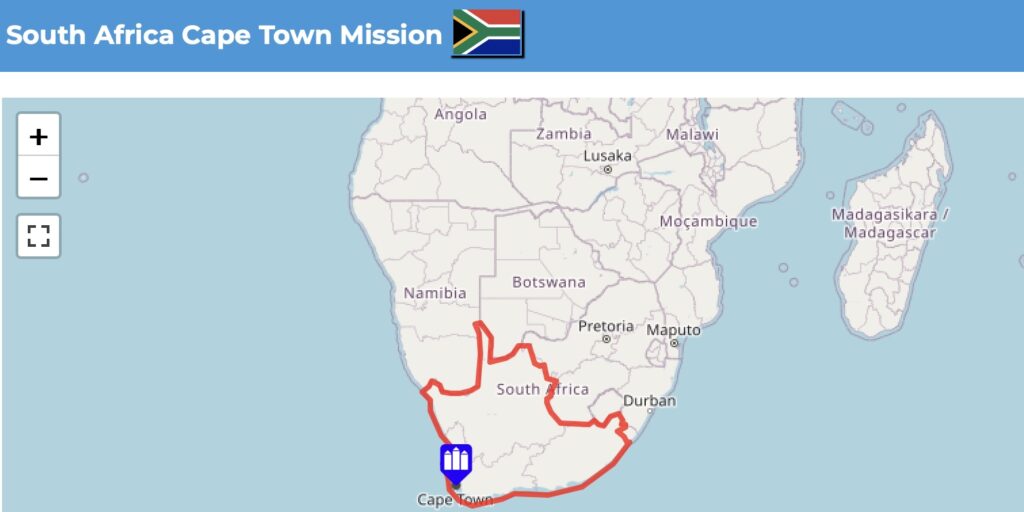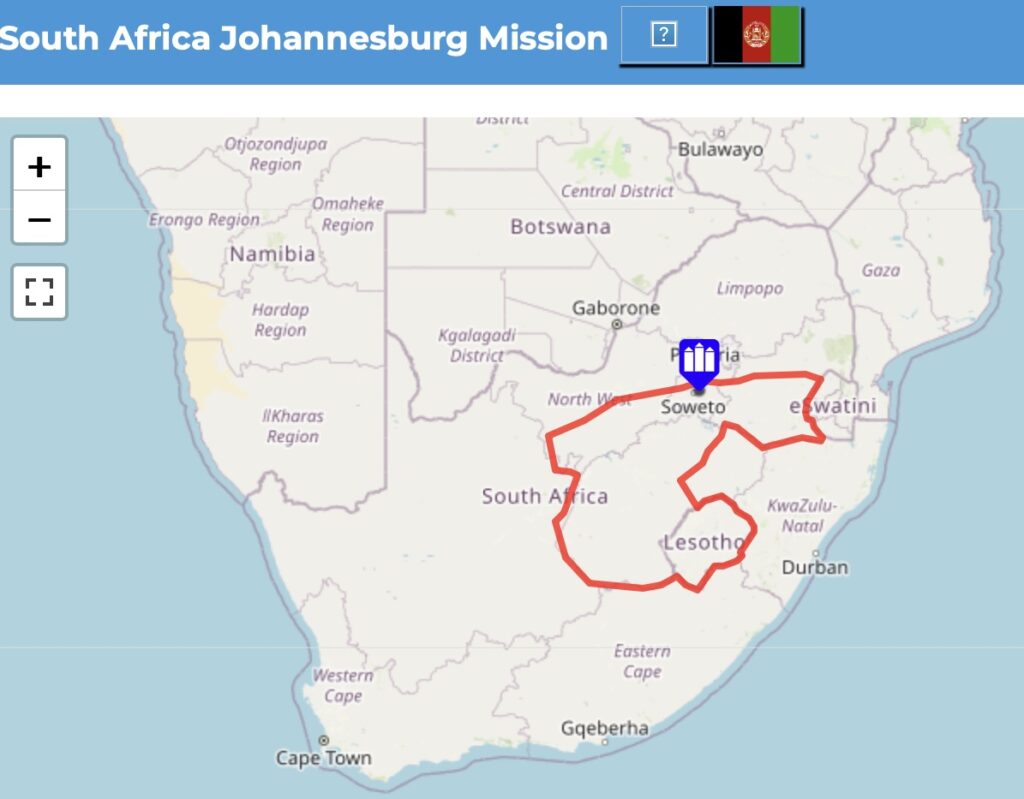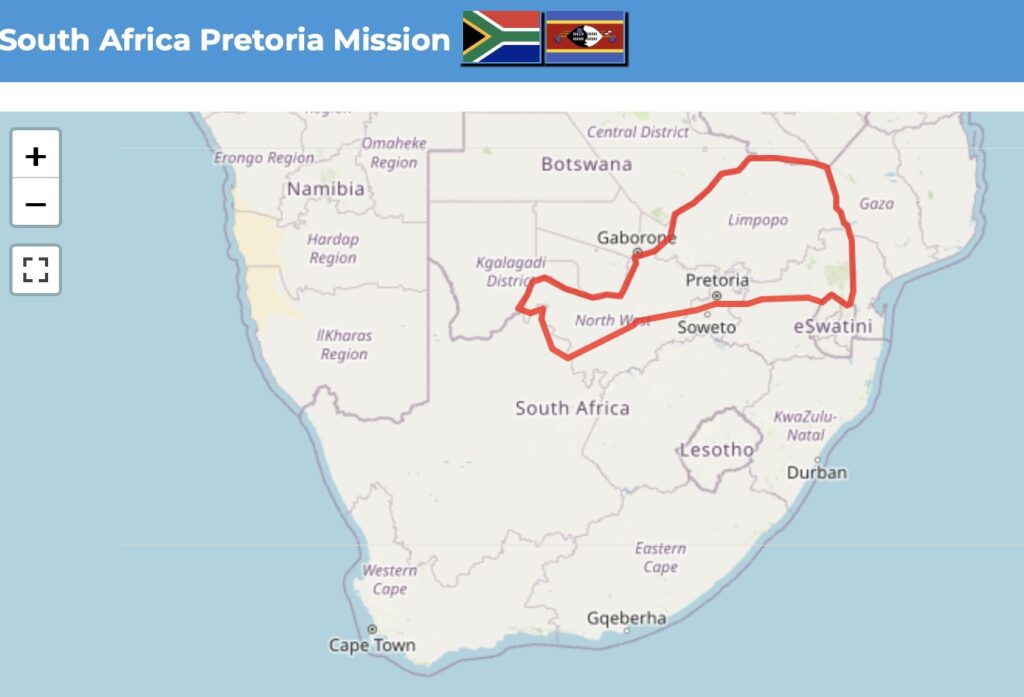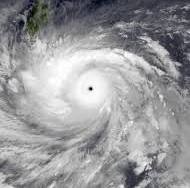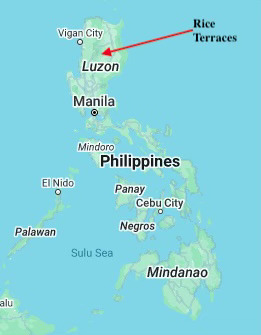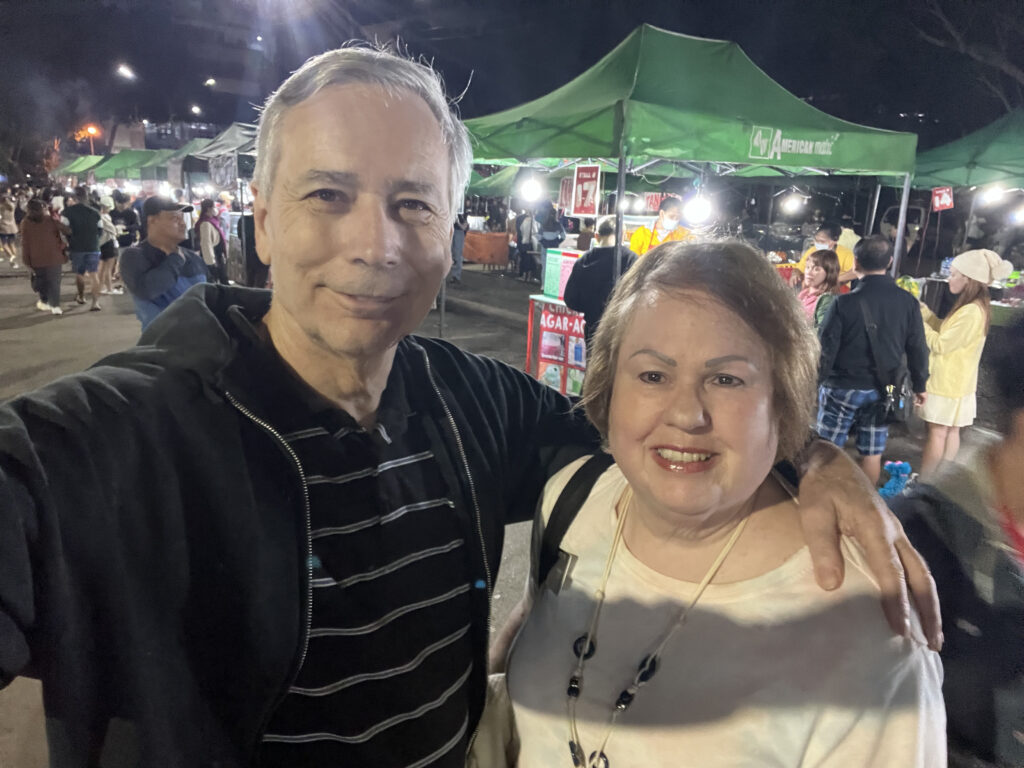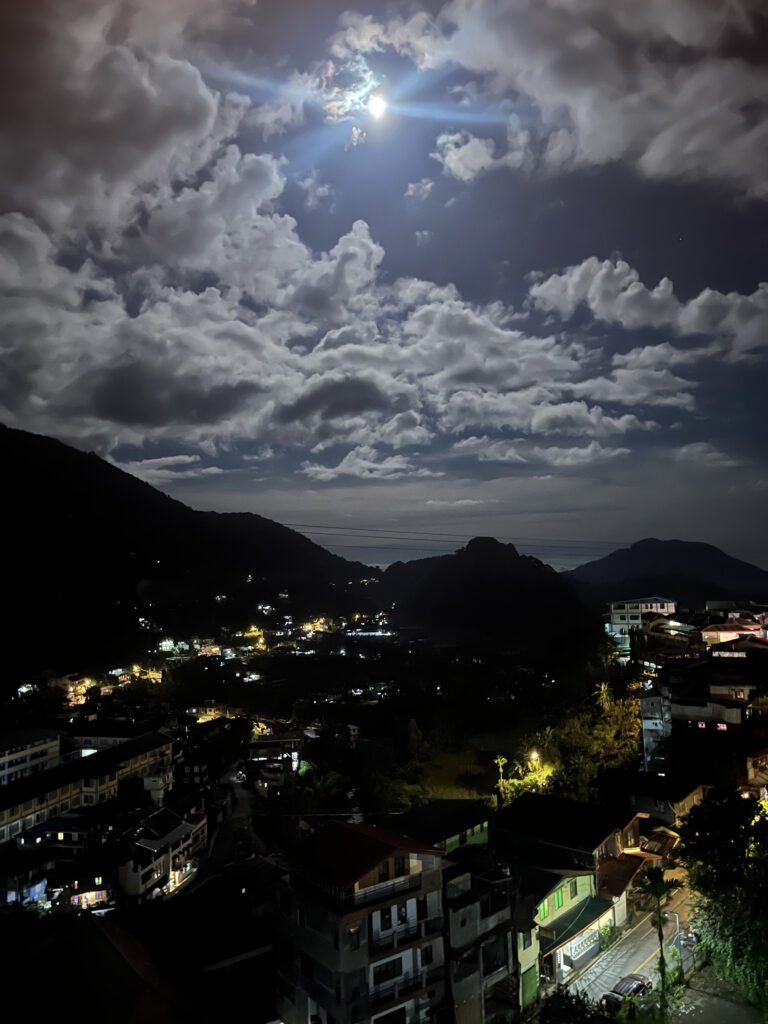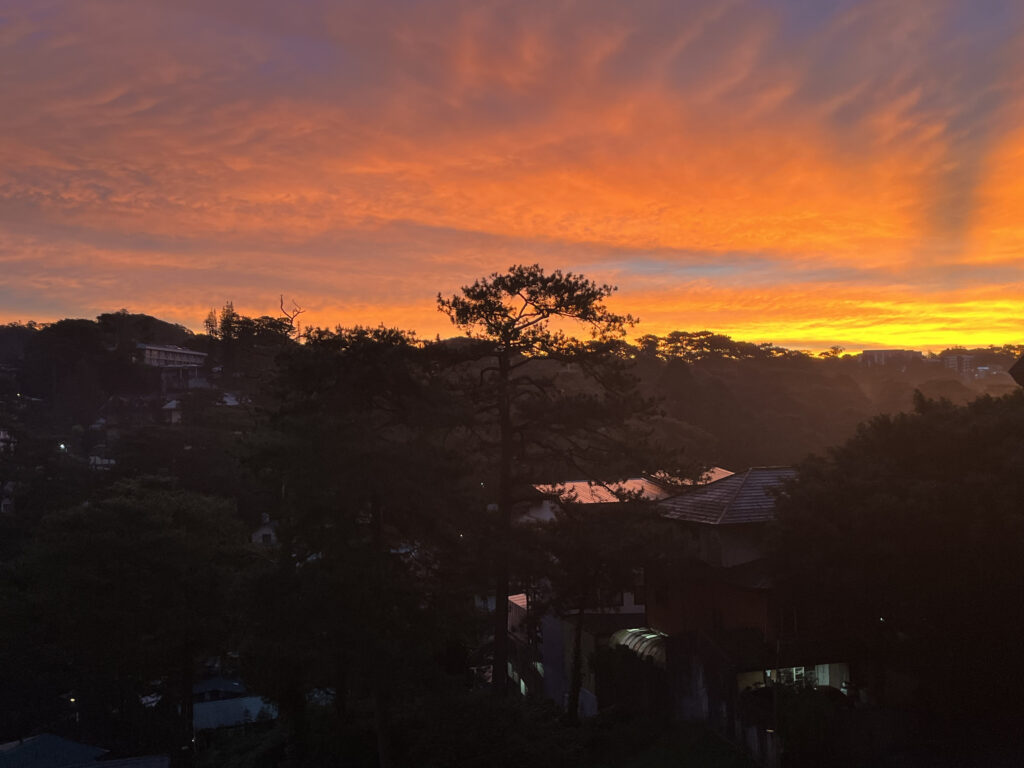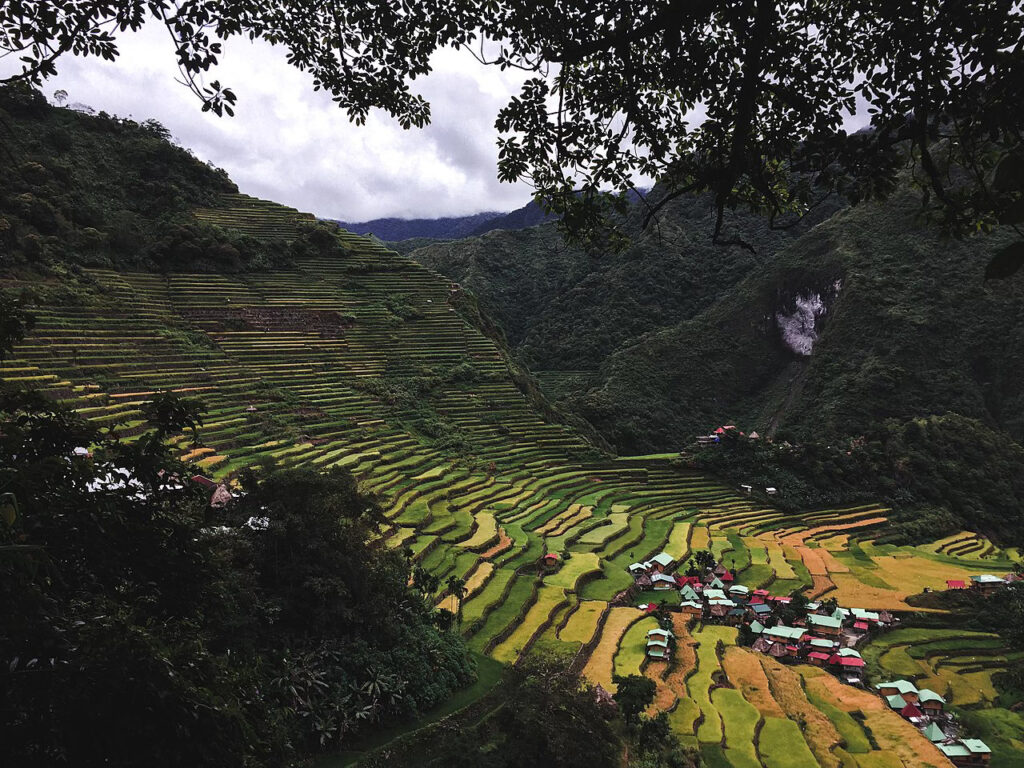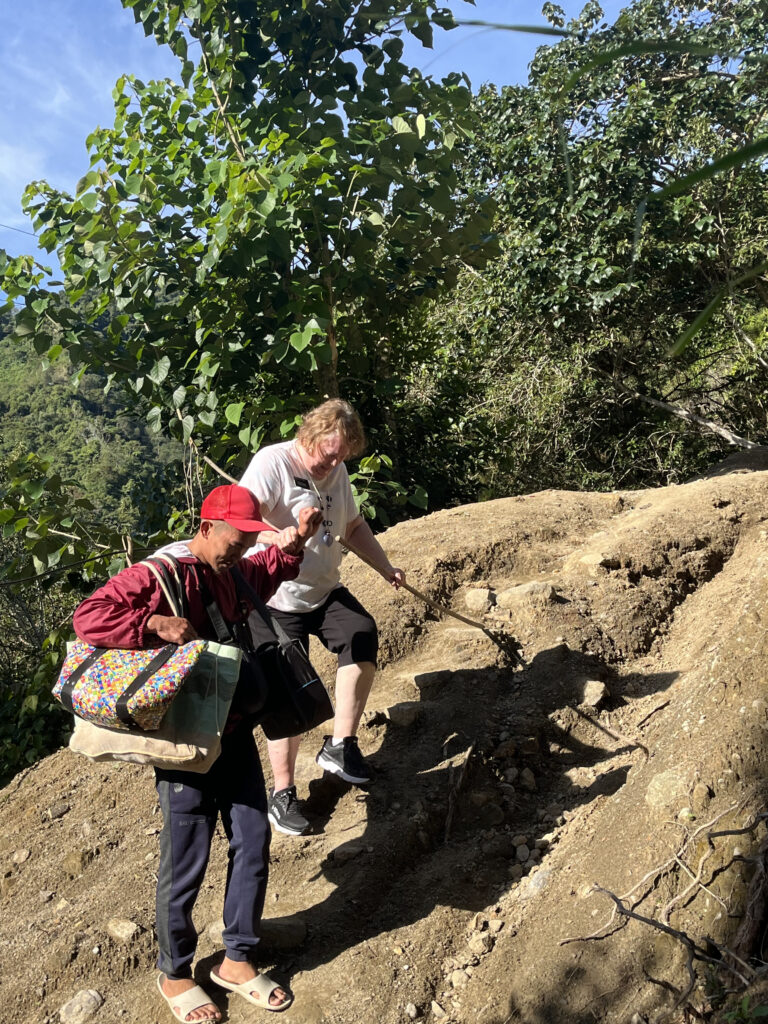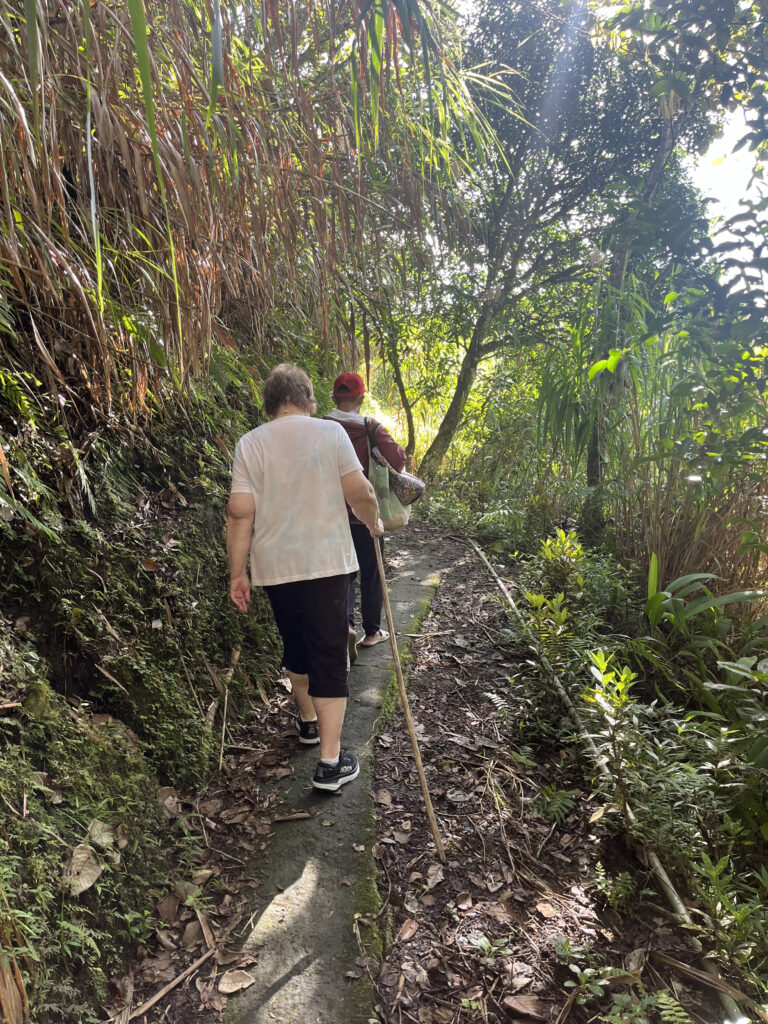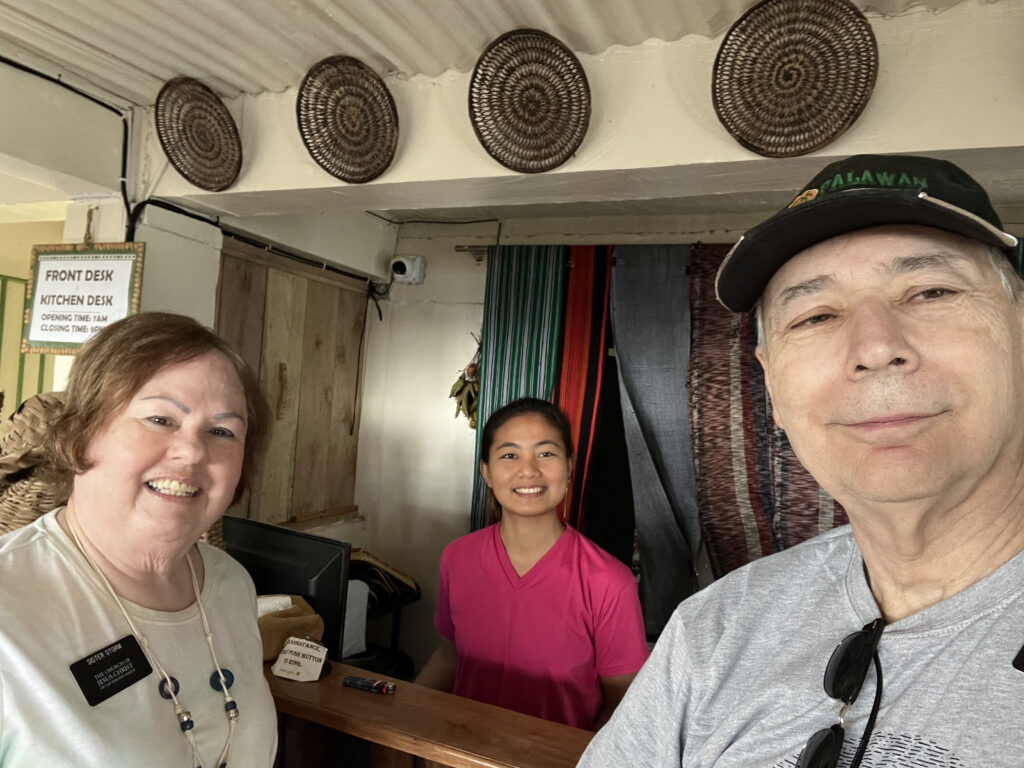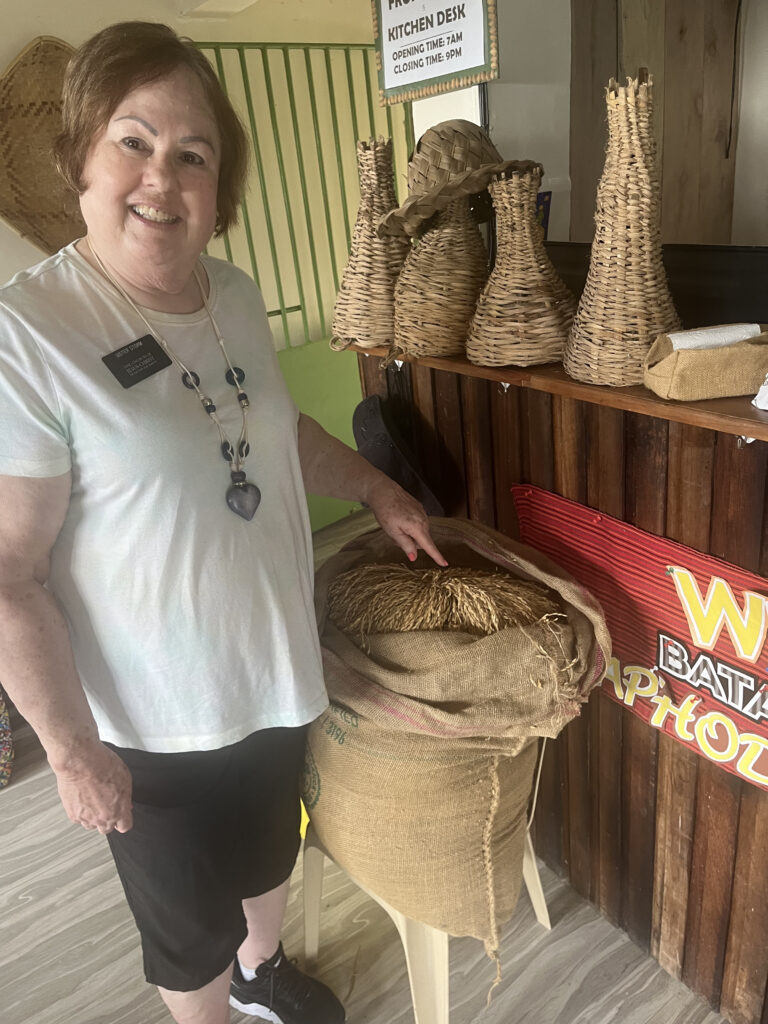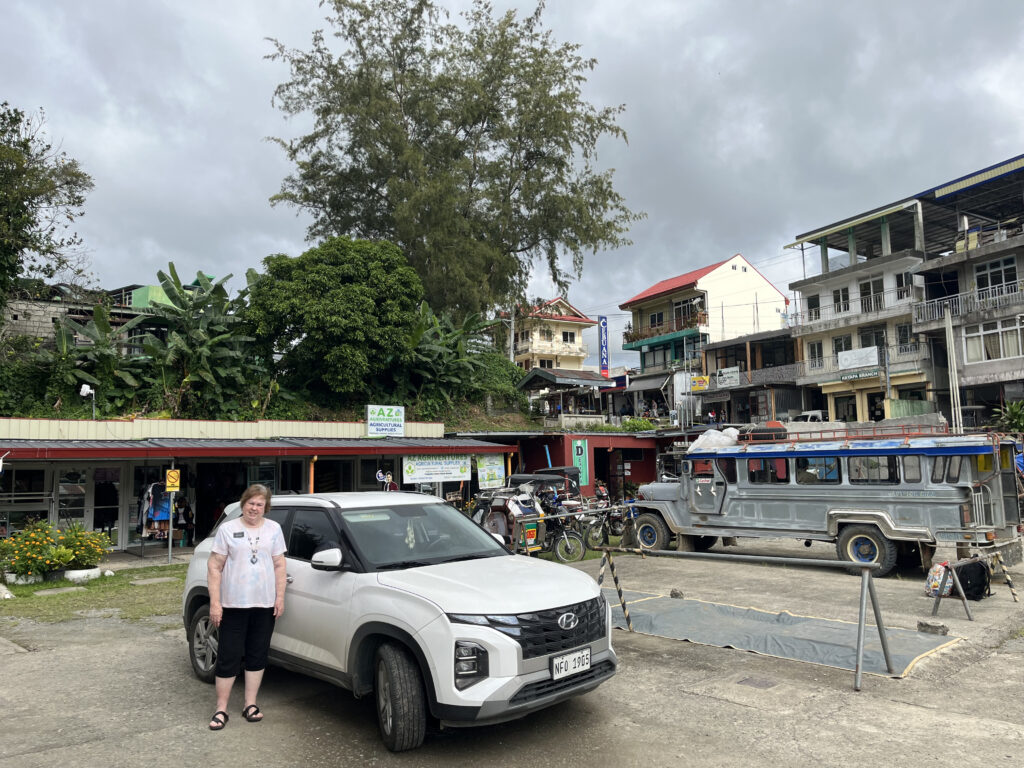Temples in Africa
One thing of the things that has been a very humbling experience for us on our senior mission is to realize the sacrifices that some members of the Church in third world countries make in order to get to a temple to receive their endowments and to be sealed together for time and all eternity.
In the US, some of us of often find it difficult to get to the temple, even when a temple is less than a few hours drive. For us, living in Northern California, the Sacramento Temple is less than 25 minute drive. I will never again allow myself to think about driving to the temple as a burden.
This is not the case for saints in Africa. Since we work in the Africa South Area office in Johannesburg, with the temple less than a few hundred feet from our offices, we often get to meet African saints from other countries in African that have made a trip with their family to go the temple in Johannesburg.
Below, is a family of six are from Kenya. For this family, their temple trip involved three hour bus trip to the Nairobi, Kenya airport and then nearly a five hour flight to Johannesburg. To put this into a relatable context, this is like someone in the US flying from New York City to Los Angeles to attend the temple.
This family is representative of individuals and families that travel from one of the over fifteen countries to come to the temple in Johannesburg. When they do come, they stay in the temple patron housing and eat in the area office cafeteria at no cost. These saints normally stay for 3-4 days attending multiple temple sessions. The picture of the family below was taken in the Area Office Cafeteria which is next to the Johannesburg temple.

A few weeks later two sisters, who were also from Kenya, stopped by our office looking for the Family History Center so they could print family names to take to the temple. They had been in South Africa for three days doing temple work for their family and were leaving later in the day to return to Kenya.

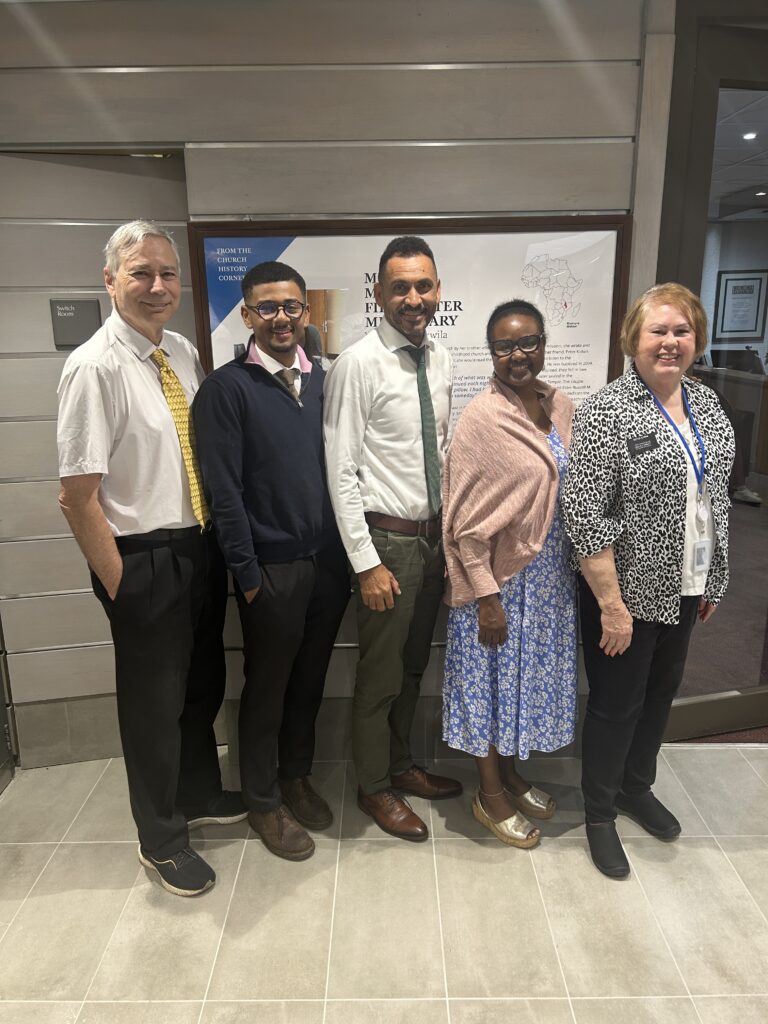
The family above is from the Reunion Islands – which is 500 miles east of Madagascar. Antananarivo, Madagascar is a four+ hour flight to Johannesburg – total travel time to get to the Johannesburg Temple from their home was 12 hours. Like many others we meet, they make periodic trips to the Johannesburg temple at a great personal financial sacrifice.
When we meet these African saints, I always walk away humbled. These families are only the most recent temple attendees we have met who are in town to attend the temple.
I guess why I decided to share some of my thoughts on temples is because we have had a chance in recent weeks to visit the Zimbabwe Temple (to be completed and dedicated this year), the temple site in Cape Town (yet to begin construction), and to attend the groundbreaking ceremony for the Antananarivo Temple in Madagascar.
Having personally witnessed how Filipino and African saints sacrifice to attend the temple, I have decided that I will never complain about the time or effort it takes to attend the temple regularly and to participate in temple worship. If I do, I have given Marcia permission to slap me.

Johannesburg Temple at night.
New Temples Are Coming To Africa
Zimbabwe
As mentioned, during a recent trip to Zimbabwe, we had the chance to visit the nearly completed Zimbabwe Temple. Because of the political situation in the country, the temple grounds are locked down and we couldn’t get close enough to take any pictures. In fact, a few weeks after we returned from Zimbabwe, the US Embassy issued a travel advisory for Zimbabwe and recommended that US citizens not travel to Zimbabwe because of the potential for a military coup.
Some historical perspective. When I served my first mission to South Africa in the late 1960s, the place all missionaries wanted to serve in was Zimbabwe (then called Rhodesia). Shortly after Britain gave Rhodesia its independence, Robert Mugabe became the country’s leader through a military coup and became its dictator ruling until 2017. Under his leadership, the country went from one of the most prosperous countries in Africa and envied by other African countries (and one of the places where every missionary at the time want to serve) to one of the counties that now ranks as one of most economical underperforming countries in Africa.
The current president of the country, Zimbabwe President Emmerson Mnangagwa, ousted Mugabe in 2017 and has recently acted to consolidate his hold on power with the dismissal of senior army generals because of a growing fear of a possible coupe to over throw his administration. Hence, the US Embassy’s travel advisory.
Madagascar
A few weeks ago, we had the chance to travel to Antanavarivo, Madagascar to attend the temple groundbreaking ceremony for the Antananarivo Madagascar Temple.
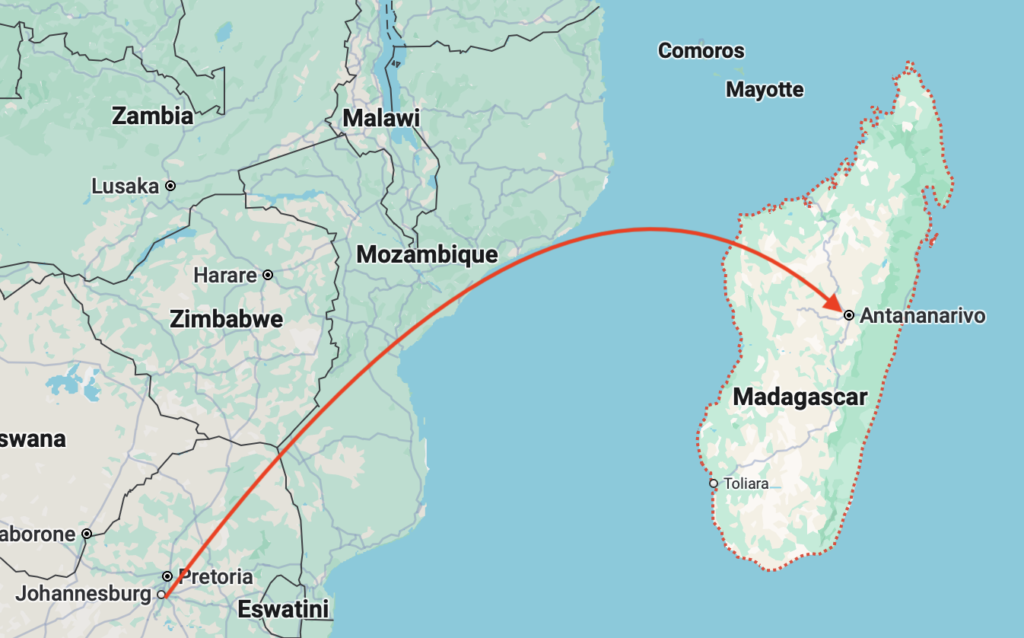
This was our first temple groundbreaking ceremony. Only five hundred people (mostly local dignitaries and Church leaders) were invited to the groundbreaking ceremony.
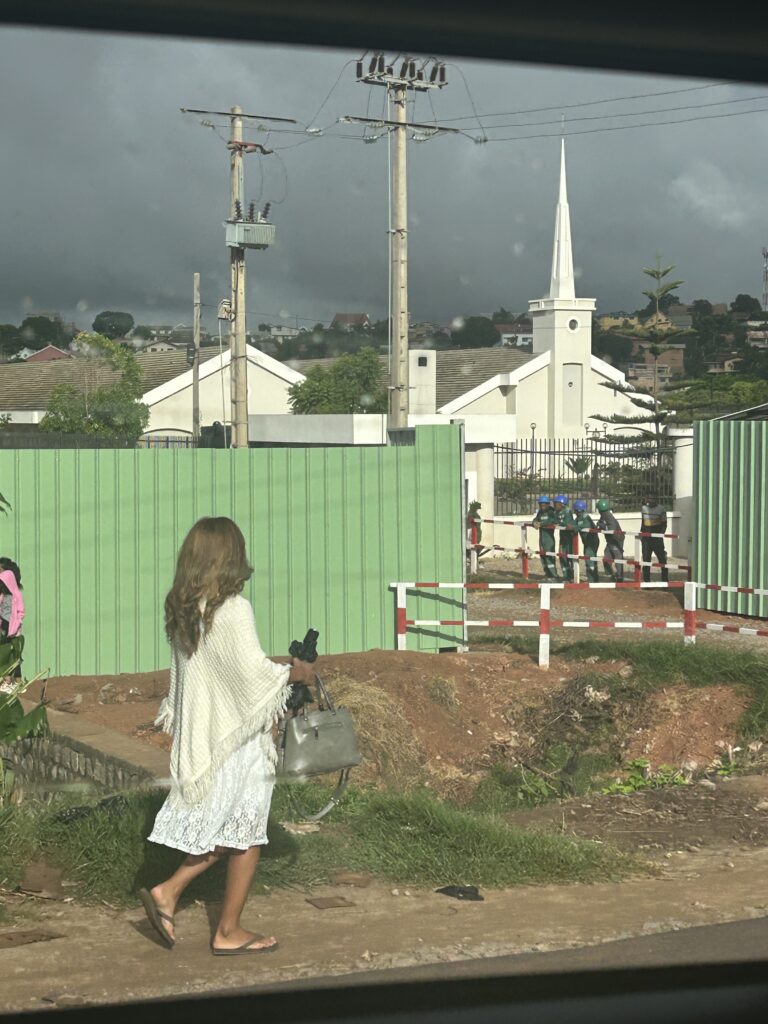
Attendees walking to the groundbreaking site. The Antananarivo Madagascar Temple will be located next to an existing stake center as seen in the picture above – the building on the right in the picture.
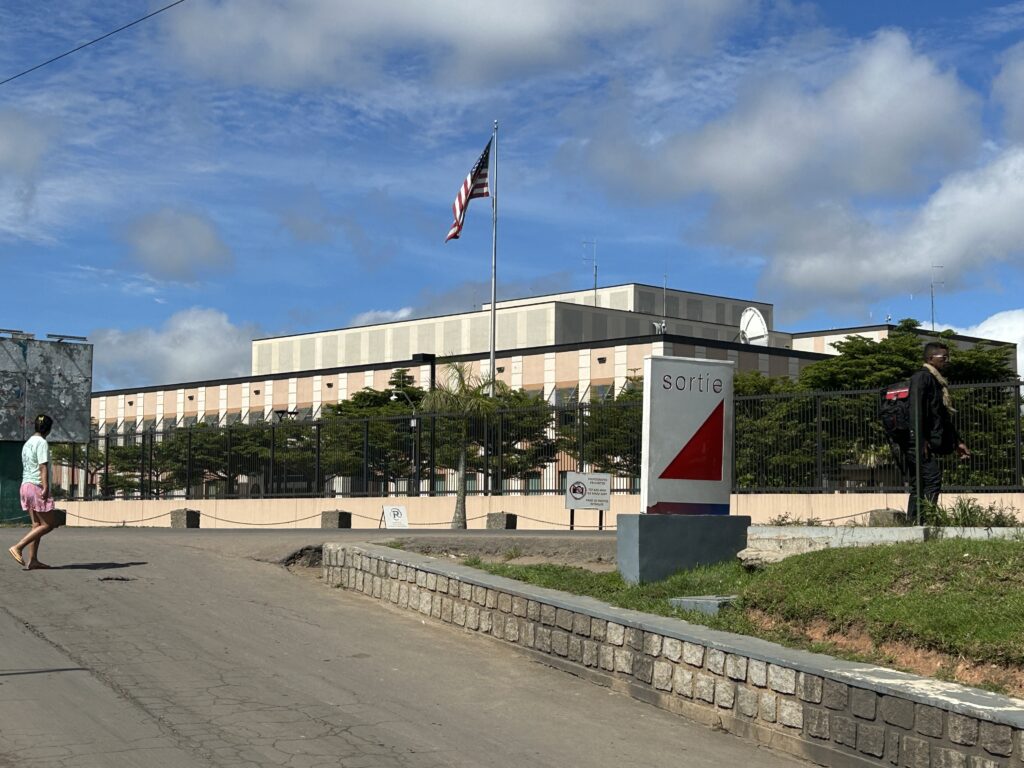
The temple is next door to the US Embassy.
Three Languages in Madagascar
I continue to be amazed, both here in Southern Africa, as well as in the Philippines, because people in these countries are multi-lingual often speaking 3+ different languages. In Madagascar there are three languages spoken: French (the country was ruled by the French since in the late 1800’s until its independence in the late 1960s), Malagasy – a local language, and English. Locals can speak these languages interchangeably and do so with ease. In South Africa, the people are also multi-lingual speaking at least three often more languages….simply amazing. I still struggle with English.
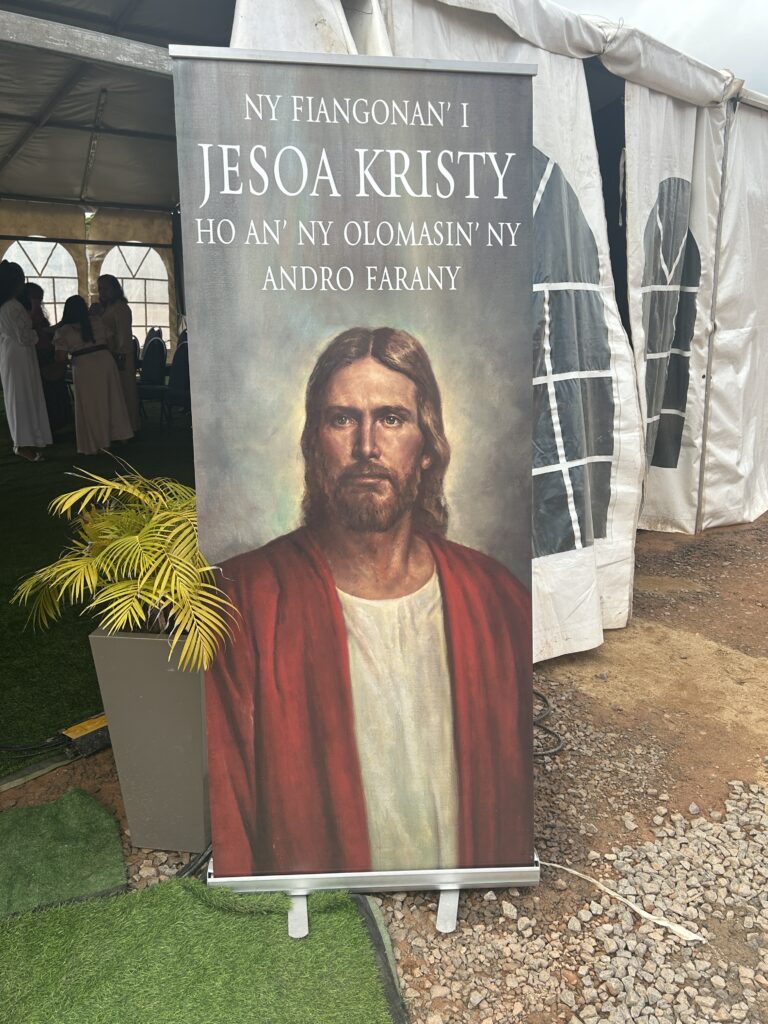
A banner (in Malagasy) at the tent entrance at the temple groundbreaking ceremony. in Antananarivo, Madagascar.
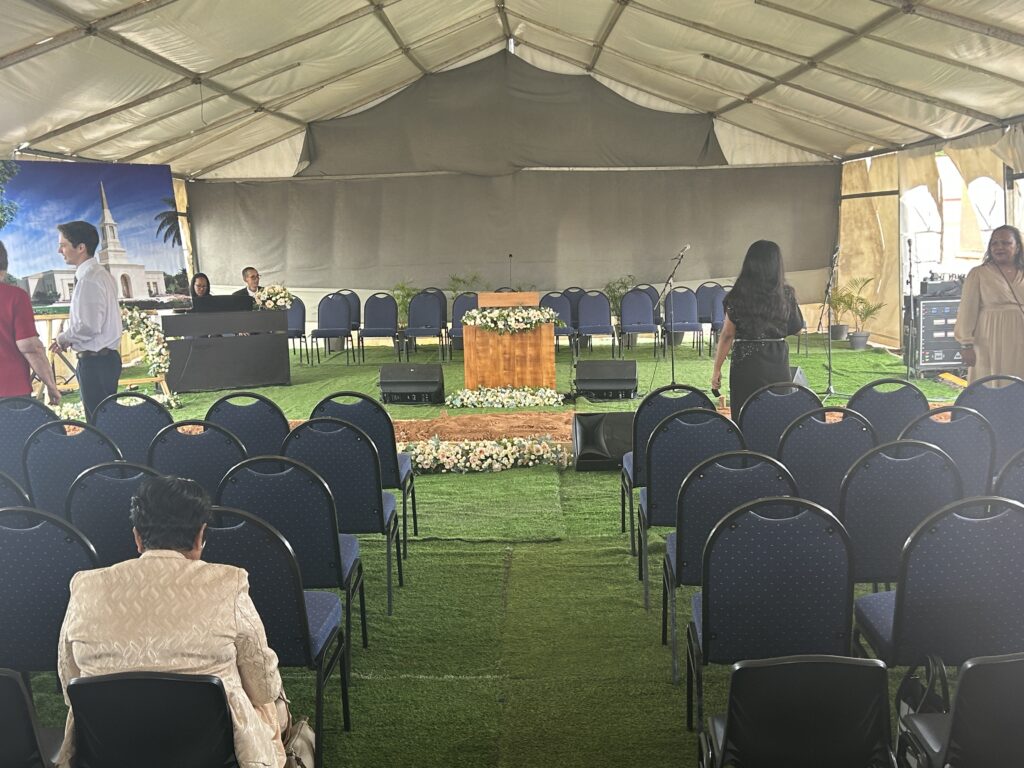
The actual groundbreaking ceremony was inside of a large tent.
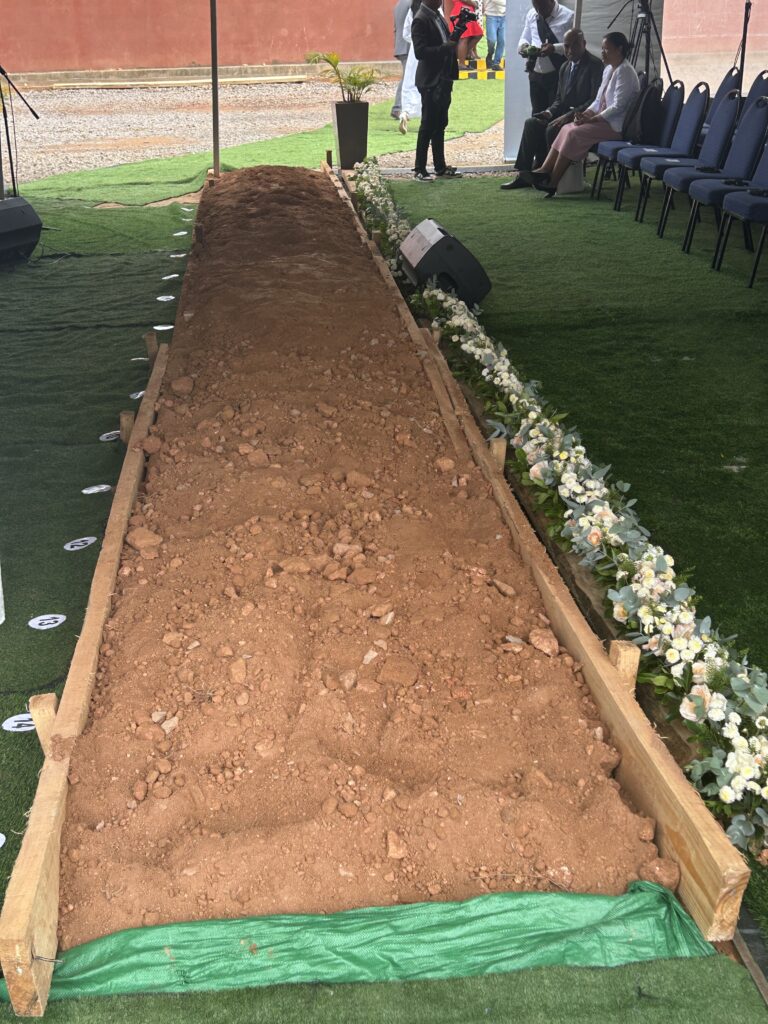
The pre-prepared groundbreaking dirt.
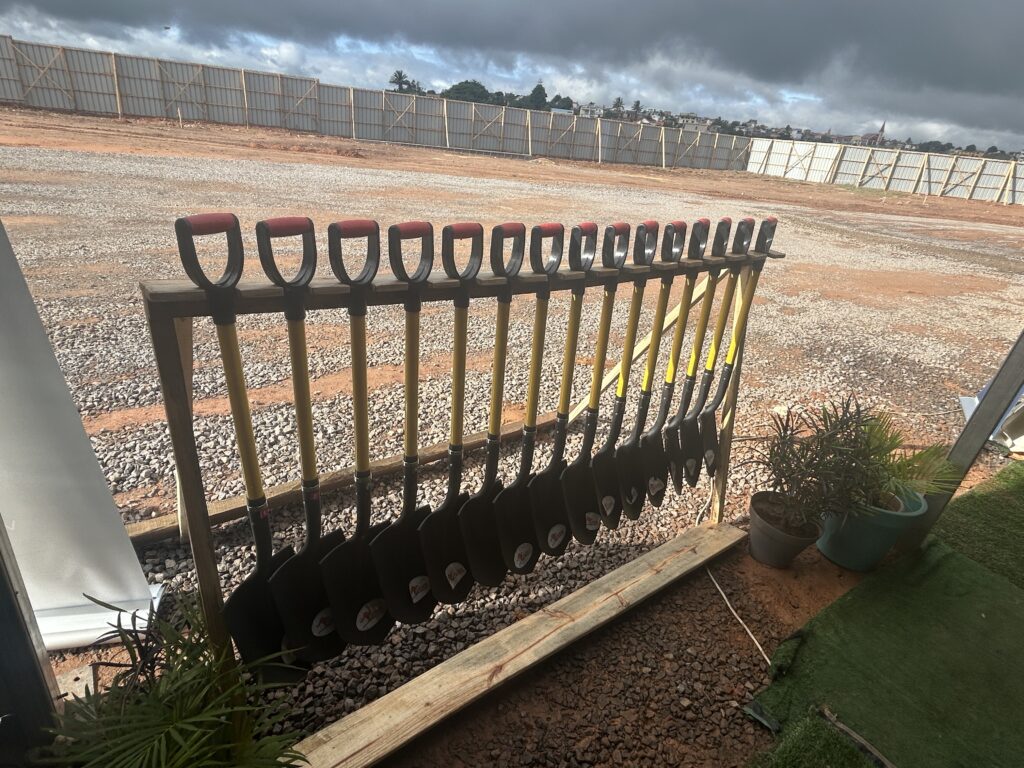
The fifteen groundbreaking ceremonial shovels used in the groundbreaking ceremony.
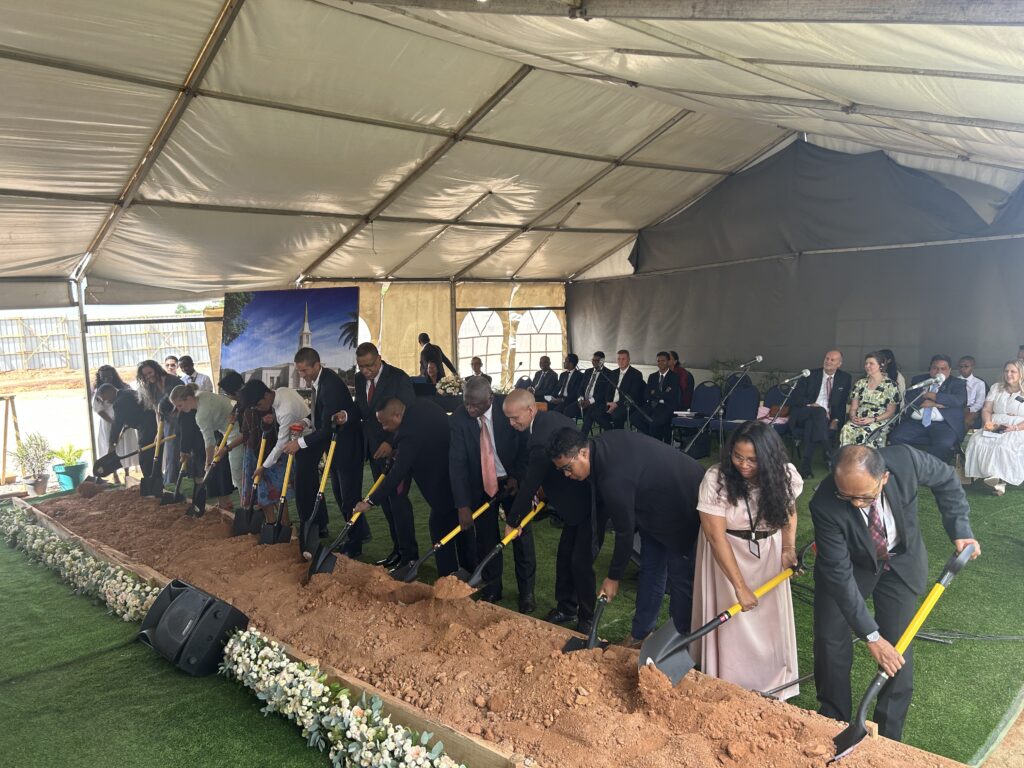
The ceremonial turning of the first shovel of dirt.
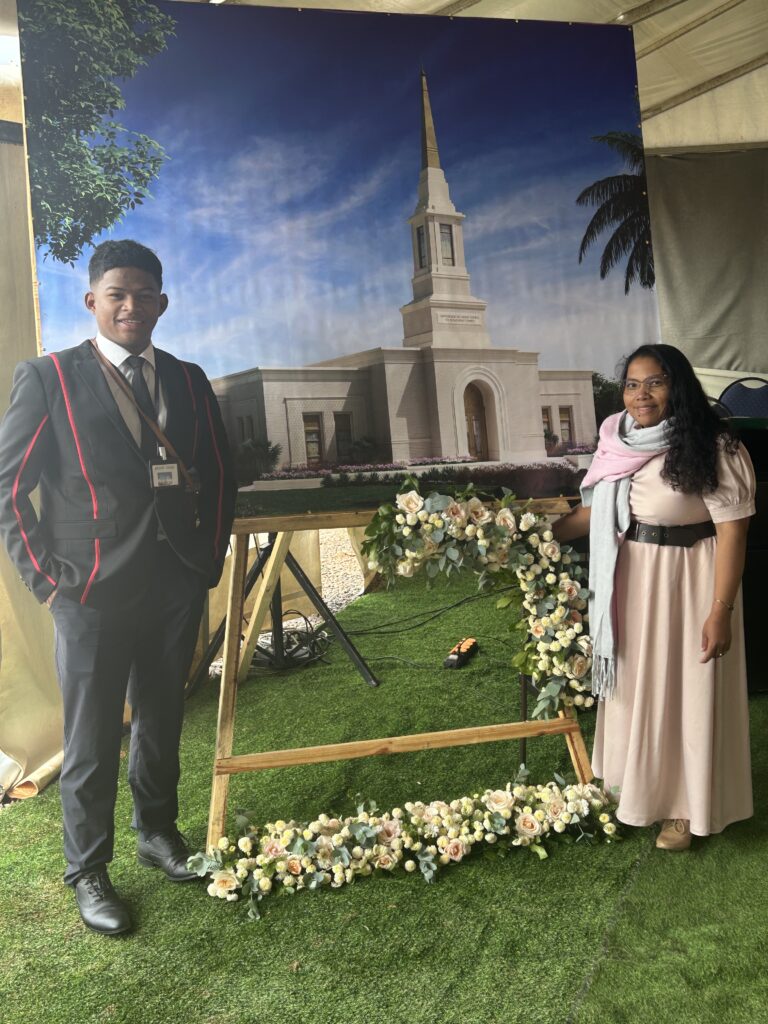
A young couple that will one day be sealed in “their” temple.
Other temple groundbreaking shovels.

In our offices in the Africa South Area complex, shovels used in previous groundbreaking ceremonies are on display. The shovels shown above are from the groundbreaking ceremonies for temples in Johannesburg, South Africa (far left) – 1982, Durban, South Africa – 2016, Kinshasa, Republic of the Congo – 2016, and Harare, Zimbabwe – 2020. A shovel will be added for the Antananarivo, Madagascar Groundbreaking in 2025.
Temples currently operating in Africa (5):
- Accra, Ghana
- Aba, Nigeria
- Durban, South Africa
- Johannesburg, South Africa
- Kinshasa, Democratic Republic of the Congo
Temples announced or under construction in Africa (17) with the current temples of:
- Antananarivo, Madagascar
- Beira, Mozambique
- Benin City, Nigeria
- Brazzaville, Republic of the Congo
- Calabar, Nigeria
- Cape Coast, Ghana
- Cape Town, South Africa
- Eket, Nigeria
- Harare, Zimbabwe
- Kampala, Uganda
- Kumasi, Ghana
- Lagos, Nigeria
- Ugo, Nigeria
- Luanda, Angola
- Mbuji-Mayi, Democratic Republic of the Congo
- Nairobi, Kenya
- Abidjan, Ivory Coast
- Freetown, Sierra Leone
It’s a Small World
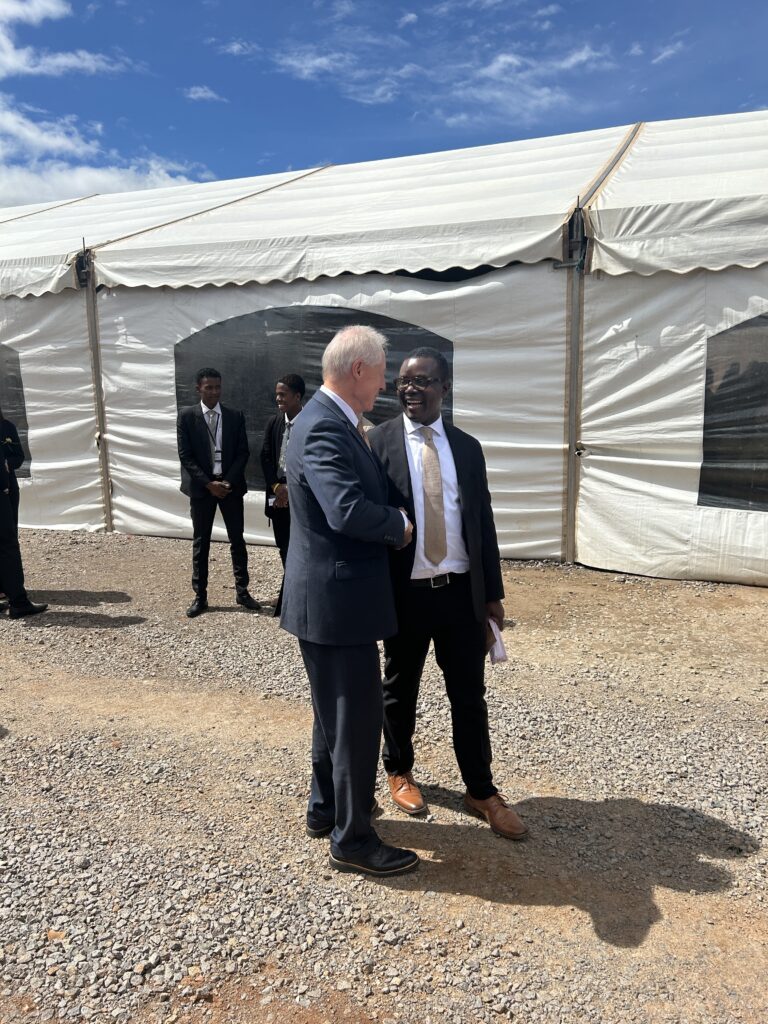
Elder Cooper talking to a local Madagascar official.
The above picture is Elder Cooper who is from Orange County, CA.
When he arrived in Johannesburg a few months ago to serve with his wife to serve a senior mission, I introduced ourselves and asked him where he was from…..he said, “Orange County, CA.” I told him, “I have a son that lives in Orange County, CA.”
He said, “What is your son’s name?”
I said, ” His name Justin Storm?” He smiled and told me when he served in a local Orange County Stake that he had called Justin to be a seminary teacher in the Lake Forest Ward a few years ago. Elder Cooper is serving in the Public Affairs Office for the Africa South Area and was in Madagascar attending the Antananarivo Temple Ground Breaking Ceremony.
Marcia Gets Involved
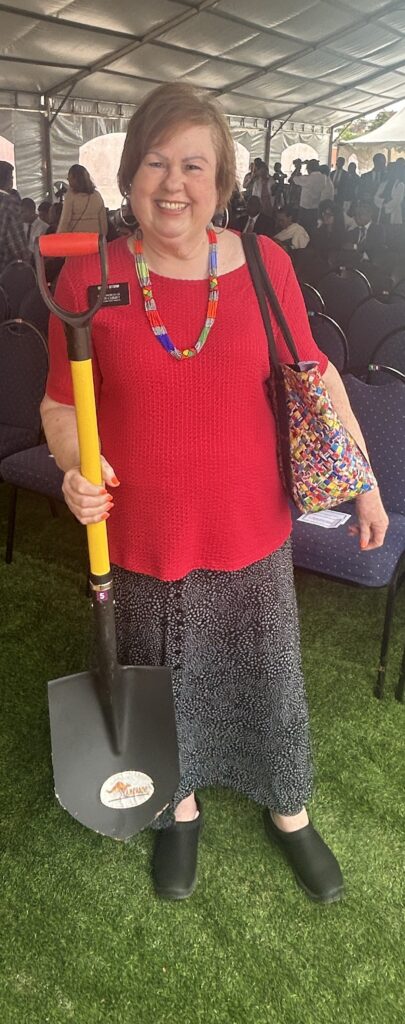
Marcia tries to always be in on the action.
Cape Town Temple Site
Recently, we had a chance to visit Cape Town, South Africa and while we were there we visited the site of the future Cape Town Temple.

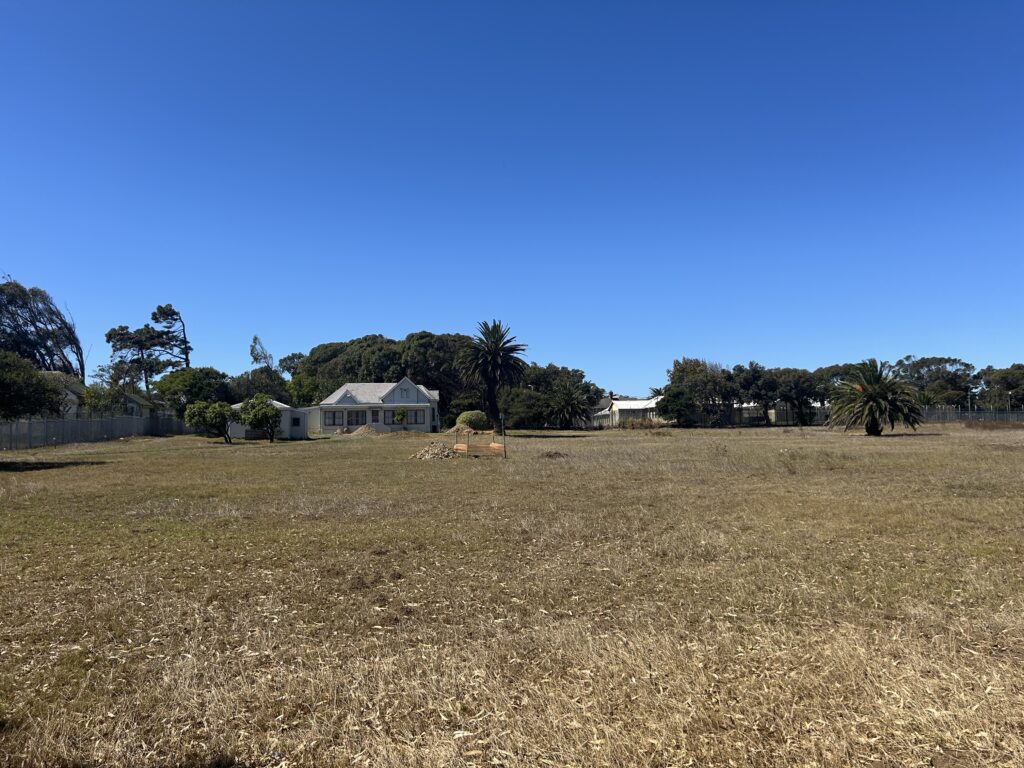
Site of the future Cape Town Temple – the small house in the background is the former Mission Home for the Cape Town Mission.
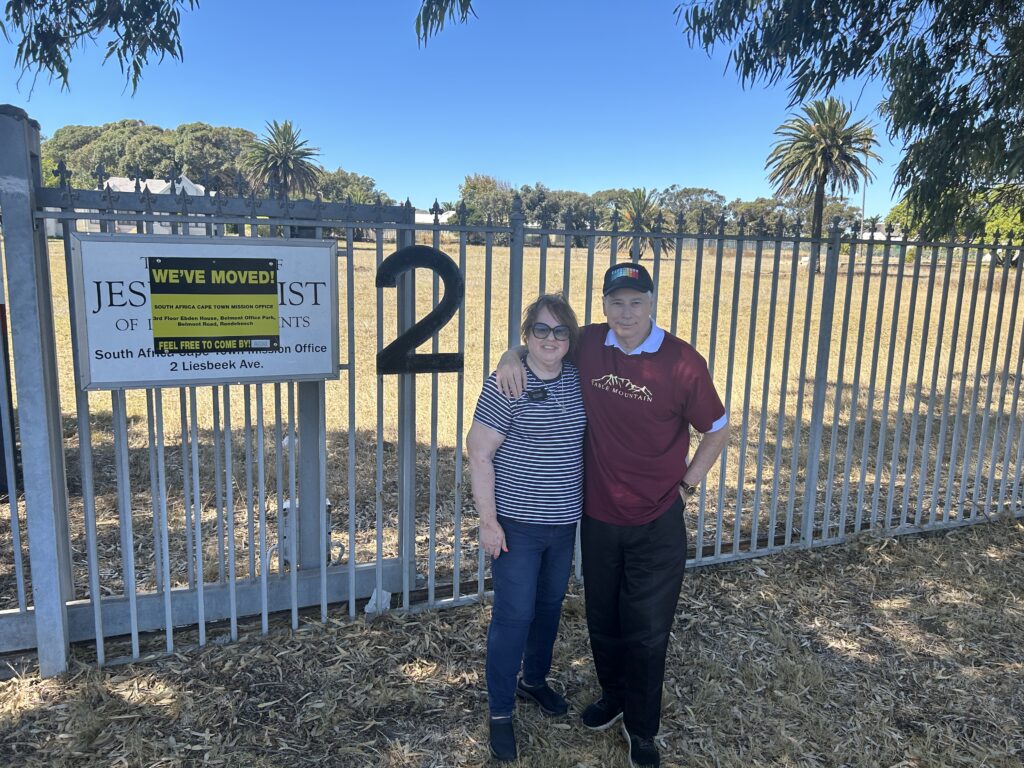
Marcia and Marvin at the temple site for the Cape Town Temple
What I continue to learn about South Africa…..
Being on a mission keeps us focused less on the things of the world and more on the spiritual side of life. Since we don’t watch local TV channels and we rarely read a newspaper, my connection with world news is primarily from the headlines that appear on YouTube.
During my first tour of missionary service in South Africa back in late 1960s and early 1970s, being from the US was looked on favorably by South Africans. I clearly remember walking down a street in Stilfontein, a small mining city several hundred miles southwest of Johannesburg, and seeing a newspaper with the headline “Man Lands on the Moon.” I grabbed the newspaper and read about Neil Armstrong stepping on to the moon. I didn’t get to see it on TV because at the time, there was no TV in South Africa. TV arrived in South Africa in 1976. These types of events and the relationship between the two countries at the time were mostly favorable.
Since the ending of apartheid in 1994, as black South Africans began to control their own political destiny, the US has not been a country that has always looked on favorably by the African National Party (ANC) the ruling-political party for most of the last thirty years. Since the ending of apartheid, the country has leaned to the political left and has become socialist oriented aligning with counties not friendly to the US.
Recently, a new bill was signed into law that allows the South African government under certain circumstances to expropriate (compulsory acquisition) of private property by government for public purposes that is deemed to be in the public interest. This legislation is called the Expropriation Act 13 of 2024. The rational for this law is to reverse some of the apartheid era injustices of land acquisitions by the white South Africans in times past.
This law has caused a deeper riff between the US and South Africa that recently lead to the South Africa Ambassador to the US being expelled from the US in March of 2025. While a law like this is controversial, and from an American perspective, is somewhat akin of offering reparations to African Americans for the sins of slavery in the US a 150 years ago. The question of how to compensate for the past inequities in a modern world has no easy answers but some of the political parties in South Africa may attempt to remedy the past by confiscating property.
The reason I mention this is not to make a political statement but to offer my own perspective of living in a country that is not a flag waving supporter or ally of the US. This is new for me. In the Philippines, the US is viewed as a very close ally and has been since World War II and Americans are looked on very favorably and are considered friends – even very close friends politically and economically. While senior couples are somewhat isolated from these types of issues, the negative view of America is still something that I totally didn’t expect to encounter living here.
If you haven’t followed this news, the current administration with some of its DOGE activities has resulted in US cutting a substantial amount of foreign aid to South Africa – even though South Africa was not friendly to the US. The discontinuance of this direct financial aid is going to have far a reaching impact on the South African people – much more so than its impact on the South Africa government.
Having witnessed some of the poverty in South Africa and in other African countries, my heart goes out to the people that need all of the assistance they can get. I have come to realize and appreciate how important the Church’s humanitarian efforts (along with the efforts of other charities) have been and will be in the future to countries that need help in overcoming some of the nearly insurmountable challenges.
Thought of the Day: When you are confronted with a dilemma, think celestial. When tested by temptation, think celestial. When life or loved ones let you down, think celestial. When someone dies ‘prematurely,’ think celestial. When someone lingers with a devastating illness, think celestial. When the pressures of life crowd in upon you, think celestial. As you recover from an accident or injury, as I am doing now, think celestial. – President Russell M. Nelson
Scripture of the Day: “Learn of me, and listen to my words; walk in the meekness of my Spirit, and you shall have peace in me.” Doctrine & Covenants 19:23

